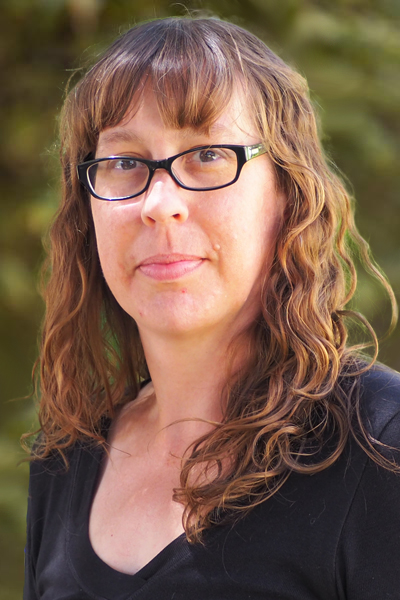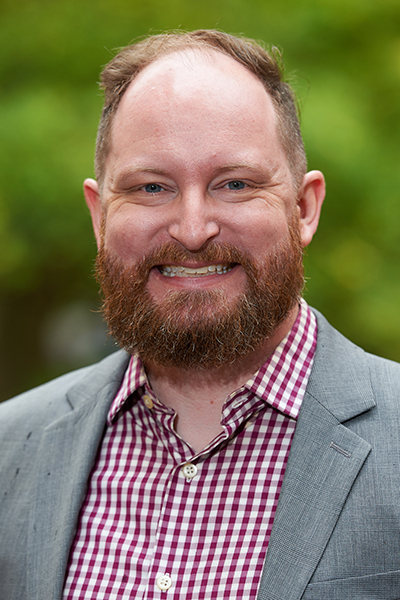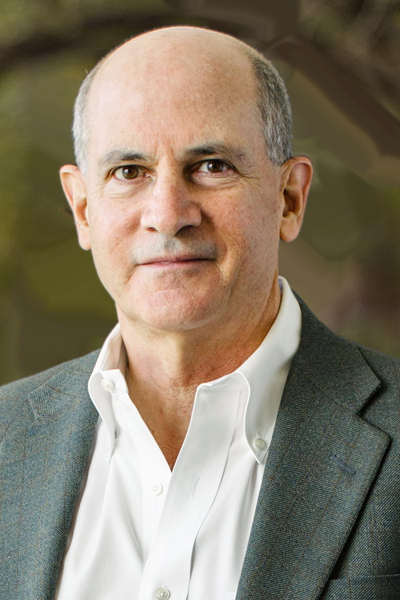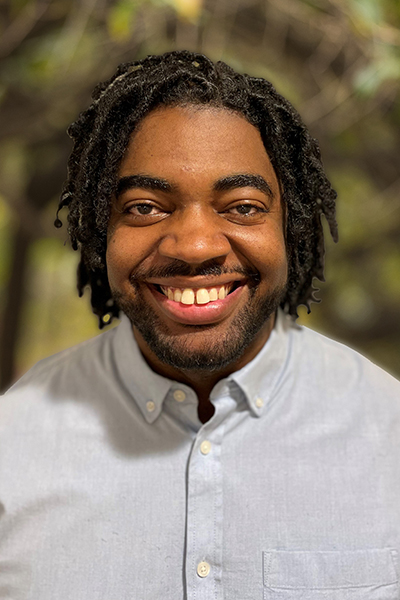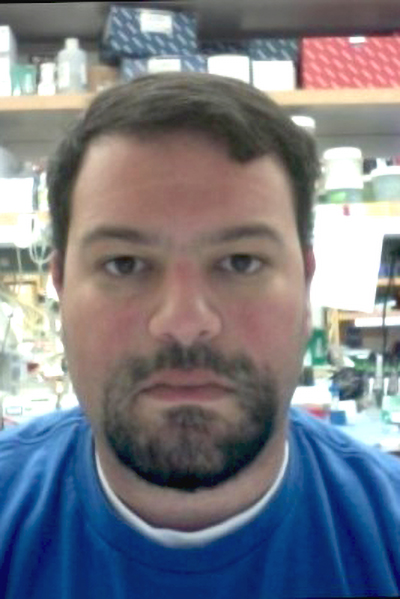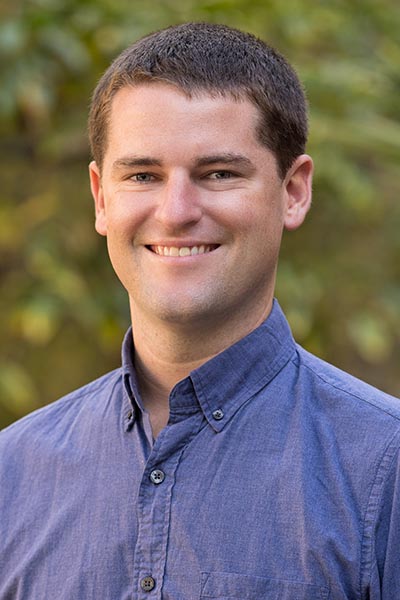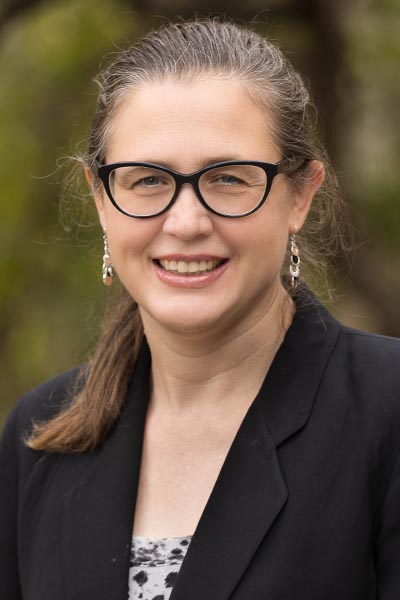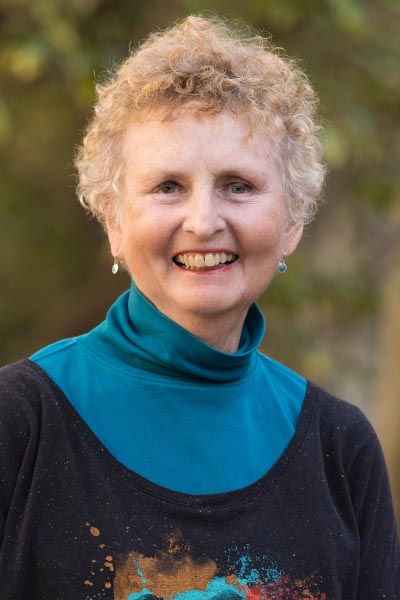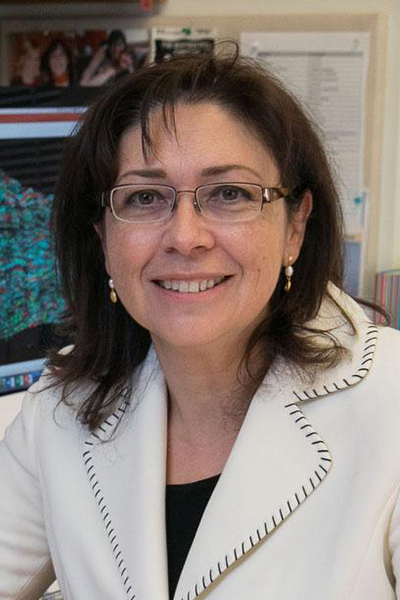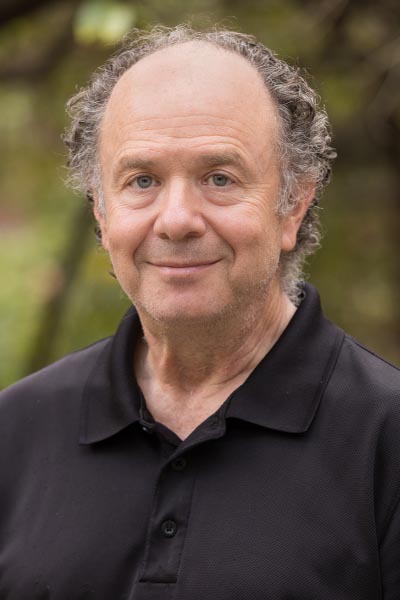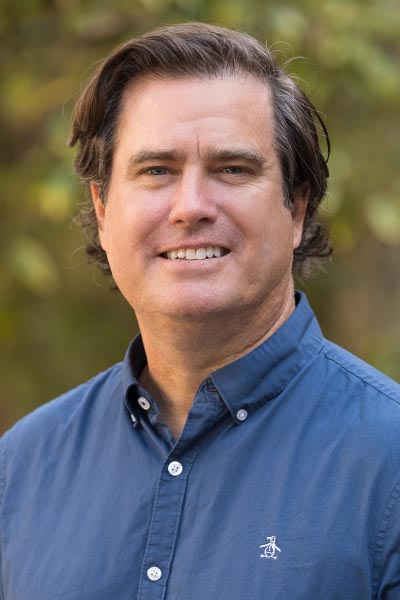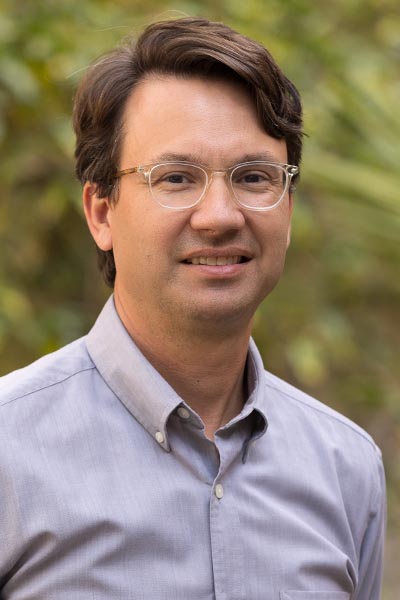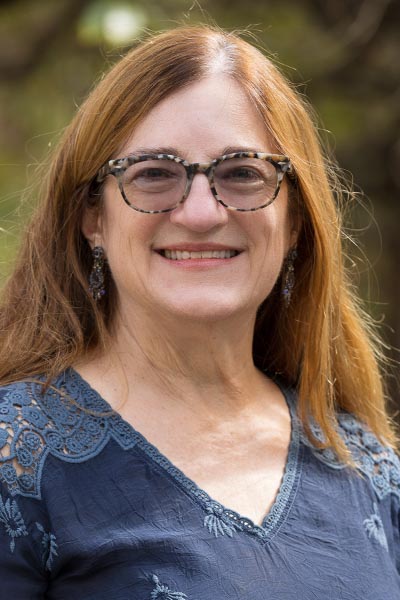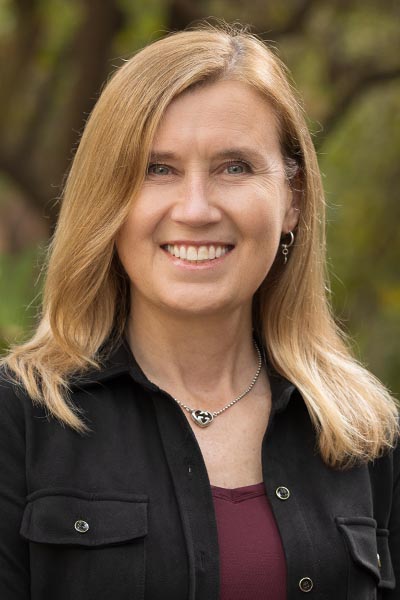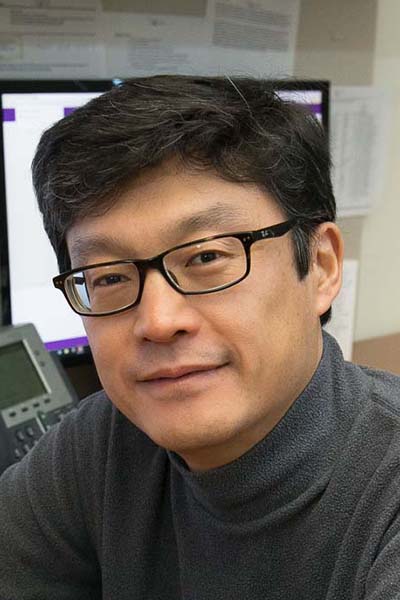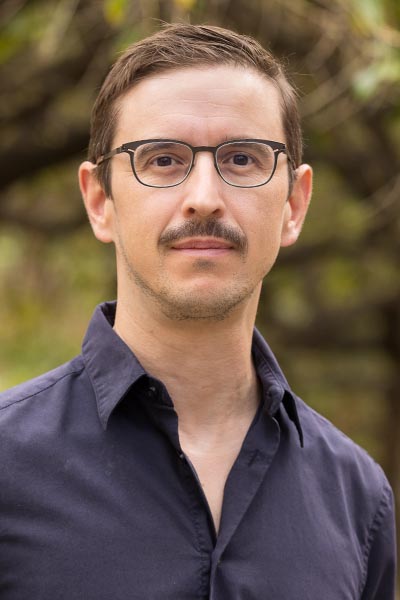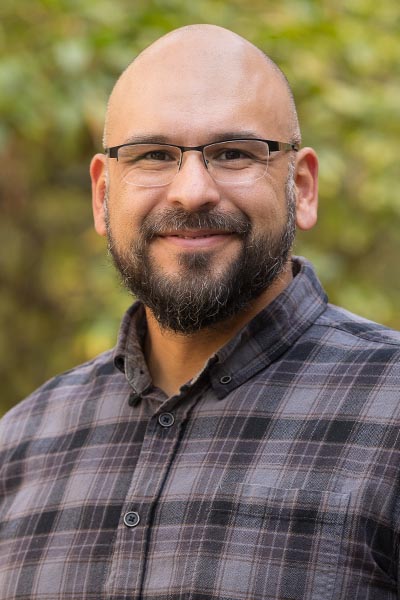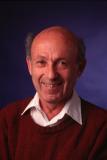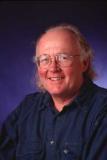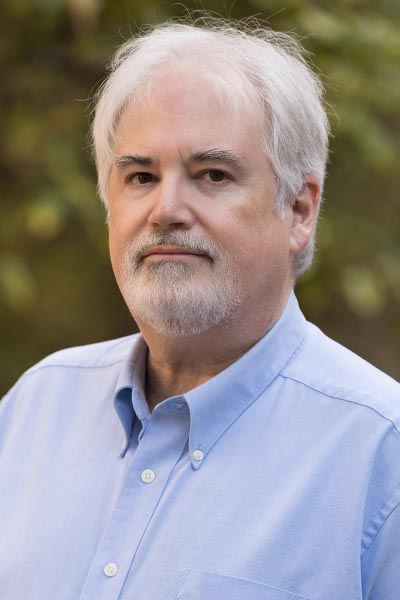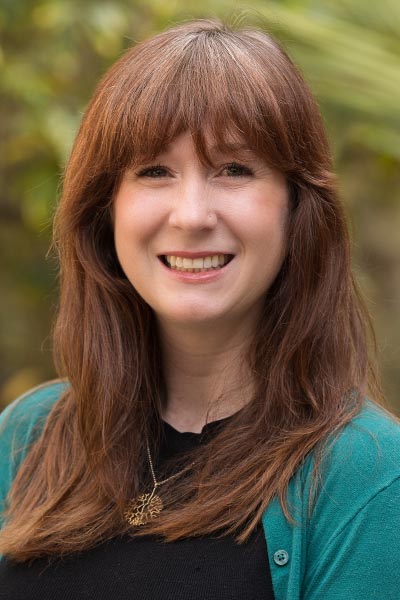Research Interests
Selected Publications
Research Interests
Selected Publications
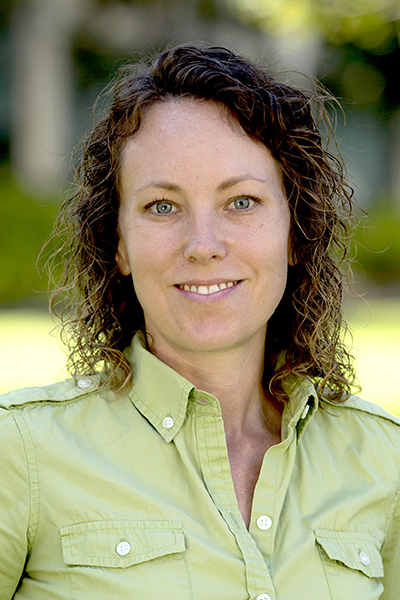
Dr. Jaimie Van Norman
email: jaimievannorman@g.ucla.edu
phone: 310-206-0661
office: 4014 Terasaki Life Sciences Building
Research Interests
Tissue patterning and organ development depend on spatiotemporal control and coordination of cell proliferation, growth, and specialization, but how is this achieved? Across biological systems, cell-cell communication and cell polarity are considered fundamental to these developmental processes.
Using Arabidopsis as a model organism, my lab focuses on understanding the relationship between cell polarity and developmental events. We have identified a group of receptor kinases, POLARLY LOCALIZED KINASEs (PLKs), that polarize to different plasma membrane domains in root cells and function in development. Two of these polarized receptor kinases function to repress root cell divisions and organ size, directly linking lateral cell polarity with tissue patterning and organ size in the radial and longitudinal axes. We also find that contra-polarity of two PLKs is achieved through separate cellular mechanisms, shifting ideas about how plant protein polarity is achieved. We are working to characterize 5 more novel PLKs and next steps include connecting the PLKs to the regulatory networks that operate in cell division and fate specification. We expect our findings will reveal unique plant cell polarity domains along with details about their establishment and maintenance, identify novel PLK functions, and, ultimately, uncover mechanisms underlying repression of cell division with potential translational and therapeutic value.
Selected Publications
Oscillating gene expression determines competence for periodic Arabidopsis root branching
MA Moreno-Risueno, JM Van Norman, A Moreno, J Zhang, SE Ahnert, ...
Science 329 (5997), 1306-1311
Spatiotemporal regulation of cell-cycle genes by SHORTROOT links patterning and growth
R Sozzani, H Cui, MA Moreno-Risueno, W Busch, JM Van Norman, ...
Nature 466 (7302), 128-132
SCARFACE encodes an ARF-GAP that is required for normal auxin efflux and vein patterning in Arabidopsis
LE Sieburth, GK Muday, EJ King, G Benton, S Kim, KE Metcalf, L Meyers, ...
The Plant Cell 18 (6), 1396-1411
To branch or not to branch: the role of pre-patterning in lateral root formation
JM Van Norman, W Xuan, T Beeckman, PN Benfey
Development 140 (21), 4301-4310
Components of the Arabidopsis mRNA decapping complex are required for early seedling development
DC Goeres, JM Van Norman, W Zhang, NA Fauver, ML Spencer, ...
The Plant Cell 19 (5), 1549-1564
Intercellular communication during plant development
JM Van Norman, NW Breakfield, PN Benfey
The Plant Cell 23 (3), 855-864
Periodic root branching in Arabidopsis requires synthesis of an uncharacterized carotenoid derivative
JM Van Norman, J Zhang, CI Cazzonelli, BJ Pogson, PJ Harrison, ...
Proceedings of the National Academy of Sciences 111 (13), E1300-E1309
BYPASS1 negatively regulates a root-derived signal that controls plant architecture
JM Van Norman, RL Frederick, LE Sieburth
Current biology 14 (19), 1739-1746
Dissecting the biosynthetic pathway for the bypass1 root‐derived signal
JM Van Norman, LE Sieburth
The Plant Journal 49 (4), 619-628
VARICOSE, a WD-domain protein, is required for leaf blade development
MK Deyholos, GF Cavaness, B Hall, E King, J Punwani, J Van Norman, ...
Oxford University Press for The Company of Biologists Limited 130 (26), 6577 …
Symmetry breaking in plants: molecular mechanisms regulating asymmetric cell divisions in Arabidopsis
JJ Petricka, JM Van Norman, PN Benfey
Cold Spring Harbor perspectives in biology 1 (5), a000497
Auxin-induced signaling protein nanoclustering contributes to cell polarity formation
X Pan, L Fang, J Liu, B Senay-Aras, W Lin, S Zheng, T Zhang, J Guo, ...
Nature communications 11 (1), 3914
Arabidopsis thaliana as a model organism in systems biology
JM Van Norman, PN Benfey
Wiley Interdisciplinary Reviews: Systems Biology and Medicine 1 (3), 372-379
Membrane receptor-mediated mechano-transduction maintains cell integrity during pollen tube growth within the pistil
X Zhou, J Lu, Y Zhang, J Guo, W Lin, JM Van Norman, Y Qin, X Zhu, ...
Developmental Cell 56 (7), 1030-1042. e6
A plane choice: coordinating timing and orientation of cell division during plant development
MR Facette, CG Rasmussen, JM Van Norman
Current Opinion in Plant Biology 47, 47-55
The Arabidopsis Receptor Kinase IRK Is Polarized and Represses Specific Cell Divisions in Roots
R Campos, J Goff, C Rodriguez-Furlan, JM Van Norman
Developmental Cell 52 (2), 183-195. e4
Asymmetry and cell polarity in root development
JM Van Norman
Developmental Biology 419 (1), 165-174
BYPASS1: synthesis of the mobile root-derived signal requires active root growth and arrests early leaf development
JM Van Norman, C Murphy, LE Sieburth
BMC plant biology 11, 1-10
A series of dual‐reporter vectors for ratiometric analysis of protein abundance in plants
A Khosla, C Rodriguez‐Furlan, S Kapoor, JM Van Norman, DC Nelson
Plant direct 4 (6), e00231
Transcriptional switches direct plant organ formation and patterning
MA Moreno-Risueno, JM Van Norman, PN Benfey
Current topics in developmental biology 98, 229-257
Distinct mechanisms orchestrate the contra-polarity of IRK and KOIN, two LRR-receptor-kinases controlling root cell division
C Rodriguez-Furlan, R Campos, JN Toth, JM Van Norman
Nature communications 13 (1), 235
In the absence of BYPASS1-related gene function, the bps signal disrupts embryogenesis by an auxin-independent mechanism
DK Lee, JM Van Norman, C Murphy, E Adhikari, JW Reed, LE Sieburth
Development 139 (4), 805-815
Membrane nanodomains: dynamic nanobuilding blocks of polarized cell growth
X Pan, P Pérez-Henríquez, JM Van Norman, Z Yang
Plant Physiology 193 (1), 83-97
Polarly localized receptor-like kinases PXC2 and IRK act redundantly during Arabidopsis root development in the radial axis
JB Goff
bioRxiv
Root System Patterning: Auxin Synthesis at the Root Periphery
JM Van Norman
Current Biology 25 (11), R460-R462
A G-type lectin receptor kinase negatively regulates Arabidopsis immunity against root-knot nematodes
D Zhou, D Godinez-Vidal, J He, M Teixeira, J Guo, L Wei, JM Van Norman, ...
Plant Physiology 193 (1), 721-735
A G-lectin Receptor Kinase is a Negative Regulator of Arabidopsis Immunity Against Root-Knot Nematode Meloidogyne incognita
D Zhou, D Godinez-Vidal, J He, M Teixeira, J Guo, L Wei, JM Van Norman, ...
bioRxiv, 2021.09. 07.459316
Arabidopsis root: a model organ in plant genomics
JM Van Norman, LM Liberman, PN Benfey
Plant Roots: The Hidden Half, 2.1-2.17
A Course-Based Undergraduate Research Experience in CRISPR-Cas9 Experimental Design to Support Reverse Genetic Studies in Arabidopsis thaliana
A Mills, V Jaganatha, A Cortez, M Guzman, JM Burnette III, M Collin, ...
Journal of microbiology & biology education 22 (2), 10.1128/jmbe. 00155-21
PXC2, a polarized receptor kinase, functions to repress ground tissue cell divisions and restrict stele size
J Goff, RMIK Rony, Z Ge, J Hajný, C Rodriguez-Furlan, J Friml, ...
bioRxiv, 2021.02. 11.429611
Hierarchical global and local auxin signals coordinate cellular interdigitation in Arabidopsis
P Pérez-Henríquez, H Li, X Zhou, X Pan, W Lin, W Tang, S Nagawa, D Lin, ...
BioRxiv, 2024.06. 17.599171
PIN2-mediated self-organizing transient auxin flow contributes to auxin maxima at the tip of Arabidopsis cotyledons
P Perez-Henriquez, S Nagawa, Z Liu, X Pan, M Michniewicz, W Tang, ...
bioRxiv, 2024.06. 24.599792
Plant cell polarity: The many facets of sidedness
J Dong, J Van Norman, V Žárský, Y Zhang
Plant physiology 193 (1), 1-5
Confocal Analysis of Arabidopsis Root Cell Divisions in 3D: A Focus on the Endodermis
R Campos, JM Van Norman
Plant Cell Division: Methods and Protocols, 181-207
A course-based undergraduate research experience for high-throughput reverse genetic studies in Arabidopsis thaliana with CRISPR-Cas9
A Mills, V Jagannatha, A Cortez, M Guzman, JM Burnette III, M Collin, ...
Preprints
Softening the Breaks: Releasing a Key Negative Immune Regulator Results in Enhanced Resistance to Nematodes
MA Teixeira, D Zhou, J He, D Godinez-Vidal, J Van Norman, I Kaloshian
2019 IS-MPMI XVIII Congress
Pluripotency of a founding field: rebranding developmental biology
CD Rogers, C Amemiya, S Arur, L Babonis, M Barresi, M Bartlett, ...
Development 151 (3)
Distinct ADP-ribosylation factor-GTP exchange factors govern the opposite polarity of 2 receptor kinases
C Rodriguez-Furlan, A Emami, JM Van Norman
Plant Physiology 194 (2), 673-683
Sucrose-responsive osmoregulation of plant cell size by a long non-coding RNA
J Hajny, T Travnickova, RMIK Rony, S Sacharowski, M Krzyszton, ...
bioRxiv, 2024.02. 19.581113
Radial askew endodermal cell divisions reveal IRK functions in division orientation
RMIK Rony, R Campos, JM Van Norman
bioRxiv, 2023.03. 31.534810
WALLFLOWER, a RLK, simultaneously localizes to opposite sides of root hair cells & functions to position hairs
JN Toth, C Rodriguez-Furlan, JM Van Norman
bioRxiv, 2023.03. 16.533027
Girl power: NORTIA polarization seals pollen tube fate
C Rodriguez-Furlan, JM Van Norman
Developmental Cell 56 (21), 2923-2925
SHR–SCR regulates cortical cell division and nodulation
MA Ashraf, JM Van Norman
Molecular Plant 14 (2), 198
Cell signalling and gene regulation.
JM Van Norman, LC Strader, R Sozzani
Editorial overview: Directionality and precision-how signaling and gene regulation drive plant development and growth
JM Van Norman, LC Strader, R Sozzani
Current Opinion in Plant Biology 57, A1-A3
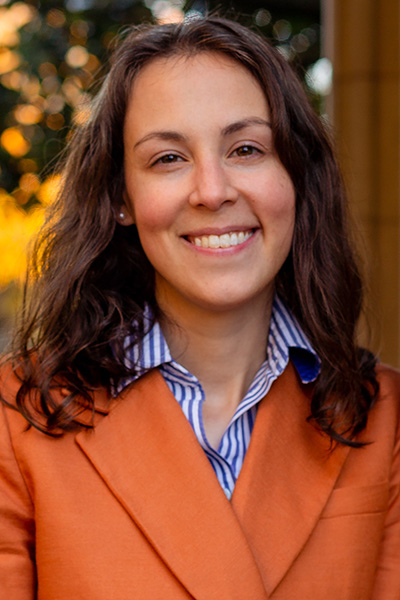
Dr. Rachel Shahan
email: rshahan@ucla.edu
phone: (424) 259-5568
office: 4018 Terasaki Life Sciences Building.
website
Research Interests
The proper formation and function of an organ requires cells with distinct characteristics. However, cells from both animals and plants can be reprogrammed to ‘forget’ their original identity and acquire a new fate. Cell fate plasticity is particularly important in plants because it enables the production of new organs. Plant embryo formation produces only a rudimentary body consisting of a root, stem, and a few leaves. The body plan is elaborated post-embryonically by the exquisite branching of roots and shoots. Understanding organ neogenesis in plants has broad implications ranging from regeneration to agriculture and plant-based mitigation strategies for climate change.
My lab combines cutting edge genetic, genomic, and imaging approaches to investigate how distinct cell types and cell states contribute to elaboration of the plant body plan. Specifically, we want to understand 1) what specifies cell identity and 2) how a cell can change its fate or state in response to intrinsic and extrinsic cues. Our long-term goal is to understand how cell fate is programmed to initiate the formation of new tissues and organs in different developmental and environmental contexts.
Selected Publications
Nolan TM and Shahan R (2023) Resolving plant development in space and time with single-cell genomics. Current Opinion in Plant Biology. 76:102444. DOI: 10.1016/j.pbi.2023.102444.
Nolan TM, Vukasinovic N, Hsu C-W, Zhang J, Vanhoutte I, Shahan R, Taylor IW, Greenstreet L, Heitz M, Afanassiev A, Wang P, Szekely P, Brosnan A, Yin Y, Schiebinger G, Ohler U, Russinova E, Benfey PN (2023) Brassinosteroid gene regulatory networks at cellular resolution in the Arabidopsis root. Science. 31; 379 (6639). DOI: 10.1126/science.adf4721.
Shahan R, Hsu C-W, Nolan TM, Cole BJ, Taylor IW, Greenstreet L, Zhang S, Afanassiev A, Vlot AHC, Schiebinger G, Benfey PN, Ohler U (2022) A single cell Arabidopsis root atlas reveals developmental trajectories in wild type and cell identity mutants. Developmental Cell. 57(4): 543-560. DOI: 10.1016/j.devcel.2022.01.008.
Hsu C-W, Shahan R, Nolan TM, Benfey PN, Ohler U (2022) Protocol for fast scRNA-seq raw data processing using scKB and non-arbitrary quality control with COPILOT. STAR Protocols. 3(4):101729. DOI: 10.1016/j.xpro.2022.101729.
Shahan R, Li D, and Liu Z (2019) Identification of genes preferentially expressed in wild strawberry receptacle fruit and demonstration of their promoter activities. Horticulture Research. 6:50.
Shahan R, Zawora C, Sittmann J, Wight H, Wang W, Mount S, and Liu Z (2018) Consensus co-expression network analysis identifies key regulators of flower and fruit development in wild strawberry. Plant Physiology. 178(1): 202-216.
Darwish O, Shahan R, Liu Z, Slovin JP, Alkharouf N (2015) Reannotation of the woodland strawberry (Fragaria vesca) genome. BMC Genomics. 16(1):29.
Kang C, Darwish O, Geretz A, Shahan R, Alkharouf N, Liu Z (2013) Genome-scale transcriptomic insights into early stage fruit development in woodland strawberry Fragaria vesca. The Plant Cell. 25(6):1960-1978.
Research Interests
We work to identify and understand new regulators of cellular infiltration into tissues; our ultimate goal is to enable their modulation to improve symptoms in diseases such as cancer and autoimmunity. We utilize fruit fly genetics for discovery and then apply in vivo imaging, biophysical approaches, mass spectrometry, metabolomics and high throughput sequencing to explore function. We extend these findings into vertebrate models; one current focus is a turbocharger of mitochondrial energy production and its importance for immunology and the brain.
Selected Publications
Akhmanova, M., Emtenani, S., Krueger, D., Gyoergy, A., Guarda, M., Vlasov, M., Vlasov, F., Akopian, A., Ratheesh, A., De Renzis, S., Siekhaus, D.E. (2022) Cell division in tissues enables macrophage infiltration. Science 376, 394-6.
Emtenani, S., Martin, E., Gyoergy, A., Bicher, J., Genger, J.W., Hurd, T.R., Koecher, T., Berthaler, A. Rangan, P, Siekhaus, D.E. (2022) Macrophage mitochondrial bioenergetics and tissue invasion are promoted by an Atossa-Porthos axis in Drosophila. The EMBO Journal e109049 1-29
Roblek, M., Bicher, J., van Gogh, M., Gyoergy, A., Seebock, R. Szulc, B., Damme, M., Olczak, M, Bursig, L., Siekhaus, D.E. (2022) The solute carrier MFSD1 decreases 1 Integrin’s activation status and thus metastasis. Frontiers in Oncology 12, 777634 1-16
Belyaeva, V., Wachner, S., Gyoergy, A., Emtenani, S., Gridchyn, I., Akhmanova, M., Linder, M., Sibilia, M., Siekhaus, D.E. (2022) Fos regulates macrophage infiltration against surrounding tissue resistance by a cortical actin-based mechanism in Drosophila. PLOS Biology 20(1): e3001494 1-36
Valoskova, K., Biebl, J., Roblek, M., Emtenani , S., Gyoergy, A., Misova, M., Ratheesh, A., Shkarina, K., Larsen, I.S.B, Vakhrushev, S.Y., Clausen, H., Siekhaus, D.E. (2019) A conserved MFS orchestrates a subset of O-glycosylation to facilitate macrophage dissemination and tissue invasion. Elife e41801 1-41
Ratheesh, A, Biebl, J., Vesela, J., Smutny, M., Papusheva, E. Krens, S.F.G, Kaufmann, W., Gyoergy, A., Casano, A.M., Siekhaus D.E. (2018) Drosophila TNF modulates tissue tension in the embryo to facilitate macrophage invasive migration. Developmental Cell 45(3):331-346
Gyoergy, A., Roblek, M., Ratheesh, A., Valoskova, K., Belyaeva, V., Wachner, S., Matsubayashi, Y., Sanchez-Sanchez, B.J., Stramer, B., and Siekhaus D.E. (2018) Tools allowing independent visualization and genetic manipulation of Drosophila melanogaster macrophages and surrounding tissues. G3 (Bethesda) 8(3):845-857
Matsubayashi, Y., Louani, A., Dragu, A., Sánchez-Sánchez, B.J., Serna-Morales, E., Yolland, L., Gyoergy, A., L Vizcay, G., Fleck, R.A., Heddleston, J.M., Chew, T.L., Siekhaus D., Stramer B. (2017) A moving source of matrix components is essential for de novo basement membrane formation. Current Biology 27(22):3526-34
Siekhaus, D., Haesemeyer, M., Moffitt, O. and Lehmann, R. (2010) RhoL controls invasion and Rap1 localization during immune cell transmigration in Drosophila. Nature Cell Biology 12(6):605-610
Research Interests
Selected Publications
Research Interests
Stem cells exist in most organs in the body and are responsible for tissue homeostasis and repair. These rare cells hold the promise of novel therapeutics for degenerative diseases for which there are currently no cures or even effective treatments. Many questions remain unanswered about how stem cell functions are regulated and how they are impacted by changes in the local and systemic environment during aging or in disease conditions. Using skeletal muscle and the resident muscle stem cells as a model system, our laboratory seeks to understand how stem cells function, how stem cells change with age, and how to restore youthful function to aged stem cells. We take a multi-omics approach to identify critical factors and pathways that regulate fundamental features and processes of muscle stem cells, including the maintenance of quiescence and self-renewal. We use gene editing approaches (CRISPR) both for screening and for specific genetic modifications to study stem cell function, and we develop genetically engineered mice for the purposes of cell labeling, lineage tracing, cell depletion, and bio-orthogonal chemistry. In addition to basic stem cell research, we have pre-clinical translational projects exploring mechanisms of disease progression and experimental therapeutics for muscular dystrophies, and tissue engineering approaches for functional restoration following muscle trauma.
Selected Publications
Colville A, Liu J-Y, Rodriguez-Mateo C, Thomas S, Ishak HD, Zhou R, Klein JDD, Morgens DW, Goshayeshi A, Salvi JS, Yao D, Spees K, Dixon SJ, Rhee JW, Lai C, Wu JC, Bassik MC, Rando TA (2023) Death-seq identifies regulators of cell death and senolytic therapies. Cell Metabol, 35: 1814-1829.
Liu L, Kim S, Buckley MT, Reyes JM, Kang J, Tian L, Wang M, Lieu A, Mao M, Mateo-Rodriguez C, Ishak HD, Jeong M, Wu JC, Goodell MA, Brunet A, Rando TA (2023) Exercise reprograms the inflammatory landscape of multiple stem cell compartments during mammalian aging. Cell Stem Cell, 30: 689-705.
de Morrée A, Rando TA (2023) Regulation of adult stem cell quiescence and its functions in the maintenance of tissue integrity. Nature Rev Mol Cell Biol, 24: 334-354.
Benjamin DI, Brett JO, Both P, Benjamin JS, Ishak HL, Kang J, Kim S, de Morree A, Arjona M, Nutter CW, Tan JH, Dulay H, Louie SM, Nomura DK, Rando TA (2023) Multiomics reveals glutathione metabolism as a driver of bimodality during stem cell aging. Cell Metabol, 35: 472-486.
Brunet A, Goodell MA, Rando TA (2023) Ageing and rejuvenation of tissue stem cells and their niches. Nature Rev Mol Cell Biol, 24: 45-62.
Eugenis I, Wu D, Hu C, Chiang G, Huang NF, Rando TA (2022) Scalable macroporous hydrogels enhance stem cell treatment of volumetric muscle loss. Biomaterials, 290: 121818.
Benjamin DI, Both PA, Benjamin JS, Nutter CW, Tan JH, Kang J, Machado LA, Klein JDD, de Morree A, Kim S, Liu L, Dulay H, Feraboli L, Louie SM, Nomura DK, Rando TA (2022) Fasting induces a highly resilient deep quiescent state in muscle stem cells via ketone body signaling. Cell Metabol, 34: 902-918.
De Miguel Z, Betley MJ, Khoury N, Lehallier B, Willoughby D, Olsson N, Bonanno L, Yang A, Vest R, Yerra L, Lee D, Zhang H, Saw NL, Fairchild KJ, Contrepois K, Elias JE, Rando TA, Wyss-Coray T (2021) Exercise plasma boosts memory and dampens brain inflammation via clusterin. Nature, 600: 494-499.
Wosczyna MN, Perez Carbajal EE, Wagner MW, Paredes S, Konishi CT, Liu L, Wang TT, Walsh RA, Gan Q, Morrissey CS, Rando TA (2021) Targeting microRNA-mediated gene repression limits the adipogenic conversion of skeletal muscle mesenchymal stromal cells. Cell Stem Cell, 28, 1323-1334.
Tabula Muris Consortium (2020) A single cell transcriptomic atlas characterizes aeging tissues in the mouse. Nature, 583: 590-595.
Brett JO, Arjona M, Ikeda M, Quarta M, de Morrée A, Egner IM, Perandini LA, Ishak HD, Goshayeshi A, Benjamin DI, Both P, Rodriguez-Mateo C, Betley MJ, Wyss-Coray T, Rando TA (2020) Exercise rejuvenates quiescent skeletal muscle stem cells in old mice through restoration of Cyclin D1. Nature Metabol, 2: 307-317.
de Morree A, Klein JDD, Gan Q, Farup J, Urtasun A, Kanugovi A, Bilen B, van Velthoven CTJ, Quarta M, Rando TA (2019) Alternative polyadenylation of Pax3 controls muscle stem cell fate and muscle function. Science, 366: 734-738.
Tabula Muris Consortium (2018) Single-cell transcriptomics of 20 mouse organs creates a Tabula Muris. Nature, 562: 367-372.
Liu L, Charville GW, Cheung TH, Yoo B, Santos PJ, Schroeder M, Rando TA (2018) Impaired Notch signaling leads to a decrease in p53 activity and mitotic catastrophe in aged muscle stem cells. Cell Stem Cell, 23: 544–556.
Rando TA, Ambrosio F (2018) Regenerative rehabilitation: Applied biophysics meets stem cell therapeutics. Cell Stem Cell, 22: 306-309.
van Velthoven CTJ, de Morree A, Egner IM, Brett JO, Rando TA (2017) Transcriptional profiling of quiescent muscle stem cells in vivo. Cell Reports, 21: 1994-2004.
Mueller AA, van Velthoven CT, Fukumoto K, Cheung TH, Rando TA (2016) Intronic polyadenylation of PDGFRα in resident stem cells attenuates muscle fibrosis. Nature, 540: 276-279.
Quarta M, Brett JO, DiMarco R, de Morree A, Boutet SC, Chacon R, Gibbons M, Garcia VA, Su J, Heilshorn S, Rando TA (2016) An artificial niche preserves the quiescence of muscle stem cells and enhances their therapeutic potential. Nature Biotechnol, 34: 752-759.
Rodgers JT, King KY, Brett JO, Cromie MJ, Charville GW, Maguire KK, Brunson C, Mastey N, Liu L, Tsai C-R, Goodell MA, Rando TA (2014) mTORC1 controls the adaptive transition of quiescent stem cells from G0 to GAlert. Nature, 510: 393-396.
Research Interests
Proper formation and growth of the calvaria is critical for the proper accommodation of the growing brain during embryonic and postnatal life. Sustained calvarial bone growth relies on fibrous joints called sutures, which simultaneously act as a barrier between neighboring bones and a source of stem cells to grow bones. In a common congenital abnormality called craniosynostosis, sutures are lost and neighboring bones prematurely fuse, limiting brain growth. In the Farmer lab, we integrate multiple animal models (i.e. mice and zebrafish) with cutting edge genomic, genetic and imaging technologies to decipher the molecular and cellular basis of calvaria development.
Selected Publications
Ting MC, Farmer DT, Teng CS, Crump JG. 2021. Maxson RE. Embryonic requirements of Tcf12 for development of the mouse coronal suture. Development. doi: 10.1242/dev.199575.
Farmer DT, Mlcochov, H, Zhou Y, Koelling N, Wang G, Ashley N, Bugacov H, Chen HJ, Parvez R, Tseng KC, Merrill A, Maxson RE, Crump JG, Wilie AOM. 2021. The developing mouse coronal suture at single-cell resolution. Nature Communications. https://doi.org/10.1038/s41467-021-24917-9.
Farmer DT, Patel P, Choi R, Liu CY, Crump JG. 2021. Widespread roles for Irx proteins in formation and individuation of cartilages in the facial and appendicular skeletons. Development. dev.197244. doi: 10.1242/dev.197244
Giovannone D, Paul S, Schindler S, Arata C, Farmer DT, Patel P, Smeeton J, Crump JG. 2019. Programmed conversion of hypertrophic chondrocytes into osteoblasts and marrow adipocytes within zebrafish bones. pii: e42736. doi: 10.7554/eLife.42736.
Teng CS, Ting MC, Farmer DT, Brockop M, Maxson RE, Crump JG. 2018. Altered bone growth dynamics prefigure craniosynostosis in a zebrafish model of Saethre-Chotzen syndrome. pii: e37024. doi: 10.7554/eLife.37024.
Jee, D., Yang JS, Park SM, Farmer DT, Wen J, Chou T, Chow A, McManus MT, Kharas MG, Lai EC. 2018. Dual strategies for Argonaute2 Slicer-dependent miRNA biogenesis regulate erythropoiesis. Molecular Cell. 69:1-14. doi: 10.1016/j.molcel.2017.12.027.
Farmer DT, Nathan S, Shengyang K, Emmerson E, Finely J, Byrnes L, Sneddon J, McManus MT, Tward A, Knox SM. 2017. Defining epithelial cell dynamics and lineage relationships in the developing lacrimal gland. Development. pii: dev.150789. doi: 10.1242/dev.150789.
Farmer DT, Finley JK, Chen FY, Tarifeño-Saldivia E, Knox SM, McNamara N, McManus MT. 2017. miR-205 is a critical regulator of lacrimal gland development. Dev Biol. pii: S0012-1606(17)30201-4. doi: 10.1016/j.ydbio.2017.05.012.
Farmer DT, McManus MT. 2017. MicroRNAs in ectodermal appendages. Curr Opin Genet Dev. 16;43:61-66. doi: 10.1016/j.gde.2016.12.006
Finley JK, Farmer D, Emmerson E, Cruz Pacheco N, Knox SM. 2014. Manipulating the Murine Lacrimal Gland. J. Vis. Exp. 201:93, e51970. doi: 10.3791/51970.
Farmer DT, Shariat N, Park CY, Liu HJ, Mavropoulos A, McManus MT. 2013. Partially Penetrant Postnatal Lethality of an Epithelial Specific MicroRNA in a Mouse Knockout. PLoS ONE 8:10, e76634. doi: 10.1371/journal.pone.0076634
Research Interests
Our lab seeks to harness the diversity of mammals to identify processes driving change in organisms during their lives and in lineages over time and to inform challenges in human health. Current topics of study include the developmental basis of bats' and marsupials' unique phenotypes and the developmental, cellular, and molecular basis of aging in bats.
Selected Publications
Cooper, L.N, Ansari, M.Y., Capshaw, C., Lauer, A.M., Moss, C.F., Sears, K.E., Stewart, M., Teeling, E.C., Wilkinson, G.S., Wilson, R.C., Zwaka, T., and Orman, R. (2024) Bats as a Promising Animal Model to Study Longevity and Aging. Annals of the New York Academy of Sciences 1541(1):10-23. DOI: 10.1111/nyas.15233
Sadier, A., Anthwal, N., Krause, A.L., Dessalles, R., Lake, M., Bentolila, L., Haase, R., Nieves, N., Santana, S., and Sears, K.E. (2023). Bat teeth illuminate the diversification of mammalian tooth classes. Nature Communications 14: 4687. DOI: 10.1038/s41467-023-40158-4
Lu, A. et al, including Sears, K.E. (2023). Universal DNA methylation age across mammalian tissues. Nature Aging. DOI: 10.1038/s43587-023-00462-6.
Anthwal, N., Urban, D.J., Sadier, A., Takenaka, R. Spiro, S., Simmons, N., Behringer, R.R., Cretekos, C.J., Rasweiler, J.J., and Sears, K.E. (2023). Insights into the Initiation and Diversification of a Novel Chiropteran Wing Membrane from Embryonic Development. BMC Biology 21: 101. DOI: 10.1186/s12915-023-01598-y
Horvath, S., Haghani, A., Zoller, J.A., Raj, K., Sinha, I., Talbot, A., Ruiz, Y.A., and Sears, K.E. (2022). Epigenetic clock and methylation studies in gray short-tailed opossums. Geroscience. DOI: 10.1007/s11357-022-00569-5
Research Interests
Selected Publications
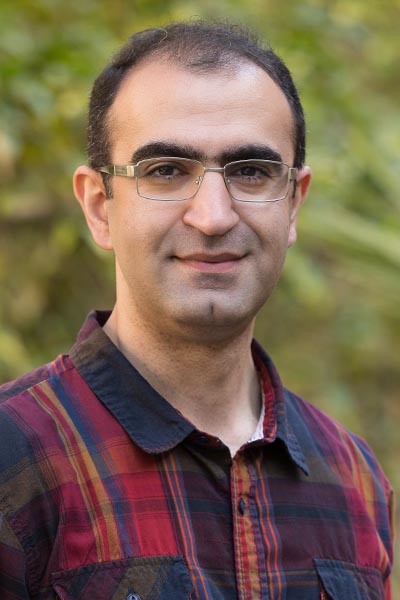
Dr. Amjad Askary
email: amjada@ucla.edu
phone: (310) 825-0475
office: 5139 Terasaki Life Sciences Building
website
Research Interests
Principles of cell fate specification
As an embryo develops, it needs to generate a myriad of cell types, all in specific locations relative to each other and with correct abundances. Retina, for example, contains more than a hundred neuronal subtypes, organized into three layers of cell bodies and two layers of neuropil. These cell types have different features and frequencies and have to be tiled across the retina in a specific way to support the overall function of the tissue. This seemingly impossible task is accomplished during development with incredible robustness. All the instructions for making this intricate structure, as well as all the other tissues in the body, has to be encoded in the genome. So we hypothesize that the blueprints for making tissues like retina are compressible and involve relatively simple principles. Our goal is to identify these principles and utilize them to develop new therapeutic strategies for neurodegenerative disorders.
Our approach involves imaging based genetic barcoding for tracing the lineage and molecular history of individual cells, spatial transcriptomics for mapping cell states, computational modeling for interpreting the results, and synthetic biology for developing molecular tools to manipulate cell fate decisions.
Selected Publications
Amjad Askary, Luis Sanchez-Guardado, James M Linton, Duncan M Chadly, Mark W Budde, Long Cai, Carlos Lois, Michael B Elowitz, "In situ readout of DNA barcodes and single base edits facilitated by in vitro transcription", Nature biotechnology, 38 (1): 66-75 (2020) [link].
Amjad Askary, Pengfei Xu, Lindsey Barske, Maxwell Bay, Paul Bump, Bartosz Balczerski, Michael A Bonaguidi, J Gage Crump, "Genome-wide analysis of facial skeletal regionalization in zebrafish", Development, 144 (16): 2994-3005 (2017) [link].
Joanna Smeeton, Amjad Askary, J Gage Crump, "Building and maintaining joints by exquisite local control of cell fate", Wiley Interdisciplinary Reviews: Developmental Biology, 6 (1): - (2017) [link].
Amjad Askary, Joanna Smeeton, Sandeep Paul, Simone Schindler, Ingo Braasch, Nicholas A Ellis, John Postlethwait, Craig T Miller, J Gage Crump, "Ancient origin of lubricated joints in bony vertebrates", eLife, 5 : - (2016) [link].
Lindsey Barske, Amjad Askary, Elizabeth Zuniga, Bartosz Balczerski, Paul Bump, James T Nichols, J Gage Crump, "Competition between Jagged-Notch and Endothelin1 signaling selectively restricts cartilage formation in the zebrafish upper face", PLoS Genetics, 12 (4): - (2016) [link].
Amjad Askary, Lindsey Mork, Sandeep Paul, Xinjun He, Audrey K Izuhara, Suhasni Gopalakrishnan, Justin K Ichida, Andrew P McMahon, Sonja Dabizljevic, Rodney Dale, Francesca V Mariani, J Gage Crump, "Iroquois proteins promote skeletal joint formation by maintaining chondrocytes in an immature state", Developmental cell, 35 (3): 358-365 (2015) [link].
Amjad Askary, Noriko Shimazaki, Niki Bayat, Michael R Lieber, "Modeling of the RAG reaction mechanism", Cell reports, 7 (2): 307-315 (2014) [link].
Noriko Shimazaki, Amjad Askary, Patrick C Swanson, Michael R Lieber, "Mechanistic basis for RAG discrimination between recombination sites and the off-target sites of human lymphomas", Molecular and cellular biology, 32 (2): 365-375 (2012) [link].
Research Interests
Selected Publications

Dr. Carrie Spratford
email: spratford@ucla.edu
phone: 310-825-4708
office: 2366 Life Science Building
Research Interests
Selected Publications
Research Interests
Selected Publications
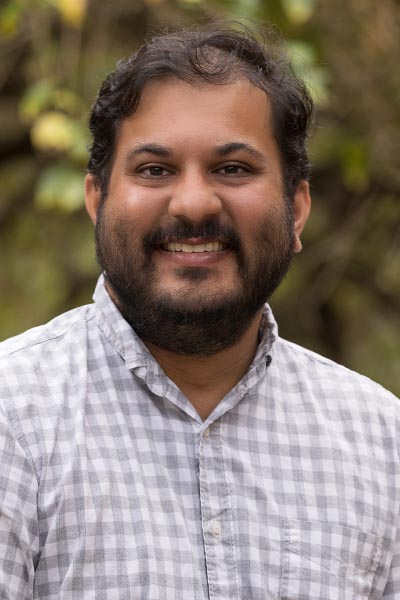
Dr. Pavak Shah
email: pavak@ucla.edu
phone: (310) 267-3838
office: 5000C Terasaki Life Sciences Building
website
Research Interests
Neurons are highly dynamics cells who produce complex networks of connections. These circuits are continuously refined by developmental events and in response to new experiences, but how do neuronal circuits first acquire their function at the point where none previously existed? What mechanisms then allow a nascent circuit to refine its connectivity and activity to produce coordinated output?
We are exploring these questions using the embryo of the nematode Caenorhabditis elegans as a model. With a combination of methods drawn from classical genetics, the state-of-the-art in quantitative imaging, and new approaches to manipulating single cells in vivo, we are mapping the emergence of functional circuitry in the embryo. While cell adhesion molecules and morphogen gradients may teach us how to 'wire' a brain, we are working to understand how to 'boot' one up.
Selected Publications
Zhuo Du, Anthony Santella, Fei He, Pavak K Shah, Yuko Kamikawa, Zhirong Bao, "The regulatory landscape of lineage differentiation in a metazoan embryo", Developmental cell 34 (5): (2019).
Piya Ghose, Alina Rashid, Peter Insley, Meera Trivedi, Pavak Shah, Anupriya Singhal, Yun Lu, Zhirong Bao, Shai Shaham, "EFF-1 fusogen promotes phagosome sealing during cell process clearance in Caenorhabditis elegans", Nature cell biology 20 (4): (2018).
Pavak K Shah, Matthew R Tanner, Ismar Kovacevic, Aysha Rankin, Teagan E Marshall, Nathaniel Noblett, Nhan Nguyen Tran, Tony Roenspies, Jeffrey Hung, Zheqian Chen, Cristina Slatculescu, Theodore J Perkins, Zhirong Bao, Antonio Colavita, "PCP and SAX-3/Robo pathways cooperate to regulate convergent extension-based nerve cord assembly in C. elegans", Developmental Cell 41 (2): 195-203 (2017).
Pavak Kirit Shah, Anthony Santella, Adrian Jacobo, Kimberly Siletti, AJ Hudspeth, Zhirong Bao, "An In Toto Approach to Dissecting Cellular Interactions in Complex Tissues", Developmental cell 43 (4): 530-540 (2017).
Anthony Santella, Ra?l Catena, Ismar Kovacevic, Pavak Shah, Zidong Yu, Javier Marquina-Solis, Abhishek Kumar, Yicong Wu, James Schaff, Daniel Col?n-Ramos, Hari Shroff, William A Mohler, Zhirong Bao, "WormGUIDES: an interactive single cell developmental atlas and tool for collaborative multidimensional data exploration", BMC Bioinformatics 16 (1): (2015).
Pavak K Shah, Silvia Gabriela Herrera‐Loeza, Christopher E Sims, Jen Jen Yeh, Nancy L Allbritton, "Small sample sorting of primary adherent cells by automated micropallet imaging and release", Cytometry Part A 85 (7): (2014).
Research Interests
Selected Publications
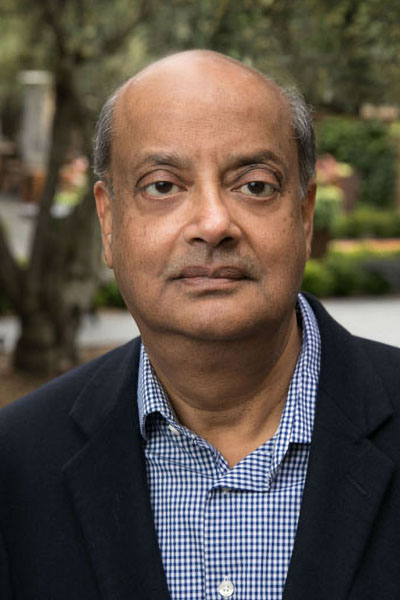
Dr. Utpal Banerjee
email: banerjee@mbi.ucla.edu
phone: (310) 206-5439
office: 5028 Terasaki Life Sciences Building
website
Research Interests
Utpal Banerjee's laboratory studies the effects of systemic signals on the maintenance of blood progenitors in Drosophila. He also studies the role of metabolic pathways in the control of proliferation and differentiation in the preimplantation mouse embryo.
Signal Transduction and metabolic control in Hematopoietic Development, stress response and cancer
1. Blood Stem Cell Maintenance
Hematopoietic stem cells are maintained within a microenvironment where signals from a niche are important for the maintenance of quiescence within a precursor population. Lack of such a niche-derived signal will cause loss of 'stemness' resulting in increased proliferation and eventual differentiation. We study this phenomenon in the Drosophila hematopoietic organ using genetic technologies available in this model organism (see Martinez-Agosto et al., Genes & Devl., 2007 for a review).
We have shown that the 'stemness' of these cells is maintained through the combined action of a Niche Signal, generated by Hedgehog (Hh) (Mandal et al., Nature, 2007), a local signal generated by Wingless/Wnt (Sinenko et al., Dev. Cell., 2009) and a reverse signal from the differentiated cells to the stem cells that we have termed the Equilibrium Signal. Several important concepts underlying Drosophila blood development have allowed us to propose this system as an appropriate genetic model for vertebrate hematopoiesis and these molecular mechanisms are being explored in the laboratory.
2. Stress Response systems
Myeloid blood cells are ideal for the study of response to many kinds of stresses. Hypoxia-related factors and free radicals known as reactive oxygen species (ROS) play a role both in hematopoietic development and in stress response (Owusu-Ansah and Banerjee, Nature 2009). Similarly, the NF-kB derived inflammatory response plays a major role in the way blood cells respond to injury at distant sites. The emerging view from these studies is that basic developmental mechanisms are co-opted again for stress, injury and inflammatory responses by the myeloid hematopoietic system. Genetic analysis allows us to understand the interrelationship between these important biological phenomena that have great relevance to diseases and disorders in humans.
3. Metabolic control in Cancer pathways
In the past, our laboratory has identified components of signal transduction pathways that participate in oncogenesis (see Bonfini et al., Science, 1991; Flores et al., Cell 2000 for examples). We have also studied the role of the mitochondrion in controlling cell-cycle (Owusu-Ansah et al., Nature Genetics, 2008; Mandal et al., Dev. Cell, 2005). When cells become transformed, they choose alternate means of metabolism (a phenomenon referred to as the Warburg effect). We study the effect of signal transduction pathways on the control of cellular metabolism and the proper balance between cellular growth and metabolism that goes awry in Cancer.
4. Metabolic control of early mouse development
We also explore the control of metabolic pathways and mitochondrial activity and biogenesis during development using early mouse embryo and the embryonic stem cells derived from them as a model. There is relative lack of data on the mechanisms that control transition between various modes of metabolic activity during phases of development. Nuclear and mitochondrial activities constantly modulate each other, and the relationship between signal transduction pathways commonly studied during development, cancer and stem cell maintenance and metabolic pathways such as oxidative phosphorylation, glycolysis, mitochondrial biosynthesis and nutrient sensing are being explored. Immediate projects include determining the metabolic processes that are essential for zygotic transcription, and the switch between mitochondrial and glycolytic processes during early mouse development.
Selected Publications
Sharpley MS, Chi F, Banerjee U, "Metabolic Plasticity drives Development during Mammalian Embryogenesis", Developmental Cell, 56 (16): - (2021) .
Girard JR, Goins LM, Vuu DM, Sharpley MS, Spratford CM, Mantri SR, Banerjee U, "Paths and Pathways that Generate Cell-Type Heterogeneity and Developmental Progression in Hematopoiesis", eLife, 56 (16): - (2021) .
Chi F, Sharpley MS, Nagaraj R, Roy SS, Banerjee U, "Glycolysis-Independent Glucose Metabolism Distinguishes TE from ICM Fate during Mammalian Embryogenesis", Developmental Cell, 53 (1): - (2020) .
Utpal Banerjee, Juliet R. Girard, Lauren M. Goins, and Carrie M. Spratford, "Drosophila as a Genetic Model for Hematopoiesis", Genetics, 211 (2): - (2019) .
Cho B, Spratford CM, Yoon S, Cha N, Banerjee U, Shim J, "Systemic control of immune cell development by integrated carbon dioxide and hypoxia chemosensation in Drosophila", Nature Communications, 9 (1): 2679- (2018) .
Nagaraj R, Sharpley MS, Yonggang Zhou Y, Chi F, Braas D, Kim R, Clark AT, Banerjee U, "Nuclear localization of mitochondrial TCA cycle enzymes as a critical step in mammalian zygotic genome activation", Cell, 168 (1-2): 210-223 (2017) .
Wang CW, Purkayastha A, Jones KT, Thaker SK, Banerjee U, "In vivo genetic dissection of tumor growth and the Warburg effect", eLife, 168 (1-2): - (2016) [link].
Tea JS, Cespedes A. Dawson D. Banejee U, Call GB, "Dissection and mounting of Drosophila pupal eye discs", Journal of Visualized Experiments, 93 : - (2014) [link].
Mondal BC, Shim J, Evans CJ, Banerjee U, "Pvr expression regulators in equilibrium signal control and maintenance of Drosophila blood progenitors", eLife, 93 : - (2014) .
Evans CJ, Liu T, Banerjee U, "Drosophila hematopoiesis: Markers and methods for molecular genetic analysis", Methods, 68 (1): 242-251 (2014) .
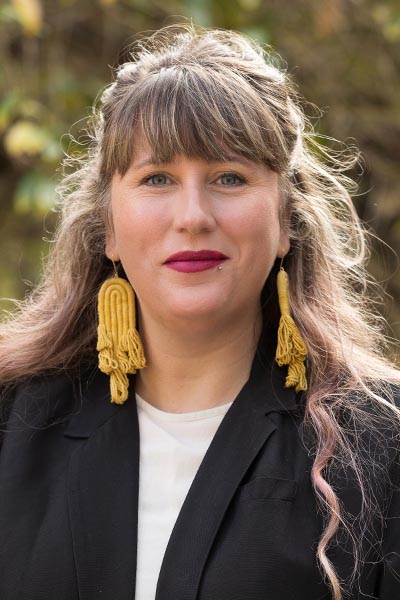
Dr. Siobhan Braybrook
email: siobhanb@ucla.edu
phone: (310) 794-9399
office: 5121 Teresaki Life Sciences
website
Research Interests
The Braybrook Group at UCLA studies the generation of form in walled organisms.
In all organisms, the growing of a shape is a complex process requiring specific gene products, signalling, mechanical alterations, and coordination of cell growth. Our Team addresses this fundamental process in biology using a multidisciplinary approach including plant physiology, biochemistry, genetics, molecular biology, materials science, and physics. We focus on understanding how shapes are generated in walled organisms: plants and algae.
For a plant and algal cells, the cell wall is the main structural element, controlling shape and growth of the cell and therefore tissue as a whole. Recent work has correlated key aspects of organ growth and shape generation, in plants, with mechanical properties of tissues and cell walls. Our Team has two main goals: 1) to understand the mechanics of shape growth in plants and algae, and 2) to understand the cell wall as a dynamic composite material.
Selected Publications
Braybrook, SA, "Auxin and Organogenesis: Initiation of Organs and Nurturing a Scientific Spirit", The Plant Cell (2019). [link]
G Arsuffi, SA Braybrook, "Acid growth: an ongoing trip", Journal of Experimental Botany 69 (2): 137-146 (2018). [link]
Bou Daher, F., Chen, Y., Bozorg, B., Clough, J.H., Jonsson, H., Braybrook, S.A., "Anisotropic growth is achieved through the additive mechanical effect of material anisotropy and elastic asymmetry", eLIFE 7 (e38161): (2018). [link]
Vofeley, R.V., Gallagher, J., Pisano, G.P., Bartlett, M., Braybrook, S.A., "Of puzzles and pavement: exploring diversity in leaf epidermal cell shape", New Phytologist (2018). [link]
Torode, T.A., Linardic, M., Kaplan, J.L., Braybrook, S.A., "Atomic force microscopy based analysis of cell-wall elasticity in macroalgae", In: Protocols for Macroalgae Research 335-347 (2018). [link]
TA Torode, RE O'Neill, SE Marcus, V Cornuault, S Pose-Albacete, RP Lauder, SK Kracun, MG Rydahl, MCF Andersen, WGT Willats, SA Braybrook, BJ Townsend, MH Clausen, JP Knox, "Branched pectic galactan in phloem-sieve-element cell walls: implications for cell mechanics", Plant Physiology (2017). [link]
M Linardic SA Braybrook, "Towards an understanding of spiral patterning in the Sargassum muticum shoot apex", Scientific Reports 7: (2017). [link]
R Carter, H Woolfenden, A Baillie, S Amsbury, S Carroll, E Healicon, S Sovatzoglou, SA Braybrook, JE Gray, J Hobbs, RJ Morris, AJ Fleming, "Stomatal Opening Involves Polar, Not Radial, Stiffening Of Guard Cells", Current Biology 27 (19): 2974-2983.e2 (2017). [link]
SA Braybrook, "Plant Development: Lessons from Getting It Twisted", Current Biology 27 (15): R758-R760 (2017). [link]
A Bucksch, A Atta-Boateng, A F Azihou, D Battogtokh, A Baumgartner, B M Binder, S Braybrook, C Chang, V Coneva, T DeWitt, A Fletcher, M Gehan, D H Diaz Martinez, L Hong, A Iyer-Pascuzzi, LL Klein, S A Leiboff, M Li, J Lynch, A Maizel, J N Maloof, RJ C Markelz, C Martinez, L A Miller, W Mio, W Palubicki, H Poorter, C Pradal, C Price, E Puttonen, J Reese, R Rellan-Alvarez, E P Spalding, E E. Sparks, C N Topp, J H Williams, D H Chitwood, "Morphological plant modeling: Unleashing geometric and topological potential within the plant sciences", Frontiers in Plant Science (2017). [link]
SA Braybrook, "Analysing cell wall elasticity after hormone treatment: an example using tobacco BY-2 cells and auxin", In: Methods in Molecular Biology: Plant Hormones 1497: 125-133 (2016). [link]
SA Braybrook, H Jonsson, "Shifting foundations: the mechanical cell wall and development", Current Opinion in Plant Biology 29: 115-120 (2016). [link]
F Bou Daher, SA Braybrook, "How to let go: pectin and plant cell adhesion", Frontiers in Plant Science 6: (2015). [link]
K Mueller, G Levesque-Tremblay, SA Braybrook, J Pelloux, "Tuning of pectin methylesterification: consequences for cell Wall biomechanics and development", Planta 242 (4): 791-811 (2015). [link]
Z Kong, M Ioki, SA Braybrook, S Li, Z-H Ye, Y-RJ Lee, T Hotta, A Chang, J Tian, G Wang, B Liu, "Kinesin-4 functions in vesicular transport on cortical microtubules and regulates cell wall mechanics during cell elongation in plants", Molecular Plant 8 (7): 1011-1023 (2015). [link]
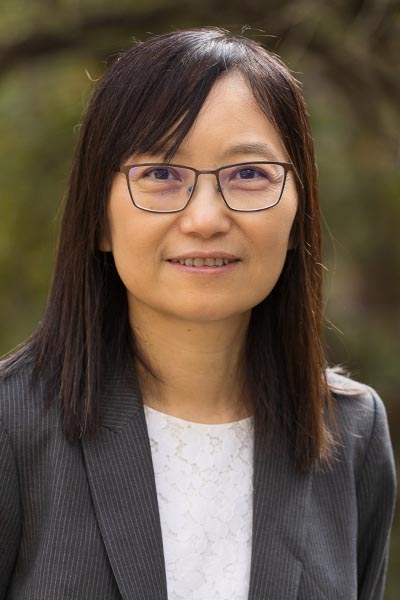
Dr. Jau-Nian Chen
email: chenjn@mcdb.ucla.edu
phone: (310) 206-4513
office: 450C Biomedical Sciences Research Building
website
Research Interests
The cardiovascular system is the first functioning organ during development. Abnormalities in the formation and/or function of the heart and vessels often lead to embryonic lethality or cause severe health issues in the adult. Our laboratory uses a multidisciplinary approach and the zebrafish model to understand the genetic, molecular and cellular basis of the cardiovascular system during normal development and in diseases.
Several unique features make zebrafish ideal for genetic and embryological studies. For instance, the transparent nature of zebrafish embryos provides easy access to observe and study organ development in live embryos. From classic and chemical genetic screens, we have identified mutations and compounds that affect proper patterning or function of the heart and vessels in the zebrafish. We are now using these mutants and compounds as points of entry to study questions about (1) molecular hierarchies important for the formation and cardiac progenitor cells; (2) molecular and cellular mechanisms for cardiac chamber maturation; (3) molecular and physiological mechanisms by which rhythmic cardiac contraction is maintained and by which cardiac arrhythmia occurs.
Selected Publications
Xu Q, Dupper N, Smaligo A, Fan, YC, Cai L,Wang Z, Langenbacher A, Chen J-N and Kwon O., "Catalytic Enantioselective Synthesis of Guvacine Derivatives Through [4 + 2] Annulations of Imines With ?-Methylallenoates", Organic Letters 20 (19): 6089-6093 (2018).
Ding Y, Ma J, Langenbacher AD, Baek KI, Lee J, Chang CC, Hsu JJ, Kulkarni RP, Belperio J, Shi W, Ranjbarvaziri S, Ardehali R, Tintut Y, Demer LL, Chen JN, Fei P, Packard RRS, Hsiai TK., "Multiscale lightsheet for rapid imaging of cardiopulmonary system", JCI Insight 3 (16): 1-14 (2018).
Ziyad S, Riordan JD, Cavanaugh AM, Su T, Hernandez GE, Hilfenhaus G, Morselli M, Huynh K, Wang K, Chen JN, Dupuy AJ and Iruela-Arispe ML., "A forward genetic screen targeting the endothelium reveals a regulatory role for the lipid kinase Pi4ka in myelo-and erythropoiesis", Cell Reports 22: 1211-1224 (2018).
Shimizu H, Langenbacher AD, Huang J, Wang K, Otto G, Geisler R, Wang Y, Chen JN., "The Calcineurin-FoxO-MuRF1 signaling pathway regulates myofibril integrity in cardiomyocytes", eLife 6 (e27955): 1-19 (2017).
Lu F, Langenbacher AD and Chen JN, "Tbx20 drives cardiac progenitor formation and cardiac proliferation in zebrafish", Developmental Biology 421: 139-148 (2017).
Berchtold MW, Kulej K, Zacharias T, Wang K, Torggler RF, Lorentzen L, Jespersen T, Chen JN, Larsen MR and La Cour JM, "The Arrhythmogenic Calmodulin Mutation D129G Dysregulates Cell Growth, Calmodulin-dependent Kinase II Activity and Cardiac Function in Zebrafish", J. Biol Chem 291: 26636-26646 (2016).
Lu F, Langenbacher AD and Chen JN, "Transcriptional Regulation of Heart Development in Zebrafish", J. Cardiovasc Dev Dis 3 (14): (2016).
Gao C, Ren S, Lee J-H, Qiu J, Chapski D, Rau C, Zhou Y, Abdellatif M, Nakano A, Vondriska T, Xiao X, Fu X-D, Chen JN and Wang Y, "RBFox1 Mediated RNA Splicing Regulates Cardiac Hypertrophy and Heart Failure", J. Clin. Invest 126: 195-206 (2015).
Cavanaugh A, Huang J and Chen JN, "Two developmentally distinct populations of neural crest cells contribute to the zebrafish heart", Developmental Biology 404: 103-112 (2015).
Shimizu H*, Schredelseker J*, Huang J*, Lu K*, Naghdi S, Lu F, Franklin S, Fiji HDG, Wang K, Zhu H, Cheng T, Lin B, Nakano H, Nakai J, Stieg AZ, Gimzewski JK, Nakano A, Goldhaber JI,Vondriska TM, Hajnóczky G, Kwon O and Chen JN, "Activation of VDAC2 modulates mitochondrial Ca2+ uptake and cardiac rhythmicity", eLife 4 (e04801): 1-20 (2015).
Lin C, Yao E, Wang K, Nozawa Y, Shimizu H, Johnson J, Chen JN, Krogan N, Chuang PT., "Regulation of Sufu activity by p66b and mycbp provides new insights into vertebrate hedgehog signaling", Genes and Development 28: 2547-2563 (2014).
Li R, Beebe T, Jen N, Yu F, Takabe W, Harrison M, Cao H, Lee J, Yang H, Han P, Wang K, Shimizu H, Chen JN, Line CL, Chi NC, Hsiai TK, "Shear stress-activated Wnt-angiopoietin-2 signaling recapitulated vascular repair in zebrafish embryos", Arterioscler Thromb Vasc Biol 34: 2268-2275 (2014).
Zhang Y, Shimizu H, Siu KL, Mahajan A, Chen JN and Cai H, "NADPH oxidase 4 induces cardiac arrhythmic phenotype in zebrafish", J. Biol Chem 289: 23200-23208 (2014).
Schredelseker J, Paz A, Lopez CJ, Altenbach C, Leung CS, Drexler MK, Chen JN, Hubbell WL, Abramson J., "High resolution structure and double electron-electron resonance of the zebrafish voltage-dependent anion channel 2 reveal an oligomeric population", J Biol Chem 289: 12566-12577 (2014).
Monte E, Mouillesseaux K, Chen H, Kimball T, Ren S, Wang Y, Chen JN, Vondriska TM, Franklin S., "Systems proteomics of cardiac chromatin identifies nucleolin as a regulator of growth and cellular plasticity in cardiomyocytes", Am J Physiology 305: 1624-1638 (2013).
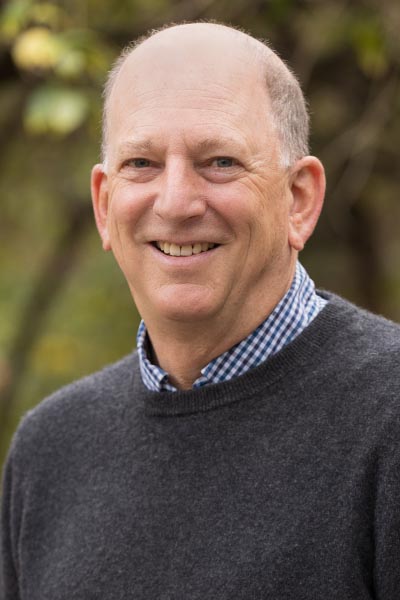
Dr. Daniel Cohn
email: dcohn@mcdb.ucla.edu
phone: (310) 206-3990
office: 550 Orthopaedic Hospital Research Center
Research Interests
Our laboratory studies the molecular basis of the skeletal dysplasias, inherited human disorders that affect skeletal development, growth, and maintenance. Our goal is to provide a comprehensive understanding of the genes and gene products that participate in the development of the skeleton and that ultimately determine the shapes of the bones, the height an individual achieves, and the stability of the skeleton. A major step toward achieving our goals is genomic analysis in skeletal dysplasia families to identify the gene associated with each of the over 450 different skeletal dysplasias. For disorders in which the defective gene is known, a combination of mutation analysis and biosynthetic studies is used to understand the mechanisms by which the mutations arise, the inheritance pattern of each disorder, and the effect of each mutation of the synthesis, structure, and function of the encoded protein. These goals are augmented by studies in model organisms, particularly mice, that include mechanistic studies and the development of therapies to ameliorate or cure these disorders.
Selected Publications
Csukasi F, Duran I, Zhang W, Martin JH, Barad M, Bamshad M, Weis MA, Eyre D, Krakow D, Cohn DH, "Dominant-negative SOX9 mutations in campomelic dysplasia", Human mutation (2019).
Balasubramanian K, Weis M, Eyre DR, Martin J, Ortiz-Sanchez J, Duran I, Vangala S, Wang J, Friedman RA, Krakow D, Cohn DH, "The ?2 chain of type IX collagen is essential for type IX collagen biosynthesis", American journal of medical genetics. Part A 179 (8): 1672-1677 (2019).
Burrage LC, Reynolds JJ, Baratang NV, Phillips JB, Wegner J, McFarquhar A, Higgs MR, Christiansen AE, Lanza DG, Seavitt JR, Jain M, Li X, Parry DA, Raman V, Chitayat D, Chinn IK, Bertuch AA, Karaviti L, Schlesinger AE, Earl D, Bamshad M, Savarirayan R, Doddapaneni H, Muzny D, Jhangiani SN, Eng CM, Gibbs RA, Bi W, Emrick L, Rosenfeld JA, Postlethwait J, Westerfield M, Dickinson ME, Beaudet AL, Ranza E, Huber C, Cormier-Daire V, Shen W, Mao R, Heaney JD, Orange JS, University of Washington Center for Mendelian Genomics., Undiagnosed Diseases Network., Bertola D, Yamamoto GL, Baratela WAR, Butler MG, Ali A, Adeli M, Cohn DH, Krakow D, Jackson AP, Lees M, Offiah AC, Carlston CM, Carey JC, Stewart GS, Bacino CA, Campeau PM, Lee B, "Bi-allelic Variants in TONSL Cause SPONASTRIME Dysplasia and a Spectrum of Skeletal Dysplasia Phenotypes", American journal of human genetics 104 (3): 422-438 (2019).
Hanson-Kahn A, Li B, Cohn DH, Nickerson DA, Bamshad MJ, University of Washington Center for Mendelian Genomics., Hudgins L, "Autosomal recessive Stickler syndrome resulting from a COL9A3 mutation", American journal of medical genetics. Part A 176 (12): 2887-2891 (2018).
Csukasi F, Duran I, Barad M, Barta T, Gudernova I, Trantirek L, Martin JH, Kuo CY, Woods J, Lee H, Cohn DH, Krejci P, Krakow D, "The PTH/PTHrP-SIK3 pathway affects skeletogenesis through altered mTOR signaling", Science translational medicine 10 (459): (2018).
Zhang W, Taylor SP, Ennis HA, Forlenza KN, Duran I, Li B, Sanchez JAO, Nevarez L, Nickerson DA, Bamshad M, University of Washington Center for Mendelian Genomics., Lachman RS, Krakow D, Cohn DH, "Expanding the genetic architecture and phenotypic spectrum in the skeletal ciliopathies", Human mutation 39 (1): 152-166 (2018).
Li B, Balasubramanian K, Krakow D, Cohn DH, "Genes uniquely expressed in human growth plate chondrocytes uncover a distinct regulatory network", BMC genomics 18 (1): (2017).
Lee CS, Fu H, Baratang N, Rousseau J, Kumra H, Sutton VR, Niceta M, Ciolfi A, Yamamoto G, Bertola D, Marcelis CL, Lugtenberg D, Bartuli A, Kim C, Hoover-Fong J, Sobreira N, Pauli R, Bacino C, Krakow D, Parboosingh J, Yap P, Kariminejad A, McDonald MT, Aracena MI, Lausch E, Unger S, Superti-Furga A, Lu JT, Baylor-Hopkins Center for Mendelian Genomics., Cohn DH, Tartaglia M, Lee BH, Reinhardt DP, Campeau PM, "Mutations in Fibronectin Cause a Subtype of Spondylometaphyseal Dysplasia with "Corner Fractures"", American journal of human genetics 101 (5): 815-823 (2017).
Balasubramanian K, Li B, Krakow D, Nevarez L, Ho PJ, Ainsworth JA, Nickerson DA, Bamshad MJ, Immken L, Lachman RS, Cohn DH, "MED resulting from recessively inherited mutations in the gene encoding calcium-activated nucleotidase CANT1", American journal of medical genetics. Part A 173 (9): 2415-2421 (2017).
Badiner N, Taylor SP, Forlenza K, Lachman RS, University of Washington Center for Mendelian Genomics., Bamshad M, Nickerson D, Cohn DH, Krakow D, "Mutations in DYNC2H1, the cytoplasmic dynein 2, heavy chain 1 motor protein gene, cause short-rib polydactyly type I, Saldino-Noonan type", Clinical genetics 92 (2): 158-165 (2017).
Duran I, Martin JH, Weis MA, Krejci P, Konik P, Li B, Alanay Y, Lietman C, Lee B, Eyre D, Cohn DH, Krakow D, "A Chaperone Complex Formed by HSP47, FKBP65, and BiP Modulates Telopeptide Lysyl Hydroxylation of Type I Procollagen", Journal of bone and mineral research : the official journal of the American Society for Bone and Mineral Research 32 (6): 1309-1319 (2017).
Duran I, Taylor SP, Zhang W, Martin J, Qureshi F, Jacques SM, Wallerstein R, Lachman RS, Nickerson DA, Bamshad M, Cohn DH, Krakow D, "Mutations in IFT-A satellite core component genes IFT43 and IFT121 produce short rib polydactyly syndrome with distinctive campomelia", Cilia 6: (2017).
Egunsola AT, Bae Y, Jiang MM, Liu DS, Chen-Evenson Y, Bertin T, Chen S, Lu JT, Nevarez L, Magal N, Raas-Rothschild A, Swindell EC, Cohn DH, Gibbs RA, Campeau PM, Shohat M, Lee BH, "Loss of DDRGK1 modulates SOX9 ubiquitination in spondyloepimetaphyseal dysplasia", The Journal of clinical investigation 127 (4): 1475-1484 (2017).
Zieba J, Zhang W, Chong JX, Forlenza KN, Martin JH, Heard K, Grange DK, Butler MG, Kleefstra T, Lachman RS, Nickerson D, Regnier M, Cohn DH, Bamshad M, Krakow D, "A postnatal role for embryonic myosin revealed by MYH3 mutations that alter TGF? signaling and cause autosomal dominant spondylocarpotarsal synostosis", Scientific reports 7: (2017).
Weinstein MM, Kang T, Lachman RS, Bamshad M, Nickerson DA, Krakow D, Cohn DH, "Somatic mosaicism for a lethal TRPV4 mutation results in non-lethal metatropic dysplasia", American journal of medical genetics. Part A 170 (12): 3298-3302 (2016).
Research Interests
Our overall goal is to understand the cell and molecular basis of germline cell differentiation and epigenetic reprogramming. My laboratory uses CRISPR/Cas9 gene editing technologies, next generation sequencing, pluripotent stem cells and mouse modeling to achieve this goal. Results from our work will provide a biological understanding of the cell and molecular basis of human life and child health, and potentially the foundation for a cell based therapy to overcome human infertility.
Selected Publications
Guo, J., Sosa, E., Chitiashvili, T., Nie, X., Roja, ER., Oliver, E., DonnorConnect, Plath, K., Hotaling, JA, Stukenborg, J-B., Clark, AT., Cairns, B (2021) Single-cell analysis of the developing human testis reveals somatic niche cell specification and fetal germline stem cell establishment. Cell Stem Cell. Published January 15.
Chitiashvili, T., Dror, I., Kim, R., Hsu, F-M., Chaudhari, R., Pandolfi, E., Chen, Di., Liebscher, S., Schenke-Layland, K., Plath, K., Clark A (2020) Female human primordial germ cells display X-chromosome dosage compensation despite the absence of X-inactivation. Nature Cell Biology. 22: 1436-1446
Liu, X., Ouyang, JF., Rossello, F., Tan, JP., Davidson, KC., Valdes, DS., Schroder, J., Sun, YBY., Chen, J., Knaupp, AS., Sun, G., Chy, HS., Huang, Z., Pflueger, J., Firas, J., Tano, V., Buckberry, S., Paynter, JM., Larcombe, MR., Poppe, D.,Choo, XY., O'Brien, CM., Pastor, WA., Chen, D., Leicher, AL., Naeem, H., Tripathi, P., Das, PP., Grubman, A., Powell, DR., Laslett, AL., David, L., Nilsson, SK., Clark, AT., Lister, R., Nfzger, CM., Martelotto, LG., Rackham, OJL., Polo, JM (2020) Reprogramming roadmap reveals route to human induced trophoblast stem cells. Nature 583: 101-107
Gell, J., Liu, W., Sosa, E., Chialastri, A., Hancock, G., Tao, Y., Wamaitha, SE., Bower, G, Day, S., Clark, AT (2020) An extended culture system that supports human primordial germ cell-like cell survival and initiation of DNA methylation erasure. Stem Cell Reports. 14:433-446
Chen, D., Sun, N., Hou, L., Kim, R., Faith, J., Aslanyan, M., Tao, Y., Zheng, Y., Fu, J., Liu, W., Kellis, M., Clark, AT. (2019). Human primordial germ cells are specified from lineage primed progenitors. Cell Reports 29: 4568-4582.e5
Clark, AT (2019). A Model of Human Embryo Implantation. Nature 573, 350-351 (2019)
Sosa, E., Chen, D., Rojas, EJ., Hennebold, JD., Peters, KA., Zhuang, Wu., Lam, TN., Mitchell, JM., Sukhwani, M., Tailor, RC., Meistrich, ML., Orwig, KE., Shetty, G., Clark, AT (2018) Differentiation of primate primordial germ cell-like cells following transplantation into the adult gonadal niche. Nature Communications 9:5339
Gell, JJ and Clark, AT (2018) Restoring Fertility With Human Induced Pluripotent Stem Cells: Are We There Yet? Cell Stem Cell 23: 777-779
Pastor, WA., Liu, W., Chen, D., Ho, J., Kim, R., Hunt, T., Lukianchikov, A., Liu, X., Polo, JM., Jacobsen, SE., Clark, AT (2018) TFAP2C regulates transcription in human naive pluripotency by opening enhancers. Nature Cell Biology 20, 553-564
Chen, D., Clark, AT (2018). Mitochondiral DNA Selection in Human Germ Cells. Nature Cell Biology 20 118-120
Pastor W, Chen D, Liu W, Kim R, Sahakyan A, Lukianchikov A, Plath K, Jacobsen SE, Clark AT (2016). Naive human pluripotent stem cells feature a methylation landscape devoid of blastocyst or germline memory. Cell Stem Cell. 18: 1-7
Gkountela S, Zhang KX, Shafiq T, Liao W-W, Hargan-Calvopina J, P-Y Chen, Clark, AT (2015). DNA methylation dynamics in the human prenatal germline Cell. 161;1425-1436
Gkountela, S., Li, Z., Vincent, JJ, Zhang, KX, Chen, A., Pellegrini, M., Clark, AT (2013) The ontogeny of cKIT+ human primordial germ cells proves to be a resource for human germ line reprograming, imprint erasure and in vitro differentiation. Nature Cell Biology 15:113-122
Clark AT, Phillips BT, Orwig KE. Fruitful progress to fertility: male fertility in the test tube. Nature Medicine. 2011 Dec 6;17(12):1564-5
Chodavarapu RK., Feng, S., Bernatavichute, YV., Chen, PY., Stroud, H.,Yu, Y., Hetzel, JA., Kuo, F., Kim, J., Cokus, SJ., Casero, D., Bernal, M., Huijser, P., Clark, AT., Kra¨mer, U., Merchant, SS., Zhang, X., Jacobsem, SE., Pellegrini, M (2010) Relationship between nucleosome positioning and DNA methylation. Nature 466(7304):388-92
Xie, W., Song, C., Young, NL., Sperling, AS., Xu, F., Sridharan, R., Conway, AE., Garcia, BA., Plath, K., Clark, AT*., Grunstein, M*. (2009) Histone H3 lysine 56 acetylation is linked to the core transcriptional network in human embryonic stem cells. Molecular Cell. 33: 417-427 (* co-corresponding author)
Lowry, WE., Richter, L,. Yachechko, R., Pyle, AD., Tshieu, J., Sridharan, R., Clark, AT., Plath, K (2008) Generation of human induced pluripotent stem cells from dermal fibroblasts, PNAS Feb 26, 105(8):2883-2888
Bostick, M., Kim, JK., Esteve, PO, Clark, AT, Pradhan, S and Jacobson, SE (2007) UHRF1 plays a role in maintaining DNA methylation in mammalian cells Science (2007) 317:1760-1764
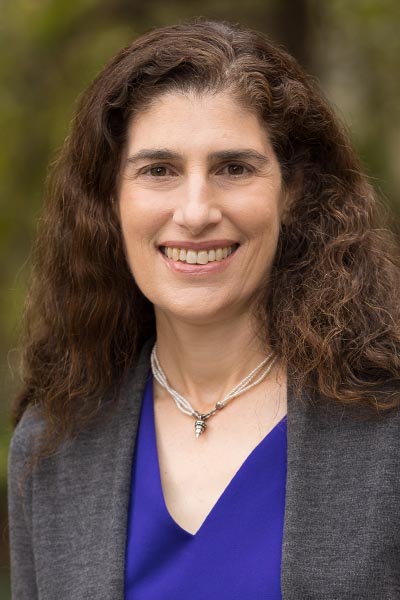
Dr. Hilary Coller
email: hcoller@ucla.edu
phone: (310) 825-3483
office: 5145 Terasaki Life Sciences
website
Research Interests
Because uncontrolled cell division is so dangerous for an organism, cells must know not only when to divide, but?crucially?when not to. Cell division arrest prevents tumors and maintains the proper form of tissues. Many cells must also retain the ability to start dividing again when conditions are right, e.g., when the organism must grow, or a damaged tissue must be repaired. A cell in such a temporary, non-dividing state is said to be ?quiescent.? Quiescence is a common state for many somatic cells, including fibroblasts, lymphocytes, hematopoietic stem cells, and even dormant tumor cells. Failure to appropriately regulate the transition between quiescence and proliferation underlies several common and lethal disorders, including cancer and chronic wounds. My research is focused on understanding the molecular basis of quiescence using in vitro models, mouse models and human patients.
Selected Publications
Sullivan WJ, Mullen PJ, Schmid EW, Flores A, Momcilovic M, Sharpley MS, Jelinek D, Whiteley AE, Maxwell MB, Wilde BR, Banerjee U, Coller HA, Shackelford DB, Braas D, Ayer DE, de Aguiar VTQ, Lowry WE, Christofk HR, "Extracellular matrix remodeling regulates glucose metabolism through TXNIP destabilization", Cell 175 (1): 117-132 (2018). [link]
Jelinek D., Flores, A., Uebelhoer, M., Pasque, V., Plath, K., Iruela-Arispe, L., Christofk, H.R., Lowry, W.E, and Coller, H.A., "Mapping metabolism: Monitoring lactate dehydrogenase activity directly in tissue", J. Vis. Exp (2018). [link]
Coller, HA, "DNA replication licensing in stem cells: Gatekeeping the commitment to proliferation", J Cell Biol (2018). [link]
Coller, H.A., "MYC sets a tumour-stroma metabolic loop", Nat. Cell Biol 20 (5): 506-507 (2018). [link]
Mitra, M., Lee, H.N. and Coller, H.A., "Determining genome-wide transcript decay rates in proliferating and quiescent human fibroblasts", J. Vis. Exp 131: (2018). [link]
Chiu, A.M., Mitra, M., Boymoushakian, L., and Coller, H.A., "Integrative analysis of the inter-tumoral heterogeneity of triple-negative breast cancer", Scientific Reports (2018). [link]
Coller HA., "Symposium on single cell analysis and genomic approaches, Experimental Biology 2017 Chicago, Illinois, April 23, 2017", Physiol Genomics 49 (9): 491-495 (2017). [link]
Nouvong, A., Ambrus A.M., Zhang, E.R., Hultman, L. and Coller, H.A., "Reactive oxygen species and bacterial biofilms in diabetic wound healing", Physiological Genomics (2016). [link]
Rabinowitz, J. and Coller, H.A., "Partners in the Warburg effect", eLife (2016). [link]
Mitra, M., Johnson, E.L., and Coller, H. A., "Alternative polyadenylation can regulate post-translational membrane localization", Trends in Cell and Molecular Biology 10: 37-47 (2015). [link]
Corney, D., and Coller, H.A., "On form and function: Does chromatin packing regulate the cell cycle?", Physiol Genomics 46 (6): 191-194 (2014).
Coller, H.A., "Is cancer a metabolic disease?", American Journal of Pathology 184 (1): 4-17 (2014).
Evertts, A.G., Wang, X., Manning, A.L., Dyson, N.J., Garcia, B.A., and Coller, H.A., "H4K20 methylation functions in quiescence and chromatin compaction", Molecular Biology of the Cell 24 (19): 3025-3037 (2014).
Jiang P, Singh M, Coller HA., "Computational assessment of the cooperativity between RNA binding proteins and MicroRNAs in Transcript Decay", PLoS Comput Biol 9 (5): (2013). [link]
Coller, H., "Introducing the systems biology of cell state", Physiological Genomics 45 (11): 407-408 (2013).
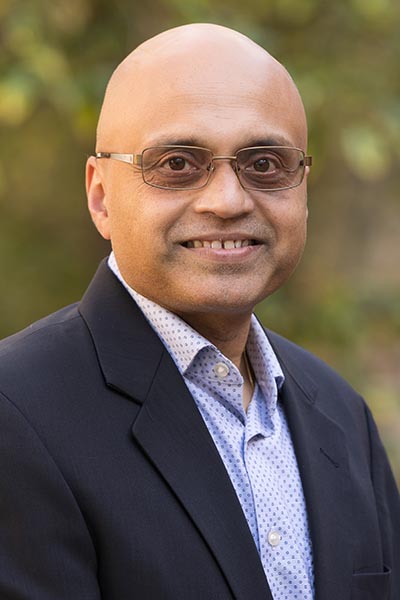
Dr. Arjun Deb
email: adeb@mednet.ucla.edu
phone: (310) 825-9911
office: 3609A MacDonald Research Lab
website
Research Interests
Cardiac repair and regeneration
The heart is unable to regenerate heart muscle after a heart attack and lost cardiac muscle is replaced by scar tissue. Scar tissue does not contribute to cardiac contractile force and the remaining viable cardiac muscle is thus subject to a greater hemodynamic burden. Over time, the heart muscle eventually fails leading to the development of heart failure and 500,000 patients are diagnosed annually in the United States with heart failure. Thus the inability of the heart to regenerate cardiac muscle, coupled with a predominant fibrotic injury response remain major fundamental obstacles to treating heart disease.
Our laboratory studies the interface of cardiac fibroblasts (scar forming cells) and cardiac progenitors in determining how a cross talk between these cells regulates cardiac repair. We use murine models of cardiac injury and use a variety of fate mapping and conditional knockout strategies to alter specific genes at specific time points after injury to investigate our questions. We study the Wnt signaling pathway, a family of 19 closely related proteins that play key roles in organogenesis, wound healing and cancer. We have recently demonstrated that Wnt1, a Wnt known to play important roles in the development of the central nervous system plays an important role in regulating a fibrotic injury response in the heart. Using transgenic and conditional knock out strategies, we aim to alter the fibrotic repair response of the heart to enable regeneration.
Epicardium and mechanisms of EMT
The second area of investigation in our laboratory is to understand the role of cardiac cell plasticity and how plasticity can be modulated to affect wound healing in the adult heart. In this respect, we have recently shown that scar forming cells in the heart exhibit plasticity after cardiac injury and such plasticity can be modulated to affect the wound healing response (Nature 2014; 585-590). We study molecule mechanisms of such plasticity and aim to modulate the scar response by coaxing scar forming cells to adopt alternative cell fates. Another example of a plastic cardiac cell is the epicardial cell. The epicardium is a single layer of epithelial cells, that surrounds the heart. Although the epicardium is critically important for cardiac development, little is known about the function of the epicardium in the adult heart. We have recently demonstrated that the epicardium undergoes epithelial-mesenchymal-transition in a Wnt dependent manner after cardiac injury and generates cardiac fibroblasts that reside in the subepicardial space and contribute to cardiac fibrosis. The molecular regulation of epicardial EMT, identification of precursors in the epicardium that give rise to cardiac fibroblasts and its role in wound healing form another major focus in our laboratory.
Cardiac calcification
Calcification of the heart is a predominant phenotype of the aging heart and pathologic calcification predisposes to cardiac disease. For instance, calcification of the conduction system in humans causes slowing of conduction and heart blocks, while calcification of the valves leads to stiffening of the valve leaflets, and obstruction or regurgitation of blood across the valves secondary to defective coaptation of valve leaflets. The origins of the cells contributing to cardiac calcification and mechanisms regulating calcium deposition remain ill understood. Using human heart valves (obtained during surgical replacement of calcific heart valves), we isolate and study progenitor populations that can contribute to cardiac calcification. We also have murine models of calcification that we use to obtain fate maps about potential progenitor populations contributing to cardiac calcification and study mechanisms driving progenitors to adopt an osteoblast (calcium forming cell) fate. This project allows the interrogation of mechanisms in both murine models and human tissue.
Selected Publications
Yu J, Seldin MM, Fu K, Li S, Lam L, Wang P, Wang Y, Huang D, Nguyen TL, Wei B, Kulkarni RP, Di Carlo D, Teitell M, Pellegrini M, Lusis AJ, Deb A., "Topological Arrangement of Cardiac Fibroblasts Regulates Cellular Plasticity", Circulation Research (2018). [link]
Foulquier S, Daskalooulos EP, Lluri G, Hermans KCM, Deb A, Blankesteijn WM, "WNT Signaling in Cardiac and Vascular Disease", Pharmacological Reviews 70 (1): 68-141 (2018). [link]
Lluri Gentian, Renella Pierangelo, Finn J Paul, Vorobiof Gabriel, Aboulhosn Jamil, Deb Arjun, " Prognostic Significance of Left Ventricular Fibrosis in Patients With Congenital Bicuspid Aortic Valve", The American journal of Cardiology (2017). [link]
Monaghan, M. G., Holeiter, M., Brauchle, E., Layland, S. L., Lu, Y., Deb, A.*, Abhay, P., All, N., KatJa, S., Schenke-Layland, K., "Exogenous miR-29B Delivery Through a Hyaluronan-Based Injectable System Yields Functional Maintenance of the Infarcted Myocardium", Tissue Engineering Part A (2017). [link]
Seldin, M. M., Kim, E. D., Romay, M. C., Li, S., Rau, C. D., Wang, J. J., Krishnan, K.C., Wang, Y., Deb, A.*, Lusis, A. J., American Journal of Physiology - Heart and Circulatory Physiology 312 (4): H728-H741 (2017). [link]
Murray IR, Baily J, Chen WCW, Dar A, Gonzalez ZN, Jensen AR, Petrigliano FR, Deb A, Henderson NC, "Skeletal and Cardiac Muscle Pericytes: Functions and Therapeutic Potential", Pharmacology and Theraeutics 171: 65-74 (2017). [link]
Pillai I, Li S, Romay M, Lam L Lu Y, Jie Huang, Dillard N, Zemanova M, Rubbi L Wang Y, Lee J, Xia M, Pellegrini M, Lusis A, Deb A, "Cardiac fibroblasts adopt osteogenic cell fates and can be targeted to attenuate pathological heart calcification", Cell Stem Cell 20 (2): 218-232 (2017). [link]
Wang Z, Zhang X, Ji Y, Zhang P, Deng , Gong J, Ren S, Wang X, Chen I, Wang H, Gao C, Yoota T, Ang Y, Li S, Cass A, Vondriska V, Li G, Deb A, Srivastava D, Yang H, Xiao X, i H, Wang Y, "A Long non-coding RNA defines an epigenetic checkpoint for cardiac hypertrophy", Nature Medicine 22 (10): 1131-1139 (2016). [link]
Brumm A, Nunez S, Doroudchi M, Kawaguchi R, Duan J, Pellegrini M, Lam L, Carmichael T, Deb A, Hinman J, "Astrocytes can adopt endothelial cell fates in a p53 dependent manner", Molecular Neurobiology (2016). [link]
Deb A, Wang Y, "Hypertrophic preconditioning: short-term tricks for long-term gain", Circulation 131 (17): 1468-1470 (2015). [link]
Arjun Deb, Yibin Wang, "Hypertrophic preconditioning: Short term tricks for long term gain", Circulation (2015). [link]
Eric Ubil, Jinzhu Duan,Indulekha C. L. Pillai, Manuel Rosa-Garrido, Yong Wu, Francesca Bargiacchi, Yan Lu, Seta Stanbouly, Jie Huang, Mauricio Rojas, Thomas M. Vondriska, Enrico Stefani & Arjun Deb, ". Mesenchymal-endothelial transition contributes to cardiac neovascularization", Nature 514 (7524): 585-590 (2014). [link]
Arjun Deba, Eric Ubil, "Cardiac Fibroblast in Development and Wound healing", Journal of Molecular and Cellular Cardiology 70: 47-55 (2014). [link]
Arjun Deb, "Cell-Cell Interaction via the Wnt/β-catenin pathway after cardiac injury", Cardiovasc Res 102 (2): 214-223 (2014). [link]
JinZhu Duan, Yueh Lee, Corey Jania, Jucheng Gong, Mauricio Rojas, Laurel Burk, Monte Willis, Jonathon Homeister, Stephen Tilley, Janet Rubin, Arjun Deb, "Rib fractures and death from rapid osteoclastogenesis is rescued by corticosteroids", PLoS ONE 8 (2): (2013). [link]
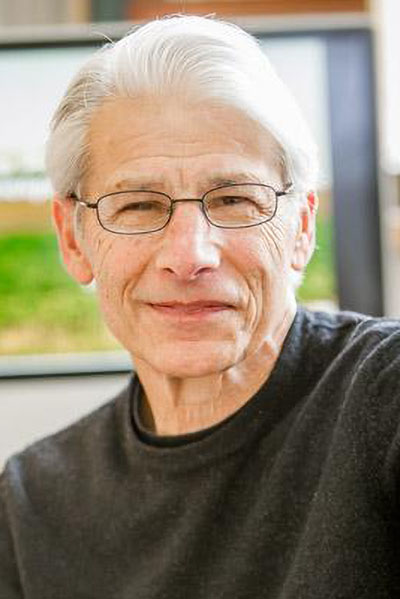
Dr. Bob Goldberg
email: bobg@ucla.edu
phone: (310) 825-9093
office: Terasaki Life Sciences Research Building 4121
website
Research Interests
During the next 50 years, we need to produce more food than in the entire history of humankind on a decreasing amount of land for crop production. A major challenge for the 21st century is to increase the yields of major crop plants, such as soybean, using state-of-the-art genetic technologies. One way to accomplish this task is to use genomics to understand all of the genes and genetic processes required to ?make a seed? in order to engineer plants for yield traits such as more seeds, bigger seeds, and seeds with improved nutritional composition. Increasing seed yield should contribute significantly to enhancing our food supply, because over half of the major crops used for human consumption are seed crops.
My laboratory has been investigating gene activity during seed development in order to identify the genes and gene regulatory networks required to program seed development. We have been carrying out experiments to 1) profile the mRNAs present in every soybean and Arabidopsis seed compartment (e.g., embryo, endosperm, seed coat), region (embryo proper, suspensor), and tissue (e.g., inner integument, endothelium, seed coat epidermis) throughout development, 2) characterize the epigenetic events at the DNA and chromatin level to understand their role in seed development, and 3) determine the targets of critical transcription factor genes programming seed development. The main focus of our experiments is to identify transcription factor genes that program differentiation events and determine how they form regulatory networks that program seed differentiation and function. The long-term goal of research being carried out in my laboratory is to understand ?how to make a seed? in order to use this information for the improvement of crop plants.
Selected Publications
Jo, L., Pelletier, J.M., Hsu, S., Baden, R., Goldberg, R.B., Harada, J.J., "Combinatorial interactions of the LEC1 transcription factor specify diverse developmental programs during soybean seed development", Proc. Natl. Acad. Sci, USA 117 : 1223-1232 (2020) .
Chen, M., Bui, A.Q., & Goldberg, R.B., "Using giant scarlet runner bean (Phaseolus coccineus) embryos to dissect the early events in plant embryogenesis", Plant embryogenesis: Methods and protocols, M. Bayer(Eds.), Berlin, Germany Springer Science+Business Media 2122 : 205-222 (2020) .
Goldberg, R.B., Larkins, B.A., and Quatrano, R. S., "The Plant Cell: Beginnings", The Plant Cell, M. Bayer(Eds.), 31 : 1391-1392 (2019) .
Chen, M., Lin, J.Y., Hur, J., Pelletier, J.M., Baden, R., Pellegrini, M., Harada, J.J., and Goldberg, R.B., "Seed genome hypomethylated regions are enriched in transcription factor genes", Proc. Natl. Acad. Sci. USA, M. Bayer(Eds.), 115 : 8315-8322 (2018) .
Henry, Kelli F., Bui, Anhthu Q., Kawashima, T., and Goldberg, R.B., "A shared cis-regulatory module activates transcription in the suspensor of plant embryos", Proc. Natl. Acad, Sci. USA, M. Bayer(Eds.), 115 : 5824-5833 (2018) .
Pelletier, J.M., Kwong, R.W., Park, S., Lee, B.H., Baden, R., Cagliari, A., Hashimoto, M., Munoz, M.D., Fischer, R.L., Goldberg, R.B., and Harada, J.J., "LEC1 sequentially regulates the transcription of genes involved in diverse developmental processes during seed development", Proc. Natl. Acad. Sci USA, M. Bayer(Eds.), 114 : 6710-6719 (2017) .
Henry, K.F., Kawashima, T., and Goldberg, R.B., "A cis-regulatory module activating transcription in the suspensor contains five cis-regulatory elements", Plant Molecular Biology, M. Bayer(Eds.), 88 : 207-217 (2015) .
Danzer, J., Mellot, E., Bui, A.Q., Le, B.H., Martin, P., Hashimoto, M., Perez-Lesher, J., Chen, M., Pelletier, J.M., Somers, D.A., Goldberg, R.B., Harada, J.J., "Downregulating the expression of 53 soybean transcription factor genes uncovers a role for SPEECHLESS in initiating stomatal cell lineages during embryo development", Plant Physiology, M. Bayer(Eds.), 168 : 1025-1035 (2015) .
Khan, D., Miller, J.L., Girard, I.J., Chan, A., Kirkbride, R.C., Pelletier, J.M., Becker, M.G., Yeung, E.C., Stasolla, C., Goldberg, R.B., Harada, J.J., and Belmonte, M. F., "Transcriptome atlas of the Arabidopsis funiculus - a study of maternal seed subregions", Plant Journal, M. Bayer(Eds.), 82 : 41-53 (2015) .
Belmonte, M. F., Kirkbride, R. C., Stone, S., Pelletier, J. M., Bui, A. Q., Yeung, E. C., Hashimoto, M, Fei, J., Harada, C. M., Munoz, M. D., Le, B. H., Drews, G. N., Brady, S. M., Goldberg, R. B., and Harada, J .J., "Comprehensive developmental profiles of gene activity in regions and subregions of the Arabidopsis seed", Proc. Natl. Acad. Sci USA, M. Bayer(Eds.), 110 (5): 434-444 (2013) .
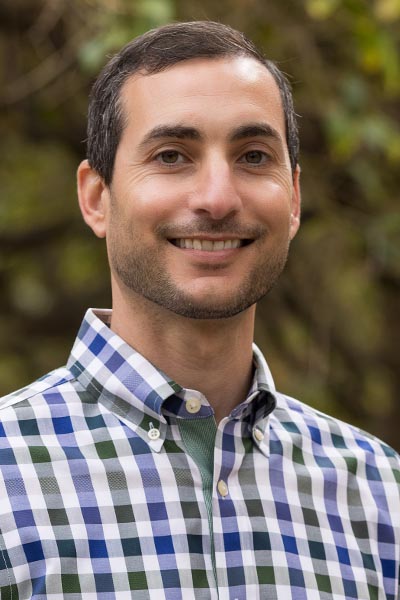
Dr. Andrew Goldstein
email: agoldstein@mednet.ucla.edu
phone: (310) 206-1402
office: 3141 Terasaki Life Sciences Building
website
Research Interests
The research in the Goldstein laboratory is focused on the intersection between cancer biology, stem cell biology and metabolism. During his graduate work, Dr. Goldstein described the isolation of epithelial progenitor cells from mouse and human prostate tissue and demonstrated the capacity of progenitor cells to initiate prostate cancer in response to oncogenic transformation. Following up on this work, Dr. Goldstein and colleagues determined that prostate cancer can evolve from a basal cell of origin to a luminal-like tumor-propagating cell population. More recently, the Goldstein laboratory has been investigating the interplay between inflammation, epithelial progenitor cells, and tumorigenesis, using a combination of mouse and human tissue models. The main goals of the lab are to elucidate the cellular and molecular mechanisms promoting epithelial cancer initiation, progression and resistance to treatment.
Selected Publications
Crowell PD, Fox JJ, Hashimoto T, Diaz JA, Navarro HI, Henry GH, Feldmar BA, Lowe MG, Garcia AJ, Wu YE, Sajed DP, Strand DW, Goldstein AS, "Expansion of luminal progenitor cells in the aging mouse and human prostate", Cell Reports 28 (6): 1499-1510 (2019). [link]
Crowell PD, Giafaglione JM, Hashimoto T, Diaz JA, Goldstein AS, "Evaluating the Differentiation Capacity of Mouse Prostate Epithelial Cells Using Organoid Culture", Journal of Visualized Experiments (2019). [link]
Fox JJ, Navarro HI, Hashimoto T, Garcia AJ, Goldstein AS, "Mass cytometry reveals species-specific differences and a new level of complexity for immune cells in the prostate", Am J Clin Exp Urol 7 (4): 281-296 (2019). [link]
Mottahedeh J, Haffner MC, Grogan TR, Hashimoto T, Crowell PD, Beltran H, Sboner A, Bareja R, Esopi D, Isaacs WB, Yegnasubramanian S, Rettig MB, Elashoff DA, Platz EA, De Marzo AM, Teitell MA, Goldstein AS, "CD38 is methylated in prostate cancer and regulates extracellular NAD+", Cancer & Metabolism 6: (2018). [link]
Navarro HI, Goldstein AS, "HoxB13 mediates AR-V7 activity in prostate cancer", Proceedings of the National Academy of Sciences of the United States of America 115: 6528-6529 (2018). [link]
Crowell PD, Goldstein AS, "Functional evidence that progenitor cells near sites of inflammation are precursors for aggressive prostate cancer", Mol Cell Oncol 4 (2): (2017). [link]
Remacle F, Goldstein AS, Levine RD, "Multivariate Surprisal Analysis of Gene Expression Levels", Entropy 18 (12): (2016). [link]
Liu X, Grogan T, Hieronymus H, Hashimoto T, Mottahedeh J, Cheng D, Zhang L, Huang K, Stoyanova T, Park JW, Shkhyan RO, Nowroozizadeh B, Rettig MB, Sawyers CL, Elashoff D, Horvath S, Huang J, Witte ON, Goldstein AS, "Low CD38 Identifies Progenitor-like Inflammation-Associated Luminal Cells that Can Initiate Human Prostate Cancer and Predict Poor Outcome", Cell Reports 17 (10): 2596-2606 (2016). [link]
Stoyanova T, Riedinger M, Lin S, Faltermeier CM, Smith BA, Zhang KX, Going CC, Goldstein AS, Lee JK, Drake JM, Rice MA, Hsu EC, Nowroozizadeh B, Castor B, Orellana SY, Blum SM, Cheng D, Pienta KJ, Reiter RE, Pitteri SJ, Huang J, Witte ON, "Activation of Notch1 synergizes with multiple pathways in promoting castration-resistant prostate cancer", Proc Natl Acad Sci U S A 113 (42): E6457-E6466 (2016). [link]
Zong Y, Goldstein AS, Witte ON, "Preparation of Urogenital Sinus Mesenchymal Cells for Prostate Tissue Recombination Models", Cold Spring Harb Protoc 11: 988-990 (2015).
Zong Y, Goldstein AS, Witte ON, "Dissociated Prostate Regeneration under the Renal Capsule", Cold Spring Harb Protoc 11: 991-994 (2015).
Strand DW, Goldstein AS, "The many ways to make a luminal cell and a prostate cancer cell", Endocr Relat Cancer 22: T187-T197 (2015).
Liu X, Goldstein AS, "Inflammation promotes prostate differentiation", PNAS USA 111: 1666-1667 (2014). [link]
Stoyanova T, Goldstein AS, "Distinct phases of human prostate cancer initiation and progression can be driven by different cell-types", Cancer Cell Microenviron 1: (2014).
Janzen DM, Cheng D, Schafenacker AM, Paik DY, Goldstein AS, Witte ON, Jaroszewicz A, Pellegrini M, Memarzadeh S, "Estrogen and progesterone together expand murine endometrial epithelial progenitor cells", Stem Cells 31: 808-822 (2013).
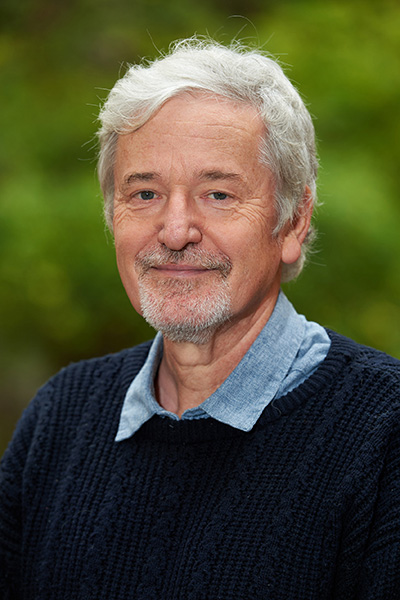
Dr. Volker Hartenstein
email: volkerh@mcdb.ucla.edu
phone: (310) 206-7523
office: 5014 Terasaki Life Sciences Bldg.
website
Research Interests
Brain function is based upon the precise connectivity of a large number of neurons. Connectivity in turn depends in large part on the genetically determined wiring properties of neurons, including their neurite projection, branching, and placement of synaptic contacts with specific partners. Research of my lab revolves around the question how gene expression controls neuronal connectivity and, thereby, brain function. We use the model system Drosophila, where virtually every gene can be targeted for knock-out or activation in a cell type selective manner Drosophila also offers the advantage that its brain is composed of a relatively small number of stereotyped neuronal lineages, groups of neurons descended from individual embryonic stem cells, called neuroblasts.
A longstanding line of research in our lab is to reconstruct how lineages assemble the major circuits of the fly brain. For the small larval brain, this reconstruction can now be done at a so far unparalleled level of resolution, using a series of several thousand contiguous electron microscopic sections in conjunction with a specially developed software package that allows us to assign all synapses to specific neurons and their lineages.
More recently, we have identified a specific circuit, called the anterior visual pathway (AVP), which conducts input form the eye to a brain center, the central complex, known to process and store visual information in order to control fly locomotion (walking, flight). The central part of this circuit is formed by three lineages, whose neurons form several classes of highly ordered parallel and sequential elements. We are investigating the function of the neuronal classes of the AVP, by recording their activity in response to defined visual stimuli, and follow the question of how the developmental history of a neuron (time of birth, placement within the spatial framework of the developing brain) relates to its later connectivity within the AVP circuit.
We conduct research contributing to our understanding of the genetic specification of brain circuitry. During the course of its proliferation, each neuroblast expresses characteristic sets of regulatory genes. These genes are assumed to be relevant in the control of the wiring properties of the neurons born from a particular neuroblast during a particular time interval. Our research aims to link the structurally defined lineages mapped in the larval brain with the neuroblasts of the embryo, using a technique that systematically labels all transcription factors expressed in neuroblasts and then follows the expression of these genes from neuroblast to lineage.
Finally, our work on the genetic patterning of the Drosophila brain guided us towards becoming more active in comparative studies, addressing questions of stem cells and neural development in other animal taxa. We decided to focus on several clades of basal metazoan, notably the flatworms (platyhelminthes) and acoels, generally considered to be the most primitive animals with a central nervous system, as well as cnidarians, which predate bilaterian animals.
Selected Publications
Hartenstein V, "Development of the Nervous System of Invertebrates", In: The Oxford Handbook of Invertebrate Neurobiology 1-91 (2018).
Arboleda E, Hartenstein V, Martinez P, Reichert H, Sen S, Sprecher S, Bailly X., "An Emerging System to Study Photosymbiosis Brain Regeneration, Chronobiology, and Behavior: The Marine Acoel Symsagittifera roscoffensis", Bioessays Aug 27:e1800107: 1-10 (2018).
De Miguel-Bonet MDM, Ahad S, Hartenstein V., "Role of neoblasts in the patterned postembryonic growth of the platyhelminth Macrostomum lignano", Neurogenesis 5: 1-9 (2018).
Deng H, Takashima S, Paul M, Guo M, Hartenstein V., "Mitochondrial dynamics regulates Drosophila intestinal stem cell differentiation", Cell Death Discov 5: 1-13 (2018).
Hartenstein, V, Giangrande A., "Connecting the nervous and the immune systems in evolution", Communications Biology 1: 1-5 (2018).
Donlea JM, Pimentel D, Talbot CB, Kempf A, Omoto JJ, Hartenstein V, Miesenböck G, "Recurrent Circuitry for Balancing Sleep Need and Sleep", Neuron 97: 378-389 (2018).
Kendroud S, Bohra AA, Kuert PA, Nguyen B, Guillermin O, Sprecher SG, Reichert H, VijayRaghavan K, Hartenstein V., "Structure and development of the subesophageal zone of the Drosophila brain. II. Sensory compartments", J Comp Neurol 526: 33-58 (2018).
Martinez P, Hartenstein V, Sprecher, SG., "Xenacoelomorpha Nervous Systems", In: Oxford Research Encyclopedia of Neuroscience 1-55 (2017).
Boyan G, Liu Y, Khalsa SK, Hartenstein V., "A conserved plan for wiring up the fan-shaped body in the grasshopper and Drosophila", Dev Genes Evol 227: 253-269 (2017).
Hartenstein V, Takashima S, Hartenstein P, Asanad S, Asanad K., " bHLH proneural genes as cell fate determinants of entero-endocrine cells, an evolutionarily conserved lineage sharing a common root with sensory neurons", Dev Biol 431: 36-47 (2017).
Hartenstein V, Omoto JJ, Ngo KT, Wong D, Kuert PA, Reichert H, Lovick JK, Younossi-Hartenstein A., "Structure and development of the subesophageal zone of the Drosophila brain. I. Segmental architecture, compartmentalization, and lineage anatomy", J Comp Neurol 526: 6-32 (2017).
Lovick JK, Omoto JJ, Ngo KT, Hartenstein V., "Development of the anterior visual input pathway to the Drosophila central complex", J Comp Neurol 525: 3458-3475 (2017).
Ngo KT, Andrade I, Hartenstein V., "Spatio-temporal pattern of neuronal differentiation in the Drosophila visual system: A user's guide to the dynamic morphology of the developing optic lobe", Dev Biol 428: 1-24 (2017).
Omoto JJ, Keles MF, Nguyen BM, Bolanos C, Lovick JK, Frye MA, Hartenstein V., "Visual Input to the Drosophila Central Complex by Developmentally and Functionally Distinct Neuronal Populations", Curr Biol 27: 1098-1110 (2017).
Omoto JJ, Lovick JK, Hartenstein V., "Origins of glial cell populations in the insect nervous system", Curr Opin Insect Sci 18: 96-104 (2016).
Research Interests
Earlier, we studied the interaction between nitrogen-fixing bacteria (alpha-rhizobia) and legumes such as alfalfa, pea, and soybean to learn why this interaction occurs exclusively with legumes. The roots of legume plants house the bacteria, usually in root nodules, in which the microbes convert atmospheric nitrogen into ammonia, thereby allowing the plant to live without added nitrogen fertilizer. In my early years at UCLA, I demonstrated the importance of phytohormones in nodule development, the significance of various plant and bacterial proteins for adherence to the root, and also showed the conservation of signal transduction pathways in nodulation and mycorrhization pathways based on common gene expression patterns.
Later, we began to investigate what-are-known as "non-traditional" nitrogen fixers, the newly discovered beta-rhizobia, as well as the plants associated with them. Because many of these bacteria exhibit metabolic activities, such as cellulose degradation as well as nodulation and nitrogen fixation (in the case of the beta-rhizobia), they have the potential, not only to be used for enhancing nitrogen nutrition in crop plants, especially as increased energy costs result in greater fertilizer expenditures, but also in the production of biofuels. To this end, I coordinated the sequencing and annotation of four Burkholderia genomes, including a species that nodulates agronomically important legumes growing in arid and acidic soils. In addition, two Micromonospora (actinobacteria) genomes were sequenced and these data are published. Micromonospora is an important Plant Growth Promoting Bacterial (PGPB) species. My lab has also determined that symbiotic Burkholderia spp. are unlikely pathogens based on bioinformatics analyses and by employing HeLa cell and Caenorhabditis elegans assays to determine non-pathogenicity. We recently published on the different arrangement of nodulation and nitrogen fixation genes in the plant-associated Burkholderia versus the well-studied alpha rhizobial species.
Because my research has always focused on the ?hidden half? of the plant, i.e. the root, and especially on the beneficial interactions that take place between plant roots and microbes in the rhizosphere microbiome, I made the transition early on to working on plant microbiomes. In so doing, we began to investigate a broader range of plant-growth promoting bacteria (PGPB), which are associated with roots, especially those isolated from arid environments. Our rationale is that as the climate changes, agricultural productivity will decline because crop-growing regions will become drier and less fertile. Novel drought-adapted, nitrogen-fixing bacteria are likely to provide genetic traits that increase both nutrient availability and environmental tolerance to salinity and drought brought about by reduced rainfall, higher soil acidity, and increased temperatures. In addition, many PGPB are effective at inhibiting plant pathogens, either directly by killing the pathogens or indirectly by making plants healthier so they can overcome pathogen infection. Moreover, a combination of nitrogen-fixing bacteria and one or more PGPB, such as Micromonospora or Bacillus spp., enhance plant growth and yield beyond single inoculation. The development of microbial consortia for plant inocula is the next direction of research that the Hirsch lab is pursuing. The microbes that inhabit nitrogen-fixing nodules grown in field conditions are the best way to determine which bacteria are compatible with another and could be used to establish consortia. My lab is also pursuing metagenomic and cultivation-dependent analysis of dryland soils as a means to find novel bacteria for inoculum development. We have licensed our discoveries from the Negev Desert (Israel) research, and we have a pending agreement with an agricultural company that is developing novel inocula to replace chemical amendments for certain crops. Studies in other deserts and dry environments are also in place.
Selected Publications
Veliz EA, Martínez-Hidalgo P, Hirsch AM., "Chitinase-producing organisms and their role in biocontrol", AIMS Microbiology 3 (3): 689-705 (2019). [link]
Shimomura S, Arima S, Hayashi M, Maymon M, Hirsch AM, Suzuki A., "Blue light does not inhibit nodulation in Sesbania rostrata", Plant Signaling and Behavior 12 (1): 1-4 (2017). [link]
Khan N, Maymon M, Hirsch AM., "Combating Fusarium infection using Bacillus-based antimicrobials", Microorganisms 5: (2017). [link]
Benito P, Alonso-Vega P, Aguado C, Luj?n R, Anzai Y, Hirsch AM, Trujillo MR., "Monitoring the colonization and infection of legume nodules by Micromonospora in co-inoculation experiments with rhizobia", Scientific REPorts 7: 1-12 (2017). [link]
Martínez-Hidalgo P, Hirsch AM., "The nodule microbiome: N2-fixing rhizobia do not live alone", Phytobiomes 1 (2): 1-52 (2017). [link]
De Meyer SE, Briscoe L, Martínez-Hidalgo P, Agapakis CM, Estrada de-los Santos P, Seshadri R, Reeve W, Weinstock G, O'Hara G, Howieson J, Hirsch AM., "Symbiotic Burkholderia species show diverse arrangements of nif/fix and nod genes, and lack typical high affinity cytochrome cbb3 oxidase genes", Mol. Plant-Microbe Interact 29: 609-619 (2016). [link]
Nagata M, Yamamoto N, Miyamoto T, Shimomura A, Arima S, Hirsch AM, Suzuki A. 2016. Enhanced hyphal growth of arbuscular mycorrhizae by root exudates derived from high R/FR treated Lotus japonicus., "Enhanced hyphal growth of arbuscular mycorrhizae by root exudates derived from high R/FR treated Lotus japonicus", Plant Signal. Behav 11: 1-3 (2016). [link]
Shimomura A, Naka A, Miyazaki N, Moriuchi S, Arima S, Sato S, Hirakawa H, Tabata S, Hayashi M, Maymon M, Hirsch AM, Suzuki A., "Blue light perception by both roots and rhizobia inhibits nodule formation in Lotus japonicus", Molecular Plant-Microbe Interactions 29: 786-796 (2016). [link]
Sanders ER, Moberg-Parker J, Hirsch AM, Lee PY, Shapiro C, Toma S, Levis-Fitzgerald M., "Transforming laboratory education in the life sciences", Microbe 11: 69-74 (2016).
Nagata, M., Yamamoto, N., Shigeyama, T. Terasawa, Y., Anai, T., Sakai, T., Inada, S., Arima, S., Hashiguchi M., Akashi, R., Hirsch, A.M., Suzuki, A, "Red/far red light controls mycorrhizal colonization via jasmonic acid and strigolactone secretion", Plant Cell Physiol 56: 2100-2109 (2015). [link]
Maymon M, Martínez-Hidalgo P, Tran SS, Ice T, Craemer K, Anbarchian T, Sung T, Chou M, Hwang L, Fujishige NA, Ventosa J, Villella W, Sikorski J, Faull KF, Sanders ER. Hirsch AM., "Mining the phytomicrobiome to understand how bacterial coinoculations enhance plant growth", Frontiers in Plant Science 6: 1-14 (2015). [link]
Amaya-Gomez, C.V., Hirsch, A.M., and Soto, M.J., ", "Biofilm formation assessment in Sinorhizobium meliloti reveals interlinked control with surface motility", BMC Microbiology 15: 1-147 (2015). [link]
Estrada-de los Santos P, Rojas-Rojas FU, Tapia-García EY, Vásquez-Murrieta MS, Hirsch AM., "To split or not to split: an opinion on dividing the genus Burkholderia", Ann. Microbiol 66: 1303-1314 (2015). [link]
Tariq M, Lum MR, Chong AW, Amirapu AB, Hameed S, Hirsch AM., "A reliable method for the selection and confirmation of transconjugants of plant growth-promoting bacteria especially plant-associated Burkholderia spp", J. Microbiol. Methods 117: 49-53 (2015). [link]
Coutinho Moraes, D.F., Still D., Lum, M.R., Hirsch, A.M., "DNA-based authentication of botanicals and plant-derived dietary supplements: where have we been and where are we going?", Planta Medica 81: 687-695 (2015). [link]
Research Interests
Endothelial cells are unique in their ability to switch from a "differentiated" (non-dividing, non-invasive) to a relatively "undifferentiated" (invasive and highly mitotic) phenotype during the process of blood vessel formation or angiogenesis. We are intrigued by this plasticity and our research efforts are guided towards understanding the molecular mechanisms involved in the regulation of endothelial gene expression. It is hoped that understanding the regulation of this switch will teach us lessons about differentiation pathways in general. Under this umbrella, the major focus of the laboratory has been the dissection of genetic programs involved in the formation and involution of blood vessels during development and in pathological conditions.
In the projects related to developmental angiogenesis, our models include the murine mammary gland and the chicken embryo. The mammary gland provides us with an excellent platform in which to study the expansion and regression of the vasculature associated with the physiological changes of this organ. The chicken embryo enables us to study the formation and remodeling of the vasculature during normal development. Using these two models we search for genes involved in vascular morphogenesis and ask funtional/mechanistic questions using genetics (transgenics and knock-outs in the case of the mouse) and molecular biology (transfection or chicken embryos using electroporation). By perturbing gene expression we hoped to further dissect the molecular pathways that guide vascular formation and remodeling.
A second focus of the lab has been to identify novel angiogenesis inhibitors. Evolution of several pathologies, including the growth of tumors, requires formation of new blood vessels. Blockade of these new blood vessels had been extremely effective in the restriction of tumor growth and suppression of metastasis. Therefore, the identification of novel, tumor-vascular specific, and non-toxic inhibitors has become a major focus of several academic and biotechnology groups. Using the anti-angiogenic region of thrombospondin-1 we have cloned and characterized two novel inhibitors METH-1 (also known as ADAMTS-1) and METH-2 (also known as ADAMTS-8). METH-1 and 2 are able to effectively suppress proliferation of new capillaries and in xenograph assays inhibit the growth of tumors. Both molecules are secreted matrix metalloproteases with disintegrin and thrombospondin motifs. We have invested a great effort in the full characterization and in understanding the mechanisms of action of these molecules. Projects include structure/function analysis of each of the domains: generation of transgenics and knock-ins, identification of substrates / natural inhibitors, and understanding regulation of gene expression.
The effect of steroid hormones, in particular progesterone, on vascular networks in vivo is another focus of the lab. We have found that progesterone inhibits endothelial cell proliferation and have remarkable effects in vascular permeability. Determination of the signaling pathways that result in these events and their biological relevance are major research efforts on this project.
Selected Publications
Keklikoglou, I., CIanciaruso, C., Guc, E., Squadrito, M.L., Spring, L.M., Tazzyman, S., Lambien, L., Poissonnier, A., Ferraro, G.B., Baer, C., Cassara, A., Guichard, A., Iruela-Arispe, M.L., Lewis, C.E., Coussens, L.M., Bardia, A., Jain, R.K., Pollard, J.W., De Palma, M., "Chemotherapy elicits pro-metastatic extracellular vesicles in breast cancer models", Nature Cell Biol (2018).
Iruela-Arispe, M.L., "Pumping blood with self-reliance and cooperation", Journal of Experimental Medicine 215 (10): 2480-2482 (2018).
Iruela-Arispe, M.L., "A dual origin for blood vessels", Nature 562 (7726): 195-197 (2018).
McDonald, A.I., Shirali, A.S., Arag?n, R., Ma, F., Hernandez, G., Vaughn, D.A., Mack, J.J., Lim, T.Y., Sunshine, H., Zhao, P., Kalinichenko, V., Hai, T., Pelegrini, M., Ardehali, R., and Iruela-Arispe, M.L., "Endothelial Regeneration of Large Vessels is a Biphasic Process Driven by Local Cells with Distinct Proliferative Capacities", Cell Stem Cell 23 (2): 210-225 (2018).
Archer, B., Ueberrueck, T., Mack, J., Yousef, K., Jarenwattananon, N.N., Rall, D., Wypysek, D., Wiese, M., Bluemich, B., Wessling, M., Iruela-Arispe, L., and Bouchard, L., "Non-Invasive Quantification of Cell Density in 3D Gels by MRI", IEEE Trans Biomed Eng 1-10 (2018). [link]
Jelinek, D., Flores, A., Uebelhoer, M., Pasque, V., Plath, K., Iruela-Arispe, M.L., Christofk, H.R., Lowry, W.E., and Coller, H.A., "Mapping Metabolism: Monitoring Lactate Dehydrogenase Activity Directly in Tissue", J Vis Exp (2018). [link]
Chattopadhyay, A., Yang, X., Mukherjee, P., Sulaiman, D., Fogelman, H.R., Grijalva, V., Dubinett, S., Wasler, T.C., Paul, M.K., Salehi-Rad, R., Mack, J.J., Iruela-Arispe, M.L., Navab, M., Fogelman, A.M., and Reddy, S.T., "Treating the Intestine with Oral ApoA-I Mimetic Tg6F Reduces Tumor Burden in Mouse Models of Metastatic Lung Cancer", 8 (1): 9032-9043 (2018).
Hilfenhaus, G., Nguyen, D., Freshman, J., Prajapati, D., Ma, F., Song, D., Ziyad, S., Cuadrado, M., Pellegrini, M., Bustelo, X.R., and Iruela-Arispe, M.L., "VAV3-induced Cytoskeletal Dynamics Contribute to Heterotypic Properties of Endothelial Barriers", J Cell Biol 217 (8): 2813-2830 (2018).
Nowak-Sliwinska, P., Alitalo, K., Allen, A., Anisimov, A., Aplin, A.C., Auerbach, R., Augustin, A.G., Bates, D.O., van Beijnum, J.T., Bender, R.H.,F., Bergers,G., Bikfalvi, A., Bischoff, J., Böck B.C., Brooks, P.C., Bussolino, F., Cakir, B., Carmeliet, P., Castranova, D., Cimpean, A.M., Cleaver, O., Coukos, G., Davis, G.E., De Palma, M., Dimberg, A., Dings, R.P.M., Djonov, V., Dudley, A.C., Dufton, N.P., Fendt, S.M., Ferrara, N., Fruttiger, M., Fukumura, D., Ghesquière, B., Gong, Y., Griffin, R.J., Harris, A.L., Hughes, C.C.W., Hultgren, N.W., Iruela-Arispe, M.L., Irving, M., Jain, R.K., Kalluri, R., Kalucka, J., Kerbel, R.S., Kitajewski, J., Klaassen, I., Kleinmann, H.K., Koolwijk, P., Kuczynski, E., Kwak, B.R., K. Marien, J. M. Melero-Martin, L. L. Munn, R. F. Nicosia, A. Noel, J. Nurro, A.-K. Olsson, T. V. Petrova, Pietras, K., Pili, R., Pollard, J.W., Post, M.J., Quax, P.H.A., Rabinovich, G.A., Raica, M., Randi, A.M., Ribatti, D., Ruegg, C., Schlingemann, R.O., Schulte-Merker, S., Smith, L.E.H., Song, J.W., Stacker, S.A., Stalin, J., Stratman, A.N., Van de Velde, M., van Hinsbergh, V.W.M., Vermeulen, P.B., Waltenberger, J., Weinstein, B.M., Xin, H., Yetkin-Arik, B., Yla-Herttuala, S., Yoder, M.C., and Griffioen, A.W., "Consensus guidelines for the use and interpretation of angiogenesis assays", Angiogenesis 21 (3): 425-532 (2018).
Mack, J.J., and Iruela-Arispe, M.L., "NOTCH regulation of the endothelial cell phenotype", Current Opinion in Hematology 25 (3): 212-218 (2018).
Freitas, V.M., Hilfenhaus, G., and Iruela-Arispe, M.L., "Metastasis of Circulating Tumor Cells: Speed Matters", Developmental Cell 45 (1): 3-5 (2018).
Shirali, A.S., Romay, M.C., McDonald, A.I., Su, T., Steel, M.E., and Iruela-Arispe, M.L., "A multi-step transcriptional cascade underlies vascular regeneration in vivo", Scientific Reports 8 (1): 1-17 (2018).
Li, L., Zeng, Q., Bhutkar, A., Galvan, J., Karamitopoulou, E., Necsulea, A., Noordermeer, D., Piersigilli, A., Peng, M., Perren, A., Ziobec, I., Robinson, H., Iruela-Arispe, M.L., and Hanahan, D., "GKAP acts as a genetic modulator of NMDAR signaling to govern invasive tumor growth", Cancer Cell 33 (4): 736-751 (2018). [link]
Sereti, K.I., Nguyen, N.B., Kamran, P., Zhao, P., Ranjbarvaziri, S., Park, S., Sabri, S., Engel, J.L., Sung, K., Kulkarni, R.P., Ding, Y., Hsiai, T.K., Plath, K., Ernst, J., Sahoo, D., Mikkola, H.K.A., Iruela-Arispe, M.L., and Ardehali, R., "Analysis of cardiomyocyte clonal expansion during mouse heart development and injury", Nature Communications 9 (1): 1-13 (2018).
Ziyad, S., Riordan, J.D., Cavanaugh, A.C., Su, T., Hernandez, G.E., Hilfenhaus, G., Morselli, M., Huynh, K., Wang, K., Chen, J.N., Dupuy, A.J., and Iruela-Arispe, M.L., "A forward genetic screen targeting the endothelium reveals a regulatory role for the lipid kinase Pi4Ka in myelo- and erythropoiesis", Cell Reports 22 (5): 1211-1224 (2018).
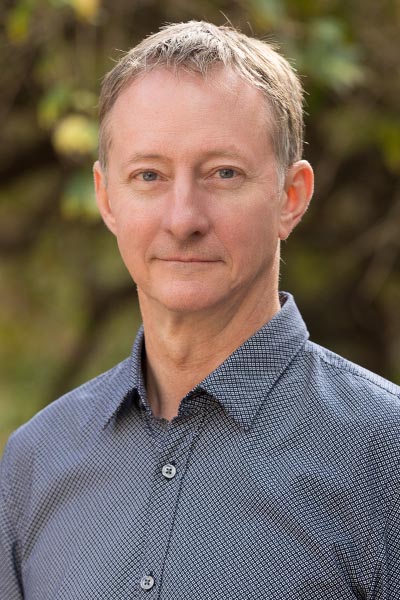
Dr. Steve Jacobsen
email: jacobsen@ucla.edu
phone: (310) 825-0182
office: 4028 Terasaki Life Sciences Building
website
Research Interests
Steve Jacobsen studies DNA methylation and epigenetic gene regulation processes that play important roles in development, defense against transposons, and genome integrity. His laboratory uses genetics, genomics, and biochemistry in both the model plant Arabidopsis and the mouse. The work focuses on mechanisms by which DNA methylation, histone methylation, and noncoding RNAs converge in a number of overlapping and self-reinforcing pathways to promote stable and heritible gene silencing.
See lab web site for more details http://www.mcdb.ucla.edu/Research/Jacobsen/LabWebSite/P_Index.php
Selected Publications
Sisi Li, Linda Yen, William A. Pastor, Jonathan B. Johnston, Jiamu Du, Colin Shew, Wanlu Liu, Jamie Ho, Bryan Stender, Amander T. Clark, Alma L. Burlingame, Lucia Daxinger, Dinshaw J. Patel, and Steven E. Jacobsen, "Mouse MORC3 is a GHKL ATPase that localizes to H3K4me3 marked chromatin", Proc. Nat. Acad. Sci. U. S. A 113E: 5108-5116 (2016).
Adam J. Bewick, Lexiang Ji, Chad E. Niederhuth, Eva-Maria Willing, Brigitte T. Hofmeister, Xiuling Shi, Li Wang, Zefu Lu, Nicholas A. Rohr, Benjamin Hartwig, Christiane Kiefer, Roger B. Deal, Jeremy Schmutz, Jane Grimwood, Hume Stroud, Steven E. Jacobsen, Korbinian Schneeberger, Xiaoyu Zhang, and Robert J. Schmitz, "On the origin and evolutionary consequences of gene body DNA methylation", Proc. Nat. Acad. Sci. U. S. A 113: 9111-9116 (2016).
Martin Groth, Guillaume Moissiard, Markus Wirtz, Haifeng Wang, Carolina Garcia-Salinas, Perla A. Ramos-Parra, Sylvain Bischof, Suhua Feng, Shawn J. Cokus, Amala John, Danielle C. Smith, Jixian Zhai, Christopher J. Hale, Jeff A. Long, Ruediger Hell, Rocio I. Diaz de la Garza & Steven E. Jacobsen, "MTHFD1 controls DNA methylation in Arabidopsis", Nature Communications 7:11640 (13 pages): (2016).
Christopher J. Hale, Magdalena E. Potok, Jennifer Lopez, Truman Do, Ao Liu, Javier Gallego-Bartolome, Scott D. Michaels, Steven E. Jacobsen, "Identification of Multiple Proteins Coupling Transcriptional Gene Silencing to Genome Stability in Arabidopsis thaliana", PLOS Genetics DOI:10.1371 (pgen1006092 20 pages): (2016).
C. Jake Harris, Dylan Husmann, Wanlu Liu, Farid El Kasmi, Haifeng Wang, Ashot Papikian, William A. Pastor, Guillaume Moissiard, Ajay A. Vashisht, Jeffery L. Dang, James A. Wohlschlegel, Steven E. Jacobsen, "Arabidopsis AtMORC4 and AtMORC7 Form Nuclear Bodies and Repress a Large Number of Protein-Coding Genes", PLOS Genetics DOI:10.1371 (pgen1005998 22 pages): (2016).
William A. Pastor, Di Chen, Wanlu Liu, Rachel Kim, Anna Sahakyan, Anastasia Lukianchikov, Kathrin Plath, Steven E. Jacobsen, and Amander T. Clark, "Naive Human Pluripotent Cells Feature a Methylation Landscape Devoid of Blastocyst or Germline Memory", Cell Stem Cell 18: 323-329 (2016).
Sisi Li, Zhenlin Yang, Xuan Du, Rui Liu, Alex W. Wilkinson, Or Gozani, Steven E. Jacobsen, Dinshaw J. Patel, and Jiamu Du, "Structural Basis for the Unique Multivalent Readout of Unmodified H3 Tail by Arabidopsis ORC1b BAH-PHD Cassette", Structure 24: 486-494 (2016).
Haifeng Wang, Getu Beyene, Jixian Zhai, Suhua Feng, Noah Fahlgren, Nigel J. Taylor, Rebecca Bart, James C. Carrington, Steven E. Jacobsen, and Israel Ausin, "CG gene body DNA methylation changes and evolution of duplicated genes in cassava", Proc. Nat. Acad. Sci. U. S. A 112: 13729-13734 (2015).
Jixian Zhai, Sylvain Bischof, Haifeng Wang, Suhua Feng, Tzuu-fen Lee, Chong Teng, Xinyuan Chen, Soo Young Park, Linshan Liu, Javier Gallego-Bartolome, Wanlu Liu, Ian R. Henderson, Blake C. Meyers, Israel Ausin, and Steven E. Jacobsen, "A One Precursor One siRNA Model for Pol IV-Dependent siRNA Biogenesis", Cell 163: 445-455 (2015).
Puya G. Yazdi, Brian A. Pedersen, Jared F. Taylor, Omar S. Khattab, Yu-Han Chen, Yumay Chen, Steven E. Jacobsen, Ping H. Wang, "Increasing Nucleosome Occupancy Is Correlated with an Increasing Mutation Rate so Long as DNA Repair Machinery Is Intact", PLOS ONE 10 (e0136574): 1-16 (2015).
Puya G. Yazdi, Brian A. Pedersen, Jared F. Taylor, Omar S. Khattab, Yu-Han Chen, Yumay Chen, Steven E. Jacobsen, Ping H. Wang, "Nucleosome Organization in Human Embryonic Stem Cells", PLOS ONE 10 (e0136314): 1-18 (2015).
Jiamu Du, Lianna M. Johnson, Steven E. Jacobsen and Dinshaw J. Patel, "DNA methylation pathways and their crosstalk with histone methylation", Nature Reviews Molecular Cell Biology 16: 519-532 (2015).
Marco Morselli, William A Pastor, Barbara Montanini, Kevin Nee, Roberto Ferrari, Kai Fu, Giancarlo Bonora, Liudmilla Rubbi, Amander T Clark, Simone Ottonello, Steven E Jacobsen, and Matteo Pellegrini, "In vivo targeting of de novo DNA methylation by histone modifications in yeast and mouse", eLife 4 (e060205): 1-21 (2015).
Shuaibin Zhang, Bing Zhou, Yanyuan Kang, Xia Cui, Ao Liu, Angelique Deleris, Maxim VC Greenberg, Xiekui Cui, Qi Qiu, Falong Lu, James A Wohlschlegel, Steven E Jacobsen and Xiaofeng Cao, "C-terminal domains of histone demethylase JMJ14 interact with a pair of NAC transcription factors to mediate specific chromatin association", Cell Discovery 1 (15003): 1-13 (2015).
Xuehua Zhong, Christopher J. Hale, Minh Nguyen, Israel Ausin, Martin Groth, Jonathan Hetzel, Ajay A. Vashisht, Ian R. Henderson, James A. Wohlschlegel, and Steven E. Jacobsen, "DOMAINS REARRANGED METHYLTRANSFERASE3 controls DNA methylation and regulates RNA polymerase V transcript abundance in Arabidopsis", Proc. Nat. Acad. Sci. U. S. A 112: 911-916 (2015).

Dr. Tracy Johnson
email: tljohnson@ucla.edu
phone: (310) 206-2416
office: 5159 TLSB Terasaki Life Sciences Building
website
Research Interests
Regulation of gene expression is crucial for every function carried out by the cell, from cell growth and proliferation to the ability of the cell to respond to its ever-changing environment. Hence, understanding cellular function and dysfunction is dependent upon deciphering these gene regulatory mechanisms. This is particularly challenging in the case of eukaryotic genes, which are often interrupted by long stretches of noncoding sequences (introns). These are removed from the newly synthesized RNA, and the remaining sequences (exons) are ligated together to form a mature messenger RNA. This process, pre-messenger RNA splicing, is carried out by the spliceosome made up of 5 small nuclear RNAs and over 100 proteins. Correct splicing is crucial to proper gene expression. In fact, it is estimated that over a quarter of all point mutations that lead to genetic disease are caused by defective splicing.
The spliceosome undergoes dynamic rearrangements in order to recognize splicing signals in the RNA and catalyze the splicing reaction. The goal of our research is to decipher the workings of this elegant ribonucleoprotein machine, which has become even more intriguing in light of evidence that splicing signals are recognized co-transcriptionally, while the RNA polymerase is still engaged with a chromatin template. Our work is focused on three key areas: (i) understanding the molecular details of the spliceosome rearrangements involved in splice site recognition and splicing catalysis; (ii) dissecting how this occurs in the context of transcription, chromatin modification, and other RNA processing events; and (iii) understanding how the cell exploits these mechanisms to respond to its environment.
Selected Publications
Awad AM, Venkataramanan S, Nag A, Galivanche AR, Bradley MC, Neves LT, Douglass S, Clarke CF, Johnson TL., "Chromatin-remodeling SWI/SNF complex regulates coenzyme Q6 synthesis and a metabolic shift to respiration in yeast", J Biol Chem 292 (36): 14851-14866 (2017).
Venkataramanan, S., Douglass, S., Galivanche, A.R., and T.L. Johnson., "The chromatin remodeling complex Swi/Snf regulates splicing of meiotic transcripts in Saccharomyces cerevisiae", Nucleic Acids Research 45 (13): 7708-7721 (2017). [link]
Neves, L.T., Douglass, S., Spreafico, R., Venkataramanan, S., Kress, T.L. and T.L. Johnson., "The Histone Variant H2A.Z promotes efficient cotranscriptional splicing in S. cerevisiae", Genes & Development 31: 702-717 (2017).
Johnson, T.L. and Ares, M.Jr., "SMITten by the Speed of Splicing", Cell 165 (2): 265-267 (2016).
Merkhofer, E.C., Hu, P., and Johnson, T.L., "Introduction to cotranscriptional RNA splicing", Methods Mol Biol 1126: 83-96 (2014).
Hossain, M.A. and Johnson, T.L., "Using yeast genetics to study RNA splicing", Methods Mol Biol 1126: 285-298 (2014).
Hossain, M.A., Chung, C., Pradhan, S.K., and Johnson, T.L., "The yeast cap binding complex modulates transcription factor recruitment and establishes proper histone H3K36 trimethylation during active transcription", Mol Cell Biol 33 (4): 785-799 (2013).
Brangwynne and Johnson, T.L., "The micro and macro of RNA function", Mol. Biol. Cell 24 (6): (2013).
Merkhofer, E. and Johnson, T.L., "Preview: U1 snRNA writes the script", Cell 150 (1): 9-11 (2012).
Johnson, T.L. and Vilardell, J., "Regulated pre-mRNA splicing: the ghostwriter of the eukaryotic genome", Biochem. Biophys. Acta: Gene Regulatory Mechanisms (2012).
Baumgartner, B.L., Bennett, M.R., Ferry, M., Johnson, T.L., Tsimring, L.S., Hasty, J., "Antagonistic gene transcripts regulate adaptation to new growth environments", Proc Natl Acad Sci USA 108 (52): 21087-21092 (2011).
Hossain, M.A., Rodriguez, C.M., and T.L. Johnson, "Key features of the two-intron Saccharomyces cerevisiae gene SUS1 contribute to its alternative splicing", Nucleic Acids Res 39 (19): 8612-8627 (2011).
Gunderson, F.Q., Merkhofer, E.C. and T.L. Johnson, "Dynamic histone acetylation is critical for co-transcriptional spliceosome assembly and spliceosomal rearrangements", Proc Natl Acad Sci USA 108 (5): 2004-2009 (2011).
McKay, S.L. and Johnson, T.L., "An investigation of a role for the U2 snRNP spliceosomal components in regulating transcription", PLoS ONE 6 (1): (2011).
McKay, S. and T.L. Johnson, "A bird?s eye view of post-translational protein modifications and the regulation of spliceosome dynamics", Molecular Biosystems (2010).
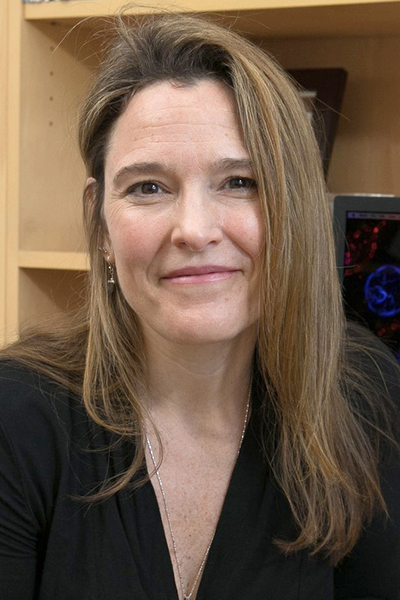
Dr. Leanne Jones
email: leannejones@ucla.edu
phone: (310) 206-7066
office: 5139 Terasaki Life Science Bldg
website
Research Interests
Stem cells are the building blocks during development of organisms as varied as plants and humans. In addition, stem cells provide for the maintenance and regeneration of tissues, such as blood and skin, throughout the lifetime of an individual. The ability of stem cells to contribute to these processes depends on their ability to divide and generate both new stem cells (self-renewal) as well as specialized cell types (differentiation). The Jones lab uses the fruit fly Drosophila melanogaster and mammalian intestinal tissue as model systems to establish paradigms for how stem cell behavior is controlled.
Selected Publications
R. Sênos Demarco, B.S. Uymeura, C. D?Alterio, and D. L. Jones, "Mitochondrial fusion regulates lipid homeostasis and stem cell maintenance in the Drosophila testis", Nat. Cell Biol (2019).
M. Loza-Coll, C.C. Petrossian, M. L. Boyle, and D. L. Jones., "Heterochromatin Protein 1 (HP1) inhibits stem cell proliferation induced by ectopic activation of the Jak/STAT pathway in the Drosophila testis", Exp. Cell Res (2019). [link]
Resnik-Docampo M, Sauer V, Schinaman JM, Clark RI, Walker DW, Jones DL., "Keeping it tight: The relationship between bacterial dysbiosis, septate junctions, and the intestinal barrier in Drosophila", Fly (2018). [link]
A.M. Salazar, M. Resnik-Docampo. M. Ulgerait, R. I. Clark, M. Shirasu-Hiza, D. L. Jones, and D. W Walker., "Intestinal Snakeskin limits microbial dysbiosis during aging and promotes longevity", iScience (2018). [link]
M. Miranda, H. Christofk, D. L. Jones and W.E. Lowry, "Topical Inhibition of the Electron Transport Chain Can Stimulate the Hair Cycle", J. Investigative Dermatology (2018). [link]
M. Loza-Coll and D. L. Jones, "Simultaneous control of stemness and differentiation by the transcription factor Escargot in adult stem cells: how can we tease them apart?", Fly 10 (2): 53-59 (2016).
Martin Resnik, C. L. Koheler, R. Clarke, J.M. Schinaman, V. Sauer, C. D?Alterio, D. Wong, S. Lewis, Y. Wu, E. Stefani, D. Walker, and D. L. Jones, "ricellular junctions regulate intestinal stem cell behavior to maintain homeostasis", Nature Cell Biology In press: (2016).
A. E. Conway, E. L. Van Nostrand, G.A. Pratt, S. Aigner, M. L. Wilbert, B. Sundararaman, P. Freese, N. J. Lambert, S. Sathe, T. Y. Liang, A. Essex, S. Landais, C.B. Burge, D. L. Jones*, G. W. Yeo*, "Enhanced CLIP uncovers IMP protein-RNA targets in human pluripotent stem cells important for cell adhesion and survival", Cell Reports 15 (3): 666-679 (2016).
H. Toledano and D.L. Jones, "Age-related changes to Drosophila m. Male Germline Stem Cells", In: Stem Cell Aging: Mechanisms, Consequences, Rejuvenation 71-84 (2015).
K. Munger and D.L. Jones, "HPV Carcinogenesis- An identity crisis in the Retinoblastoma Tumor Suppressor Pathway", Journal of Virology 89 (9): 4708-4711 (2015).
R. Demarco, Å. Eikenes, K. Heglund, and D.L.Jones, "Investigating spermatogenesis in Drosophila melanogaster", Methods 68 (1): 218-227 (2014).
M. Loza Coll, T. Southall, S. Sandall, A. Brand, and D.L. Jones, "Regulation of Drosophila intestinal stem cell maintenance and differentiation by the transcription factor Escargot", EMBO Journal 33 (24): 2983-2996 (2014).
J. P. Korzelius, S.K. Naumann, M.A. Loza-Coll, J.S.K.Chan, D. Dutta, J. Oberheim, C. Glaesser, T. Southall, A. Brand, D. L. Jones, B.A. Edgar, "Escargot maintains stemness and suppresses differentiation in Drosophila intestinal stem cells", EMBO Journal 33 (24): 2967-2982 (2014).
Resende, L.P.F., Boyle, M., Tran, D., Fellner, T. & Jones, D. L., "Headcase promotes cell survival and niche maintenance in the Drosophila testis", PLoS One 8 (7): (2013).
J.H. Hur, S. Bahadorani, J. Graniel, C.L. Koehler, M. Ulgherait, M. Rera, D.L. Jones, and D.W. Walker, "Increased food intake and longevity mediated by yeast NDI1 expression in Drosophila intestinal stem and progenitor cells", Aging 5 (9): (2013).
Research Interests
Selected Publications
Corinne Lours, Olivier Bardot, Dorothea Godt, Frank A. Laski and Jean-Louis Couderc, "The Drosophila melanogaster BTB proteins bric a brac bind DNA through a composite DNA binding domain containing a pipsqueak and an AT-Hook motif", Nucleic Acids Research 31 (18): 5389-5398 (2003).
Bardot, Olivier, Dorothea Godt, Frank A. Laski, and Jean-Louis Couderc, "Expressing UAS-bab1 and UAS-bab2: A comparative study of gain of function effects and the potential to rescue the bric a brac mutant phenotype", Genesis 34: 66-70 (2002).
Cabrera, Gwendolyn R., Dorothea Godt, Peir-Yu Fang, Jean-Louis Couderc, and Frank A. Laski, "Expression pattern of Ga14 enhancer trap insertions into the bric a brac locus generated by P element", Genesis 34: 62-65 (2002).
Couderc, Jean-Louis,Dorothea Godt,Susan Zollman, Jiong Chen, Michelle Li, Stanley Tiong, Sarah E. Cramton, Isabelle Sahut-Barnola, and Frank A. Laski, "The bric a brac locus consists of two paralogous genes encoding BTB/POZ domain proteins, and acts as a homeotic and morphogenetic regulator if imaginal development in Drosophila", Development 129: 2419-2433 (2002).
Rio, Donald C., Frank A. Laski and Gerald M. Rubin, "Identification and immunochemical analysis of biologically active Drosophila P element transposase", Cell 44: 21-32 (1996).
Sahut, Isabelle, Dorothea Godt, Frank A. Laski and Jean-Louis Couderc, "Drosophila ovary morphogenesis: analysis of terminal filament formation and identification of a gene required for this process", Developmental Biology 170: 127-135 (1995).
Godt, Dorothea and Frank A. Laski, "Mechanism of cell rearrangement and cell recruitment in Drosophila ovary morphogenesis and the requirement of a bric a brac", Development 121: 173-187 (1995).
Zollman, Susan, Dorothea Godt, Gilbert G. Prive, Jean-Louis Couderc and Frank A. Laski, "The BTM domain, primarily found in zinc finger proteins, defines an evolutionarily conserved family that includes several developmentally regulated genes of Drosophila", Proc. Natl. Acad. Sci. USA 91: 10717-10721 (1994).
Cramton, Sarah E. and Frank A. Laski, "String of pearls encodes Drosophila ribosomal protein S2, has Minute-like characteristics, and is required during oogenesis", Genetics 137: 1039-1048 (1994).
Godt, Dorothea, Jean-Louis Couderc, Sara E. Cramton and Frank A. Laski, "Pattern Formation in the limbs of Drosophila: braic a brac is expressed in both a gradient and a wave-like pattern and is required for specification and proper segmentation of the tarsus", Development 119: 799-812 (1993).
Godt, Dorothea, Jean-Louis Couderc, Sarah E. Cramton and Frank A. Laski, "Pattern formation in the limbs of Drosophila: Bric a Braqc is expressed in both a gradient and a wave-like pattern and is required for specification and proper segmentation of the tarsus", Development 119: 799-812 (1993).
Janet C. Tseng, Susan Zollman, Aileen C. Chain, and Frank A. Laski, "Splicing of the Drosophila P element ORF2-ORF3 intron is inhibited in a human cell extract", Mechanisms of Development 35: 65-72 (1991).
Chain, Aileen C., Susan Zollman, Janet C. Tseng and Frank A. Laski, "Identification of a cis-acting Sequence Required for Germ-line-specific Splicing of the P element ORF2-ORF3 Intron", Intron. Molecular and Cellular Biology 11: 1538-1546 (1991).
Laski, Frank A., Subinay Ganguly, Phillip A. Sharp, Uttam L. RajBhandary and Gerald M. Rubin, "Construction, Function and Stable Transformation of a tRNA Nonsense Suppressing Gene in Drosphila melanogaster", Proc. Natl. Acad. Sci. USA 86: 6696-6698 (1989).
Laski, Frank, A. and Gerald M. Rubin, "Analysis of the cis-acting Requirements for Germline-specific Splicing of the P element", Genes and Development 3: 720-728 (1989).
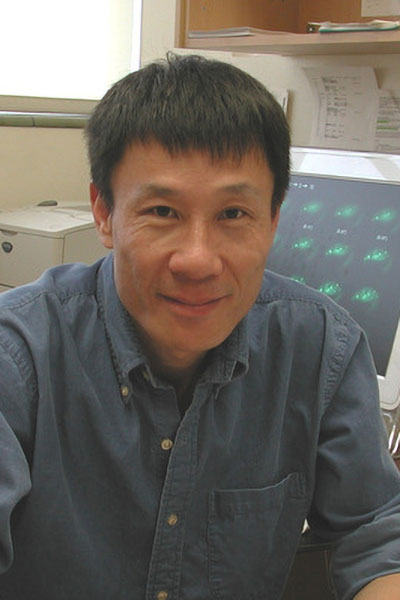
Dr. Chentao Chentao_Lin
email: clin@mcdb.ucla.edu
phone: (310) 206-9576
office: 4014 Terasaki Life Science Building
website
Research Interests
We are interested in understanding a photosensory receptor called cryptochrome. Cryptochrome is a blue light receptor found in different organisms from a small weed Arabidopsis thaliana to a large animal Homo sapiens. Cryptochrome absorbs blue/UV-A light and it regulates various biological processes including biological clock in animals and flowering time in plants. We choose to work on an Arabidopsis cryptochrome, cry2 (cryptochrome 2), because Arabidopsis is relatively easy to work with. It is also a lot of fun to work with Arabidopsis because its genome has been completely sequenced so that we can use not only molecular genetics and biochemical techniques but also functional genomics approaches to solve our problems. We have found that cry2 regulates Arabidopsis flowering time, and we are trying to figure out how does cry2 do that (namely, what is the signal transduction mechanism of cry2)? We also try to understand how blue-light receptor cryptochromes work together with red-light receptor phytochromes in regulating cell elongation (namely, what is the co-action mechanism of different photoreceptors). You are welcome to come, discuss, or work on these challenge problems. You can also visit our homepage (http://www.mcdb.ucla.edu/Research/Lin/) to get more information about our work.
Selected Publications
Wang, Q., and Lin, C. (2020) Mechanisms of cryptochrome-mediated photoresponses in plants. Annual Review of Plant Biology 71:23.1–23.27.
Liu Q, Su T, He W, Ren H, Liu S, Chen Y, Gao L, Hu X, Lu H, Cao S, Huang Y, Wang X, Wang Q, Lin C. (2020). Photo-oligomerization determines photosensitivity and photoreactivity of plant cryptochromes. Mol Plant. 13, 398–413
Liu, H., Su T., He,W., Wang, Q., and Lin, C. (2019) The universally conserved residues are not universally required for stable protein expression or functions of cryptochromes. Mol. Biol. Evol. 37(2):327-340.
Wang, Q., Liu, Q., Wang, X., Zuo, Z., Oka, Y., and Lin, C. (2018). Beyond the photocycle – how cryptochromes regulate photoresponses in plants? Current Opinion in Plant Biology 45:120–126
Liu, Q., Wang, Q., Deng, W., Wang, X., Piao, M., Cai, D., Li, Y., Barshop, W. D., Yu, X., Liu, B., Oka, Y., Wohlschlegel, J., Zuo, Z., and Lin, C., (2017), Molecular basis for blue light-dependent phosphorylation of Arabidopsis cryptochrome 2, Nature Communications 8: 15234.
Wang, Q., Zuo, Z., Wang, X., Gu, L., Yoshizumi, T., Yang, Z., Yang, L., Liu, Q., Liu, W., Han, Y.-J., Kim, J.-I., Liu, L., Wohlschlegel, J.M., Matsui, M., Oka, Y., and Lin, C. (2016) Photoactivation and inactivation of Arabidopsis cryptochrome 2. Science 354:343-347.
Liu, B., Liu, H., Zhong, D., and Lin, C. (2010) Searching for a photocycle of the cryptochrome photoreceptors. Current Opinion in Plant Biology 13:578–586
Liu, H. Yu, X., Li, K., Klejnot, J., Yang, H., Lisiero, D. and Lin, C. (2008) Photoexcited CRY2 interacts with CIB1 to regulate transcription and floral initiation in Arabidopsis. Science 322: 1535-1539
Lin, C. and Shalitin, D. (2003) Cryptochrome structure and signal transduction. Annu. Rev. Plant Biol. 54: 469-496
Shalitin, D., Yang, H., Mockler, T. C., Maymon, M., Guo, H., Whitelam, G. C., and Lin, C. (2002) Regulation of Arabidopsis cryptochrome 2 by blue light-dependent phosphorylation. Nature 417:763-767
Guo, H., Yang, H., Mockler,T. C., and Lin, C. (1998) Regulation of Flowering Time by Arabidopsis Photoreceptors. Science 279:1360-1363.
Research Interests
We use zebrafish to investigate the molecular mechanisms by which diverse and specialized cell types are developed during the vertebrate embryogenesis. Currently, our laboratory is particularly interested in three areas. First, we are working to define the genetic pathways underlying hematopoiesis and vasculargenesis. We are especially interested in identifying those factors that mediate the initial determination of hemangioblast and its subsequent differentiation into blood and vascular lineage-specific progenitor cells. Genetic, transgenic and microarray approaches have been used to identify and characterize these key factors. Secondly, we are studying the genetic basis underlying organ formation. The main focus of this research is to understand the genes and cells that direct pancreatic organogenesis. To this end, a number of zebrafish mutations affecting development of pancreas and endocrine beta cells have been isolated. There is a great need to be able to grow and develop pancreatic beta cells for treating diabetes by cell transplantation. This need challenges us to understand how a precursor cell gives rise to the pancreas and to characterize the gene products that specify cell fates during organogenesis. Finally, we are developing new technologies, such as genetic knockout and high throughput transgenesis, for zebrafish in order to better address fundamental questions raised in our biological studies. We have already developed a streamlined procedure of directly selecting multiple bacterial artificial chromosome (BAC) clones based on public sequence database followed by rapid modification with GFP or RFP. BAC constructs offer greater fidelity in directing desirable expression of transgenes. Application of this technology in the transparent zebrafish embryos with the fluorescent protein reporter genes enables unparalleled visual analysis of gene expression in a living organism. A large-scale analysis of gene regulation using BAC transgenesis and comparative genomics approaches is currently ongoing in the laboratory. We plan to analyze hundreds of highly conserved developmental and disease genes from human, mouse, rat and zebrafish to reveal their common regulatory cis-acting elements and validate them in transgenic zebrafish. Given that developmental programs are well conserved among vertebrate animals, our studies in zebrafish should ultimately lead to a better understanding of the molecular and genetic basis underlying human development.
Selected Publications
Feng Z, Nam S, Hamouri F, Aujard I, Ducos B, Vriz S, Volovitch M, Jullien L, Lin S, Weiss S, Bensimon D., "Optical Control of Tumor Induction in the Zebrafish", Sci Rep 7 (9195): 1-12 (2017).
Zhang Y, Qin W, Lu X, Xu J, Huang H, Bai H, Li S, Lin S., "Programmable base editing of zebrafish genome using a modified CRISPR-Cas9 system", Nature communications 8 (118): 1-5 (2017).
Mao Y, Fan T, Gysbers R, Tan Y, Liu F, Lin S, Jiang Y., "A simple and sensitive aptasensor for colorimetric detection of adenosine triphosphate based on unmodified gold nanoparticles", Talanta 168: 279-285 (2017).
Zhang Y, Huang H, Zhao G, Yokoyama T, Vega H, Huang Y, Sood R, Bishop K, Maduro V, Accardi J, Toro C, Boerkoel CF, Lyons K, Gahl WA, Duan X, Malicdan MC, Lin S., "ATP6V1H Deficiency Impairs Bone Development through Activation of MMP9 and MMP13", PLoS genetics 13 (2:e1006481): 1-15 (2017).
Ear J, Lin S, "RNA methylation regulates hematopoietic stem and progenitor cell development", Journal of Genetics and Genomics 1-2 (2017). [link]
Burgess S, Cheng L, Gu F, Huang J, Huang Z, Lin S, Li J, Li W, Qin W, Sun Y, Songyang Z, Wei W, Wu Q, Wang H, Wang X, Xiong JW, Xi J, Yang H, Zhou B, Zhang B., "Questions about NgAgo", Protein & cell 7 (12): 913-915 (2016).
Pei S, Liu L, Zhong Z, Wang H, Lin S, Shang J., "Risk of prenatal depression and stress treatment: alteration on serotonin system of offspring through exposure to Fluoxetine", Scientific reports 6 (33822): 1-11 (2016).
Feng Y, Chen C, Han Y, Chen Z, Lu X, Liang F, Li S, Qin W, Lin S., "Expanding CRISPR/Cas9 Genome Editing Capacity in Zebrafish Using SaCas9", G3 6 (8): 2517-2521 (2016).
Zhao H, Osborne OJ, Lin S, Ji Z, Damoiseux R, Wang Y, Nel AE, Lin S., "Lanthanide Hydroxide Nanoparticles Induce Angiogenesis via ROS-Sensitive Signaling", Small 12 (32): 4404-4411 (2016).
Zhao H, Huang H, Lin S., "Chemical approaches to angiogenesis in development and regeneration", Methods in cell biology 134: 369-376 (2016).
Zhang Y, Huang H, Zhang B, Lin S., "TALEN- and CRISPR-enhanced DNA homologous recombination for gene editing in zebrafish", Methods in cell biology 135: 107-120 (2016).
Pei W, Tanaka K, Huang SC, Xu L, Liu B, Sinclair J, Idol J, Varshney GK, Huang H, Lin S, Nussenblatt RB, Mori R, Burgess SM., "Extracellular HSP60 triggers tissue regeneration and wound healing by regulating inflammation and cell proliferation", NPJ Regen Med 1 (16013): 1-30 (2016).
Ear J, Hsueh J, Nguyen M, Zhang Q, Sung V, Chopra R, Sakamoto KM, Lin S., "A Zebrafish Model of 5q-Syndrome Using CRISPR/Cas9 Targeting RPS14 Reveals a p53-Independent and p53-Dependent Mechanism of Erythroid Failure", Journal of genetics and genomics 43 (5): 307-318 (2016).
Wu W, Hai Y, Chen L, Liu RJ, Han YX, Li WH, Li S, Lin S, Wu XR., "Deguelin-induced blockade of PI3K/protein kinase B/MAP kinase signaling in zebrafish and breast cancer cell lines is mediated by down-regulation of fibroblast growth factor receptor 4 activity", Pharmacology research & perspectives 4 (2:e00212): 1-15 (2016).
Zhao C, Zhang W, Zhao Y, Yang Y, Luo H, Ji G, Dong E, Deng H, Lin S, Wei Y, Yang H., "Endothelial Cords Promote Tumor Initial Growth prior to Vascular Function through a Paracrine Mechanism", Scientific reports 6 (19404): 1-13 (2016).
Research Interests
The Long laboratory is interested in the transcriptional networks that control polarity and stem cell formation during plant embryonic development. We have focused our research on the transcriptional co-repressor TOPLESS (TPL) that is involved in almost all aspects of plant development, and use a variety of approaches including genetics, genomics, biochemistry and confocal imaging in our research. Our work on TPL has uncovered multiple transcription factors involved not just in embryogenesis, but also in polarity decisions in the leaves, patterning of floral organs, and the response to the hormone auxin. We also study the chromatin modifying enzymes that TPL uses to repress transcription, which are conserved between plants and animals.
Selected Publications
Groth M, Moissiard G, Wirtz M, Wang H, Garcia-Salinas C, Ramos-Parra PA, Bischof S, Feng S, Cokus SJ, John A, Smith DC, Zhai J, Hale CJ, Long JA, Hell R, D?az de la Garza RI, Jacobsen SE., "MTHFD1 controls DNA methylation in Arabidopsis", Nature Communications (2016).
Procko C, Burko Y, Jaillais Y, Ljung K, Long JA, Chory J., "The epidermis coordinates auxin-induced stem growth in response to shade", Genes and Development 30: 1529-1541 (2016). [link]
Crawford BC, Sewell J, Golembeski G, Roshan C, Long JA*, Yanofsky MF* (*co-corresponding author), "Genetic control of distal stem cell fate within root and embryonic meristems", Science (2015).
Krogan, N.T., Hogan, K. and Long J.A., "APETALA2 recruits the co-repressor TOPLESS and histone deacetylase HDA19 to negatively regulate multiple floral organ identity genes", Development 139: 4180-4190 (2012).
Ou, H.D, Kwiatkowski, W., Deerinck, T.J., Noske, A., Blain, K.Y., Land, H.S., Soria, C., Powers, C.J., May, A.P., Shu, X., Tsien, R.Y., Fitzpatrick, J.A.J., Long, J.A., Ellisman, M.H., Choe, S. and O'Shea, C.C., "A structural basis for the assembly and functions of a viral polymer that inactivates multiple tumor suppressors", Cell 151: 304-319 (2012).
Macrae, R. and Long, J.A., "Transcriptional regulation in plants", eLS Journal (2012).
Wollmann, H., Mica, E., Todesco, M., Long, J.A. and Weigel, D., "On reconciling the interactions between APETALA2, miR172 and AGAMOUS with the ABC model of flower development", Development 137 (21): 3633-3642 (2010).
Gallavotti, A., Long, J.A., Stanfield, S., Yang, X., Jackson, D., Vollbrecht, E. and Schmidt, R.J., "The control of axillary meristem fate in the maize ramose pathway", Development 137 (17): 2849-2856 (2010).
Pauwels, L., Barbero, G.F., Geerinck, J., Tilleman, S., Grunewald, W., Perez, A.C., Chico, J.M., Vanden Bossche, R., Sewell, J., Gil, E., Garcia-Casado, G., Witters, E., Inze, D., Long, J.A., De Jaeger, G., Solano, R. and Goossens, A., "NINJA connects JAZ proteins to the co-repressor TOPLESS", Nature 464: 788-791 (2010).
Smith, Z.R. and Long, J.A., "Control of Arabidopsis apical-basal embryo polarity by two antagonistic transcription factor families", Nature 464 (7287): 423-426 (2010).
Krogan, N.T. and Long, J.A., "Why so repressed? Turning off transcription during plant growth and development", Curr Opin Plant Biol 12 (5): 628-636 (2009).
Nakaminami, K., Hill, K., Perry, S., Sentoku, N., Long, J. and Karlson, D., "Arabidopsis cold shock domain proteins: Relationships to floral and silique development", J Exp Botany 60 (3): 1047-1062 (2009).
Long, J.A., "Plant embryogenesis: getting started", Development 135: 3979-3980 (2008).
Tao, Y., Ferrer, J., Ljung, K., Pojer, F., Hong, F., Long, J., Li, L., Moreno, J., Bowman, M., Ivans, L., Cheng, Y., Lim, J., Zhao, Y., Ballare, C., Sandberg, G., Noel, J. and Chory, J., "Rapid synthesis of auxin via a new tryptophan-dependent pathway is required for shade avoidance in plants", Cell 133, 164-176 133: 164-176 (2008).
Szemenyei, H., Hannon, M. and Long, J., "TOPLESS mediates auxin dependent transcriptional repression during Arabidopsis embryogenesis", Science 319, 1384-1386 319: 138-1386 (2008).
Research Interests
Elucidating the mechanisms of cell fate determination
Mammals have evolved a myriad of methods by which diverse tissues are specified, develop, and then are maintained by stem cells. Our lab is focused on the transcriptional mechanisms that underlie each of these processes to not only understand development, but also cancer, where these processes go awry. Our lab uses human pluripotent stem cells to model the acquisition of cell fate early in the embryo, and adult mice to model the de-differentiation that is the basis for cancer formation.
Selected Publications
Hyeongsun Moon, Leanne R. Donahue, Eunju Choi, Philip O. Scumpia, William E. Lowry, Jennifer K. Grenier, Jerry Zhu, Andrew C. White, "Melanocyte Stem Cell Activation and Translocation Initiate Cutaneous Melanoma in Response to UV Exposure", Cell Stem Cell (2017).
Hazim RA, Karumbayaram S, Jiang M, Dimashkie A, Lopes VS, Li D, Burgess BL, Vijayaraj P, Alva-Ornelas JA, Zack JA, Kohn DB, Gomperts BN, Pyle AD, Lowry WE, Williams DS., "Differentiation of RPE cells from integration-free iPS cells and their cell biological characterization", Stem Cell Research and Therapy (2017).
Schell JC, Wisidagama DR, Bensard C, Zhao H, Wei P, Tanner J, Flores A, Mohlman J, Sorensen LK, Earl CS, Olson KA, Miao R, Waller TC, Delker D, Kanth P, Jiang L, DeBerardinis RJ, Bronner MP, Li DY, Cox JE, Christofk HR, Lowry WE, Thummel CS, Rutter J., "Control of intestinal stem cell function and proliferation by mitochondrial pyruvate metabolism", Nature Cell Biology 19: 1027-1036 (2017).
Flores A, Schell J, Krall AS, Jelinek D, Miranda M, Grigorian M, Braas D, White AC, Zhou JL, Graham NA, Graeber T, Seth P, Evseenko D, Coller HA, Rutter J, Christofk HR, Lowry WE., "Lactate dehydrogenase activity drives hair follicle stem cell activation", Nature Cell Biology 19: 1017-1026 (2017).
Xie Y, Lowry WE., "Manipulation of neural progenitor fate through the oxygen sensing pathway", Methods (2017). [link]
Gaeta X, Le L, Lin Y, Xie Y, Lowry WE., "Defining Transcriptional Regulatory Mechanisms for Primary let-7 miRNAs", PlosOne 12 (1): (2017). [link]
Patel S, Bonora G, Sahakyan A, Kim R, Chronis C, Langerman J, Fitz-Gibbon S, Rubbi L, Skelton RJP, Ardehali R, Pellegrini M, Lowry WE, Clark AT, Plath K., "Human Embryonic Stem Cells Do Not Change Their X Inactivation Status during Differentiation", Cell Reports 18: 54-67 (2017). [link]
Allison T, Lowry WE, "The reprogramming method matters", Nature Biomedical Engineering 1: 779-781 (2017).
M. Miranda, H. Christofk, D.L. Jones, W.E. Lowry, "Topical inhibition of the electron transport chain can stimulate the hair cycle", Journal of Investigative Dermatology (2017). [link]
Nih LR, Moshayedi P, Llorente IL, Berg AR, Cinkornpumin J, Lowry WE, Segura T, Carmichael ST., "Engineered HA hydrogel for stem cell transplantation in the brain: Biocompatibility data using a design of experiment approach", Data Brief 10: 202-209 (2016). [link]
Germanguz I, Lowry WE., "RNA editing as an activator of self-renewal in cancer", Stem Cell Investigation (2016). [link]
Gu W, Gaeta X, Sahakyan A, Chan AB, Hong CS, Kim R, Braas D, Plath K, Lowry WE, Christofk HR., "Glycolytic Metabolism Plays a Functional Role in Regulating Human Pluripotent Stem Cell State", Cell Stem Cell (2016).
Moshayedi P, Nih LR, Llorente IL, Berg AR, Cinkornpumin J, Lowry WE, Segura T, Carmichael ST., "Systematic optimization of an engineered hydrogel allows for selective control of human neural stem cell survival and differentiation after transplantation in the stroke brain", Biomaterials 105: 145-155 (2016). [link]
Flores A, Grant W, White AC, Scumpia P, Takahashi R, Lowry WE., "Tumor suppressor identity can contribute to heterogeneity of phenotype in hair follicle stem cell-induced squamous cell carcinoma", Experimental Dermatology 25: 721-742 (2016). [link]
White A, Flores A, Ong J, Lowry WE., "Hmga2 is dispensable for cutaneous squamous cell carcinoma", Experimental Dermatology 25: 409-412 (2016). [link]
Research Interests
Members of the Bone Morphogenetic Protein (BMP) subgroup of TGF�-related molecules have been implicated in many key signalling events in vertebrates and invertebrates. We are using the mouse as a model organism to study the roles of these regulatory factors during vertebrate development, focusing on skeletal tissues. Our approach is to take advantage of the genetic capabilities the mouse system offers, including transgenic and gene targeting technologies. We are also using organ and cell culture strategies.
We are also investigating the functions of the CCN family of matricellular proteins in various organs. We have generated gain and loss-of function models for 4 of the six family members and have identified essential functions in chondrogenesis, angiogenesis, and branching morphogenesis in the mammary and salivary glands. We have found that many of these effects appear to be mediated by the ability of CCN proteins to engage integrins.
Selected Publications
Jiang J, Hu Z, Lyons KM, "Design and Analysis of CCN Gene Activity Using CCN Knockout Mice Containing LacZ Reporters", In: Methods Mol. Biol 489: 325-345 (2017). [link]
Pan H, Zhang H, Abraham P, Komatsu Y, Lyons K, Kaartinen V, Mishina Y., "BMPR1A is a major type I BMP receptor for BMP-Smad signaling in skull development", Dev. Biol pii: S0012-1606(16)3: 1-11 (2017). [link]
Falke LL, Leeuwis JW, Lyons KM, Mummery CL, Nguyen TQ, Goldschmeding R., "CCN2 reduction mediates protective effects of BMP7 treatment in obstructive nephropathy", . J Cell Commun Signal 11: 39-48 (2017). [link]
Zhang Y, Huang H, Zhao G, Yokoyama T, Vega H, Huang Y, Sood R, Bishop K, Maduro V, Accardi J, Toro C, Boerkoel CF, Lyons K, Gahl WA, Duan X, Malicdan MC, Lin S., "ATP6V1H Deficiency Impairs Bone Development through Activation of MMP9 and MMP13", PLoS Genet 13: 1-15 (2017). [link]
Nishida T, Kubota S, Aoyama E, Yamanaka N, Lyons KM, Takigawa M., "Low-intensity pulsed ultrasound (LIPUS) treatment of cultured chondrocytes stimulates production of CCN family protein 2 (CCN2), a protein involved in the regeneration of articular cartilage: Mechanism underlying this stimulation", Osteoarthritis Cart 25: 759-769 (2017). [link]
Burga A, Wang W, Ben-David E, Wolf PC, Ramey AM, Verdugo C, Lyons K, Parker PG, Kruglyak L, "A genetic signature of the evolution of loss of flight in the Galapagos Cormorant", Science 356: 921-928 (2017). [link]
Jiang J, Leong NL, Khalique U, Phan TM, Lyons KM, Luck JV., "Connective tissue growth factor (CTGF/CCN2) in haemophilic arthropathy and arthrofibrosis: a histological analysis", Haemophilia doi: 10.1111/hae.130: 527-536 (2016). [link]
Perbal B, Lau L, Lyons K, Kubota S, Yeger H, Fisher G., "Report on the 8th International Workshop on the CCN Family of Genes", J Cell Commun Signal 10: 77-86 (2016). [link]
Shi C, Iura A, Terajima M, Liu F, Lyons K, Pan H, Zhang H, Yamauchi M, Mishina Y, Sun H., "Deletion of BMP receptor type IB decreased bone mass in association with compromised osteoblastic differentiation of bone marrow mesenchymal progenitors", Sci Rep 6: 1-13 (2016). [link]
Zieba J, Forlenza KN, Khatra JS, Sarukhanov A, Duran I, Rigueur D, Lyons KM, Cohn DH, Merrill AE, Krakow D., "TGFβ and BMP Dependent Cell Fate Changes Due to Loss of Filamin B Produces Disc Degeneration and Progressive Vertebral Fusions", PLoS Genet 12 (e1005936): 1-22 (2016). [link]
Murase Y, Hattori T, Aoyama E, Nishida T, Maeda-Uematsu A, Kawaki H, Lyons KM, Sasaki A, Takigawa M, Kubota S., "Role of CCN2 in Amino Acid Metabolism of Chondrocytes", J Cell Biochem 117: 927-937 (2016). [link]
Mangiavini L, Merceron C, Araldi E, Khatri R, Gerard-O'Riley R, Wilson TL, Sandusky G, Abadie J, Lyons KM, Giaccia AJ, Schipani E., "Fibrosis and hypoxia-inducible factor-1α-dependent tumors of the soft tissue on loss of von Hippel-Lindau in mesenchymal progenitors", Am J Pathol 185: 3090-3101 (2015). [link]
James AW, Shen J, Zhang X, Asatrian G, Goyal R, Kwak JH, Jiang L, Bengs B, Culiat CT, Turner AS, Seim Iii HB, Wu BM, Lyons K, Adams JS, Ting K, Soo C., "NELL-1 in the treatment of osteoporotic bone loss", Nat Commun 6: 7362-7375 (2015). [link]
Maeda A, Ono M, Holmbeck K, Li L, Kilts TM, Kram V, Noonan ML, Yoshioka Y, McNerny EM, Tantillo MA, Kohn DH, Lyons KM, Robey PG, Young MF., "WNT1-induced Secreted Protein-1 (WISP1), a Novel Regulator of Bone Turnover and Wnt Signaling", 290: 14004-14018 (2015).
Rigueur D, Brugger S, Anbarchian T, Kim JK, Lee Y, Lyons KM., "The type I BMP receptor ACVR1/ALK1 is required for chondrogenesis during development", J Bone Miner Res 30: 733-741 (2015).
Research Interests
Selected Publications
Park S, Ranjbarvaziri S, Lay FD, Zhao P, Miller MJ, Dhaliwal JS, Huertas-Vazquez A, Wu X, Qiao R, Soffer JM, Rau C, Wang Y, Mikkola HKA, Lusis AJ, Ardehali R, "Genetic Regulation of Fibroblast Activation and Proliferation in Cardiac Fibrosis", Circulation 138 (12): 1224-1235 (2018).
Ferguson GB, Van Handel B, Bay M, Fiziev P, Org T, Lee S, Shkhyan R, Banks NW, Scheinberg M, Wu L, Saitta B, Elphingstone J, Larson AN, Riester SM, Pyle AD, Bernthal NM, Mikkola HK, Ernst J, van Wijnen AJ, Bonaguidi M, Evseenko D, "Mapping molecular landmarks of human skeletal ontogeny and pluripotent stem cell-derived articular chondrocytes", Nat Commun 9 (1): (2018).
Grace CS, Mikkola HKA, Dou DR, Calvanese V, Ronn RE, Purton LE., "Protagonist or antagonist? The complex roles of retinoids in the regulation of hematopoietic stem cells and their specification from pluripotent stem cells", Exp Hematol 65: 1-16 (2018).
Sereti KI, Nguyen NB, Kamran P, Zhao P, Ranjbarvaziri S, Park S, Sabri S, Engel JL, Sung K, Kulkarni RP, Ding Y, Hsiai TK, Plath K, Ernst J, Sahoo D, Mikkola HKA, Iruela-Arispe ML, Ardehali R, "Analysis of cardiomyocyte clonal expansion during mouse heart development and injury", Nat Commun 9 (1): (2018).
Komorowska K, Doyle A, Wahlestedt M, Subramaniam A, Debnath S, Chen J, Soneji S, Van Handel B, Mikkola HKA, Miharada K, Bryder D, Larsson J, Magnusson M, "Hepatic Leukemia Factor Maintains Quiescence of Hematopoietic Stem Cells and Protects the Stem Cell Pool during Regeneration", Cell Reports 21 (12): 3514-3523 (2017).
Calvanese V, Mikkola HK, "Tracking HSC Origin: From Bench to Placenta", Dev Cell 36 (5): 479-480 (2016).
Sadarangani A, Pineda G, Lennon KM, Chun HJ, Shih A, Schairer AE, Court AC, Goff DJ, Prashad SL, Geron I, Wall R, McPherson JD, Moore RA, Pu M, Bao L, Jackson-Fisher A, Munchhof M, VanArsdale T, Reya T, Morris SR, Minden MD, Messer K, Mikkola HK, Marra MA, Hudson TJ, Jamieson CH, "GLI2 inhibition abrogates human leukemia stem cell dormancy", J Transl Med 13 (98): 1-14 (2015).
Calvanese, V., Lee, L.K., Mikkola, H.K., "Sex hormone drives blood stem cell reproduction", EMBO Journal 33: 555-558 (2014).
Goddard, L.M., Murphy, T.J., Org, T., Enciso, J.M., Hashimoto-Partyka, M.K., Warren, C.M., Domigan, C.K., McDonald, A.I., He, H., Sanchez, L.A., Allen, N.C., Orsenigo, F., Chao, L.C., Dejana, E., Tontonoz, P., Mikkola, H.K., Iruela-Arispe, M.L., "Progesterone Receptor in the Vascular Endothelium Triggers Physiological Uterine Permeability Pre-implantation", Cell 156: 549-562 (2014).
Mishra, B.P., Zaffuto, K.M., Artinger, E.L., Org, T., Mikkola, H.K., Cheng, C., Djabali, M., Ernst, P., "The histone methyltransferase activity of MLL1 is dispensable for hematopoiesis and leukemogenesis", Cell Reports 7: 1239-1247 (2014).
Oh P, Lobry C, Gao J, Tikhonova A, Loizou E, Manet J, van Handel B, Ibrahim, S., Greve, J., Mikkola, H., Artavanis-Tsakonas, S., and Aifantis, I., "In vivo mapping of Notch pathway activity in normal and stress hematopoiesis", Cell Stem Cell 13: (2013).
Goddard, L.M., Ton, A.N., Org, T., Mikkola, H.K., Iruela-Arispe, M.L., "Selective suppression of endothelial cytokine production by progesterone receptor", Vascul Pharmacol 59 (1-2): 36-43 (2013).
Nakano, H., Liu, X., Arshi, A., Nakashima, Y., Van Handel, B., Sasidharan, R., Harmon, A.W., Shin, J.-H. Schwartz, R.J., Conway, S., Harvey, R.P., Pashmforoush, M., Mikkola, H.K.A., and Nakano A. . ,, "Hemogenic endocardium contributes to transient definitive hematopoiesis", Nature Communications 4: (2013).
Palomares, K., Vigant, F., Van Handel, B., Pernet, O., Chikere, K., Hong, P., Sherman, S.P., Patterson, M., An, D.S., Lowry, W.E., Mikkola, H.K., Morizono, K., Pyle, A.D., and Lee, B., "Nipah virus envelope pseudotyped lentiviruses efficiently target ephrinB2+ stem cell populations in vitro and bypass the liver sink when administered in vivo", J Virol (2012). [link]
Xu, J., Shao, Z., Glass, K., Bauer, D.E., Pinello, L., Van Handel, B., Hou,S., Stamatoyannopoulos, J.A., Mikkola, H.K.A., Yuan, G.-C. and Orkin, S.H., "Combinatorial assembly of deveopmental stage-specific enhancers controls gene expression programs during human erythropoiesis", Dev. Cell 23: 796-811 (2012).
Research Interests
Selected Publications
Ayako Shigeta,Vincent Huang,Jonathan Zuo,1Rana Besada,Yasuhiro Nakashima,Yan Lu,Yichen Ding,Matteo Pellegrini,Rajan P. Kulkarni,Tzung Hsiai,Arjun Deb,Bin Zhou,Haruko Nakano,and Atsushi Nakano, "Endocardially-derived macrophages are essential for valvular remodeling", 48: 617-630 (2019).
Kai Fu, Haruko Nakano, Marco ZMorselli, Tiffany Chen, Herman Pappoe, Atsushi Nakano, Matteo Pellegrini, "A temporal transcriptome and methylome in human embryonic stem cell-derived cardiomyocytes identifies novel regulators of early cardiac development", Epigenetics 13: 1013-1026 (2018).
Steven W. Lee, Allison Anderson, Pilar A. Guzman, Atsushi Nakano, Elena G. Tolkacheva, Kevin Wickm,an, "Atrial GIRK channels mediate the effects of vagus nerve stimulation on heart rate dynamics and arrhythmogenesis", 9 (943): (2018). [link]
Zhu H, Scharnhorst KS, Stieg AZ, Gimzewski JK, Minami I, Nakatsuji N, Nakano H, Nakano A, "Two dimensional electrophysiological characterization of human pluripotent stem cell-derived cardiomyocyte system", Sci Rep 7: (2017). [link]
Ding Y, Lee J, Ma J, Sung K, Yokota T, Singh N, Dooraghi M, Abiri P, Wang Y, Kulkarni RP, Nakano A, Nguyen TP, Fei P, Hsiai TK., "Light-sheet fluorescence imaging to localize cardiac lineage and protein distribution", Sci Rep 7: (2017). [link]
Sung K, Ding Y, Ma J, Chen H, Huang V, Cheng M, Yang CF, Kim JT, Eguchi D, Di Carlo D, Hsiai TK, Nakano A, Kulkarni RP, "Simplified three-dimensional tissue clearing and incorporation of colorimetric phenotyping", Sci Rep (2016). [link]
Gao, C. Ren, S. Lee, J. H. Qiu, J. Chapski, D. J. Rau, C. D. Zhou, Y. Abdellatif, M. Nakano, A. Vondriska, T. M. Xiao, X. Fu, X. D. Chen, J. N. Wang, Y., "RBFox1-mediated RNA splicing regulates cardiac hypertrophy and heart failure", J Clin Invest (2015). [link]
Shimura, D. Kusakari, Y. Sasano, T. Nakashima, Y. Nakai, G. Jiao, Q. Jin, M. Yokota, T. Ishikawa, Y. Nakano, A. Goda, N. Minamisawa, S., "Heterozygous deletion of Sarcolipin maintains normal cardiac function", Am J Physiol Heart Circ Physiol (2015). [link]
Lluri, G. Huang, V. Touma, M. Liu, X. Harmon, A. W. Nakano, A., "Hematopoietic progenitors are required for proper development of coronary vasculature", J Mol Cell Cardiol 86: 199-207 (2015). [link]
Kim, P. G. Nakano, H. Das, P. P. Chen, M. J. Rowe, R. G. Chou, S. S. Ross, S. J. Sakamoto, K. M. Zon, L. I. Schlaeger, T. M. Orkin, S. H. Nakano, A. Daley, G. Q., "Flow-induced protein kinase A-CREB pathway acts via BMP signaling to promote HSC emergence", J Exp Med (2015). [link]
Shimizu, H. Schredelseker, J. Huang, J. Lu, K. Naghdi, S. Lu, F. Franklin, S. Fiji, H. D. Wang, K. Zhu, H. Tian, C. Lin, B. Nakano, H. Ehrlich, A. Nakai, J. Stieg, A. Z. Gimzewski, J. K. Nakano, A. Goldhaber, J. I. Vondriska, T. M. Hajnoczky, G. Kwon, O. Chen, J. N., "Mitochondrial Ca(2+) uptake by the voltage-dependent anion channel 2 regulates cardiac rhythmicity", eLife 4: (2015). [link]
Chen, P. Y. Ganguly, A. Rubbi, L. Orozco, L. D. Morselli, M. Ashraf, D. Jaroszewicz, A. Feng, S. Jacobsen, S. E. Nakano, A. Devaskar, S. U. Pellegrini, M., "Intra-Uterine Calorie Restriction Affects Placental DNA Methylation and Gene Expression", Physiol Genomics 45 (14): 565-576 (2013).
Arshi, A., Nakashima, Y., Nakano, H., Eaimkhong, S. Evseenko, D. Reed, J., Stieg, A.Z. Gimzewski, J. K. Nakano, A., "Rigid microenvironments promote cardiac differentiation of mouse and human embryonic stem cells", Sci Technol Adv Mater 14: (2013). [link]
Sasman, A., Nassano-Miller, C., Shim, K.S., Koo, H.Y., Liu, T., Schultz, K.M., Millay, M., Nanano, A., Kang, M., Suzuki, T., Kume, T.,, "Generation of conditional alleles for Foxc1 and Foxc2 in mice", Genesis 50 (10): 766-774 (2012).
Van Handel, B., Montel-Hagen, A., Sasidharan, R., Nakano, H. Ferrari, R., Boogerd, C.J., Schredelseker, J., Wang, Y., Hunter, S., Org, T., Zhou, J., Li, X., Pellegrini, M. Chen, J.N., Orkin, S.H., Kurdistani, S.K., Evans, S.M., Nakano, A., Mikkola, H.K., "Scl Represses Cardiomyogenesis in Prospective Hemogenic Endothelium and Endocardium", Cell 150: 590-605 (2012).
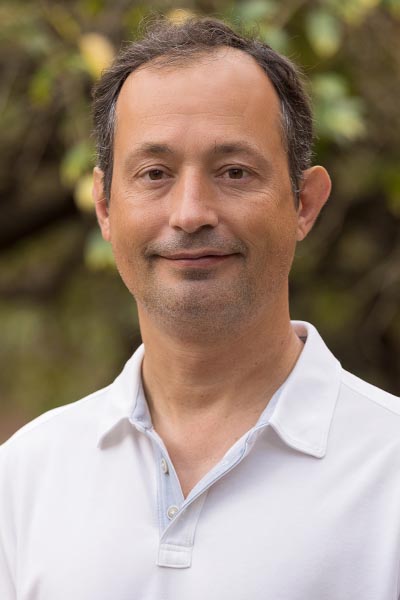
Dr. Matteo Pellegrini
email: matteop@mcdb.ucla.edu
phone: (310) 825-0012
office: 5000D Terasaki Life Science Bldg
website
Research Interests
Our lab is interested in the development of computational approaches to interpret genomic data. We seek to develop large-scale models of transcriptional and epigenetic regulation as well as signal transduction. Our approach is to build models that integrate varied data that sheds light on these phenomena. This data is produced using the latest generation of high throughput sequencers. Our research focuses on the development of both low and high-level analyses. For instance we are developing suites of tools for the analysis of high throughput sequencing data, including epigenomics and transcriptomics. Our goal is to make these tools, and the resulting databases, generally available to the scientific community.
Selected Publications
Fu K, Bonora G, Pellegrini M, "Interactions between core histone marks and DNA methyltransferases predict DNA methylation patterns observed in human cells and tissues", Epigenetics (2019). [link]
Weiss DI, Ma F, Merleev AA, Maverakis E, Gilliet M, Balin SJ, Bryson BD, Ochoa MT, Pellegrini M, Bloom BR, Modlin RL., "IL-1beta Induces the Rapid Secretion of the Antimicrobial Protein IL-26 from Th17 Cells", J Immunol 203 (4): 911-921 (2019).
Snir S, Farrell C, Pellegrini M, "Human epigenetic ageing is logarithmic with time across the entire lifespan", Epigenetics 14 (9): 912-926 (2019).
Shigeta A, Huang V, Zuo J, Besada R, Nakashima Y, Lu Y, Ding Y, Pellegrini M, Kulkarni RP, Hsiai T, Deb A, Zhou B, Nakano H, Nakano A., "Endocardially Derived Macrophages Are Essential for Valvular Remodeling", Dev Cell 48 (5): 617-630 (2019).
R Andrade P, Mehta M, Lu J, M B Teles R, Montoya D, O Scumpia P, Nunes Sarno E, Ochoa MT, Ma F, Pellegrini M, Modlin RL., "The cell fate regulator NUPR1 is induced by Mycobacterium leprae via type I interferon in human leprosy", PLoS Negl Trop Dis 13 (7): (2019). [link]
Montoya DJ, Andrade P, Silva BJA, Teles RMB, Ma F, Bryson B, Sadanand S, Noel T, Lu J, Sarno E, Arnvig KB, Young D, Lahiri R, Williams DL, Fortune S, Bloom BR, Pellegrini M, Modlin RL., "Dual RNA-Seq of Human Leprosy Lesions Identifies Bacterial Determinants Linked to Host Immune Response", Cell Rep 26 (13): 3574-3585 (2019).
Montoya D, Mehta M, Ferguson BG, Teles RMB, Krutzik SR, Cruz D, Pellegrini M, Modlin RL, "Plasticity of antimicrobial and phagocytic programs in human macrophages", Immunology 156 (2): 164-173 (2019).
Ma F, Pellegrini M, "ACTINN: Automated Identification of Cell Types in Single Cell RNA Sequencing", Bioinformatics (2019). [link]
Ma F, Fuqua BK, Hasin Y, Yukhtman C, Vulpe CD, Lusis AJ, Pellegrini M, "A comparison between whole transcript and 3' RNA sequencing methods using Kapa and Lexogen library preparation methods", BMC Genomics 20: (2019). [link]
Leung CS, Douglass SM, Morselli M, Obusan MB, Pavlyukov MS, Pellegrini M, Johnson TL, "H3K36 Methylation and the Chromodomain Protein Eaf3 Are Required for Proper Cotranscriptional Spliceosome Assembly", Cell Rep 27 (13): 3760-3769 (2019).
Frausto RF, Chung DD, Boere PM, Swamy VS, Duong HNV, Kao L, Azimov R, Zhang W, Carrigan L, Wong D, Morselli M, Zakharevich M, Hanser EM, Kassels AC, Kurtz I, Pellegrini M, Aldave AJ., "ZEB1 insufficiency causes corneal endothelial cell state transition and altered cellular processing", PLoS One 14 (6): (2019). [link]
Fan X, Han W, Teng L, Jiang P, Zhang X, Xu D, Li C, Pellegrini M, Wu C, Wang Y, Kaczurowski MJS, Lin X, Tirichine L, Mock T, Ye N., "Single-base methylome profiling of the giant kelp Saccharina japonica reveals significant differences in DNA methylation to microalgae and plants", New Phytol (2019). [link]
Charbonnier LM, Cui Y, Stephen-Victor E, Harb H, Lopez D, Bleesing JJ, Garcia-Lloret MI, Chen K, Ozen A, Carmeliet P, Li MO, Pellegrini M, Chatila TA, "Functional reprogramming of regulatory T cells in the absence of Foxp3", Nat Immunol 20 (9): 1208-1219 (2019).
Cantarella S, Carnevali D, Morselli M, Conti A, Pellegrini M, Montanini B, Dieci G:, "Alu RNA Modulates the Expression of Cell Cycle Genes in Human Fibroblasts", Int J Mol Sci 20: (2019).
Bulterys PL, Toesca IJ, Norris MH, Maloy JP, Fitz-Gibbon ST, France B, Toffig B, Morselli M, Somprasong N, Pellegrini M, Schweizer HP, Tuanyok A, Damoiseaux R, French CT, Miller JF., "An in situ high-throughput screen identifies inhibitors of intracellular Burkholderia pseudomallei with therapeutic efficacy", Proc Natl Acad Sci U S A 116 (37): 18597-18606 (2019).
Research Interests
Morphogenesis of sensory neurons and skin
Morphogenesis is the process by which cells adopt their specific shapes, sizes, and relationships with neighboring cells. Our lab studies the morphogenesis of developing skin cells and sensory neurons, which together mediate touch sensation. The skin at early developmental stages consists of two epithelial layers, each with distinct functions and morphologies. Sensory neurons project elaborately branched cellular processes called peripheral axons into the territory between the two skin layers to detect touch stimuli. We investigate how each of these cell types adopts its distinct morphological features and how skin cells and neurons influence each other?s morphogenesis.
To study these questions we use zebrafish embryos and larvae as a model. Because zebrafish eggs are externally fertilized and their embryos are optically clear, cellular behaviors can be imaged in live animals. Transgenic lines allow us to visualize specific cells and subcellular processes, laser-based techniques allow us to damage cells at precise times and places to study repair, and genetic manipulations provide insight into the molecular underpinnings of cellular behaviors. By studying basic cellular processes we hope to shed light on how they are impacted by damage and disease.
Selected Publications
Julien, D.P., Chan, A.W., Barrios, J., Mathiaparanam, J., Douglass, A., Wolman, M. A. and A. Sagasti, "Zebrafish expression reporters and mutants reveal that the IgSF cell adhesion molecule Dscamb is required for feeding and survival", Journal of Neurogenetics 1-17 (2018).
Rasmussen, J.P., Vo, N-T, and A. Sagasti, "Fish scales dictate the pattern of adult skin innervation and vascularization", Developmental Cell 46 (3): 344-359 (2018).
Madigan, C.A., Cambier, C.J., Kelly-Scumpia, KM, Scumpia, P.O., Cheng, T.Y., Zailaa, J., Bloom, B.R., Moody, D.B., Smale, S.T., Sagasti, A., Modlin, R.L., and L. Ramakrishnan, "A macrophage response to mycobacterium leprae phenolic glycolipid initiates nerve damage in leprosy", Cell 170 (5): 973-985 (2017).
Rasmussen, J.P., and A. Sagasti, "Learning to swim, again: Axon regeneration in fish", Experimental Neurology 287 (3): 318-330 (2016).
Lulla, A., Barnhill, L., Bitan, G., Ivanova, M.I., Nguyen, B., O'Donnell, K., Stahl, M.C., Yamashiro, C., Klarner, F.G., Schrader, T., Sagasti, A., and J.M. Bronstein, "Neurotoxicity of the Parkinson's Disease-Associated Pesticide Ziram Is Synuclein-Dependent in Zebrafish Embryos", Environ Health Perspect 124 (11): 1766-1775 (2016).
Rasmussen, J.P., Sack, G.S., Martin, S.M., Sagasti, A., "Vertebrate epidermal cells are broad-specificity phagocytes that clear sensory axon debris", Journal of Neuroscience 3 (2): 559-570 (2015).
Julien, D.P., Sagasti, A., "Synaptic specificity: when the neighbors are away, sensory axons turn promiscuous", Current Biology 24 (24): 1168-1170 (2014).
Chun, R.F., Blatter, E., Elliott, S., Fitz-Gibbon, S., Rieger, S., Sagasti, A., Adams, J.S., Hewison, M., "Cloning of a functional 25-hydroxyvitamin D-1?-hydroxylase in zebrafish (Danio rerio)", Cell Biochemistry and Function 32 (8): 675-682 (2014).
O'Donnell, K.C., Vargas, M.E., and A. Sagasti, "WldS and PGC-1α Regulate Mitochondrial Transport and Oxidation State after Axonal Injury", Journal of Neuroscience 33 (37): 14778-14790 (2013).
Wang F, Julien DP, and A. Sagasti, "Journey to the skin: Somatosensory peripheral axon guidance and morphogenesis", Cell Adhesion and Migration 7 (4): 388-394 (2013).
Palanca, A.M.S., Lee, S.L., Yee, L.E., Joe-Wong, C., Trinh, L.A., Hiroyasu, E., Husain, M., Fraser, S.E., Pellegrini, M. and A. Sagasti, "New transgenic reporters identify somatosensory neuron subtypes in larval zebrafish", Developmental Neurobiology 73 (2): 152-167 (2013).
Palanca, A.M.S. and A. Sagasti, "Optogenetic activation of zebrafish somatosensory neurons using ChEF-tdTomato", Journal of Visualized Experiments 71: (2013).
Fitzmaurice, A.G., Rhodes, S.L., Lulla, A., Murphy, N.P., Lam, H.A., O'Donnell, K.C., Barnhill, L., Casida, J.E., Cockburn, M., Sagasti, A., Stahl, M.C., Maidment, N.T., Ritz, B., and J.M. Bronstein, "Aldehyde dehydrogenase inhibition as a pathogenic mechanism in Parkinson disease", Proc Natl Acad Sci U S A 110 (2): 636-641 (2013).
Issa, F.A., Mock, A.F., Sagasti, A. and D.M. Papazian, "Spinocerebellar ataxia type 13 mutation associated with disease onset in innfancy disrupts axonal pathfinding during neuronal development", Disease Models and Mechanisms 5: 921-929 (2012).
Villegas, R., Martin, S.M., O?Donnell, K.C., Carillo, S.A., Sagasti, A., and Allende, M.L., "Dynamics of degeneration and regeneration in developing zebrafish peripheral axons reveals a requirement for extrinsic cell types", Neural Development 7 (1): (2012).
Research Interests
Selected Publications
Kelly T.J.*, Suzuki H.I.*, Zamudio J.R., Suzuki M., Sharp P.A., "Sequestration of microRNA-mediated target repression by the Ago2 binding partner Fam120a", RNA 25 (10): 1291-1297 (2019).
Bosson A.D. *, Zamudio J.R.*, Sharp P.A., "Endogenous miRNA and target concentrations determine usceptibility to potential ceRNA competition", Molecular Cell 56 (3): 347-359 (2014).
Dimitrova N., Zamudio J.R., Jong R.M., Soukup D., Resnick R., Sarma K., Ward A.J., Raj A., Lee J., Sharp P.A., Jacks T., "LincRNA-p21 activates p21 in cis to promote Polycomb target gene expression and to enforce the G1/S checkpoint", Molecular Cell 54 (5): 777-790 (2014).
Zamudio J.R.*, Kelly T.J.*, Sharp P.A., "Argonaute-bound small RNAs from promoter-proximal RNA Polymerase II", Cell 156 (5): 920-934 (2014).
Sturm N.R., Zamudio J.R., Campbell D.A. (2012), "SL RNA Biogenesis in Kinetoplastids: A Long and Winding Road", In: RNA Metabolism in Trypanosomes (2012).
Flynn R.A.*, Almada A.E.*, Zamudio J.R., Sharp P.A., "Antisense RNA polymerase II divergent transcripts are P-TEFb dependent and substrates for the RNA exosome", Proc. Natl. Sci. USA 26: 10460-10465 (2011).
Werner M, Purta E, Kaminska K.H., Cymerman I.A., Campbell D.A., Mittra B, Zamudio J.R., Sturm N.R., Jaworski J., Bujnicki J.M., "2'-O-ribose methylation of cap2 in human: function and evolution in a horizontally mobile family", Nucleic Acid Res 11: 4756-4768 (2011).
Zamudio J.R., Mittra B., Campbell D.A., Sturm N.R., "Hypermethylated cap 4 maximizes Trypanosoma brucei translation", Mol Micro 5: 1100-1110 (2009).
Zamudio J.R., Mittra B., Wohlschlegel J.A., Sturm N.R., Campbell D.A., "Trypanosoma brucei spliced leader RNA maturation by the cap 1 2'-O-ribose methyltransferase and SLA1 H/ACA snoRNA pseudouridine synthase complex", Mol Cell Biol 5: 1202-1211 (2009).
Mittra B., Zamudio J.R., Bujnicki J.A., Stepinski J., Darzynkiewicz E., Campbell D.A., Sturm N.R., "The TbMTr1 spliced leader RNA cap 1 2'-O-ribose methyltransferase from Trypanosoma brucei acts with substrate specificity", J Biol Chem 6: 3161-3172 (2007).
Zamudio J.R., Mittra B., Foldynová-Trantírková, S., Zeiner G.M., Lukes J., Mittra B., Feder M., Bujnicki J.A., Sturm N.R., Campbell D.A., "The methyltransferase for cap 1 2?-O-ribose on Trypanosoma brucei spliced leader and U1 snRNA", Mol Cell Biol 17: 6084-6092 (2007).
Zamudio J.R., Mittra B., Zeiner G.M., Feder M., Bujnicki J.A., Sturm N.R., Campbell D.A., "Complete cap 4 formation is not required for viability in Trypanosoma brucei", Eukaryotic Cell 5: 905-915 (2006).
Research Interests
We want to understand the molecular biology of how Drosophila embryo cells collaborate to form a tissue. Basement membranes are fundamental to tissue construction. These thin nets of specialized, conserved extracellular proteins underlie epithelial cells and surround muscles and nerves. We have isolated, cloned and sequenced several of the component proteins, such as laminin and collagen, and are now studying mutant forms, the control of production, and interactions during development. Four new proteins are of special interest: Tiggrin, Peroxidasin, DUGT and Papilin.
Tiggrin is a 220kd connector protein at muscle attachment sites. One end of the protein binds to an integrin receptor in the muscle cell membrane. We are looking for Tiggrin?s molecular neighbor at the other end. Tiggrin also occurs elsewhere in embryos and is an excellent substrate for the differentiation of embryonic muscle cells in vitro, which we are studying.
Peroxidasin is the first combination of an enzyme and an extracellular matrix molecule. The cells which make this (170kd)3 trimer use its peroxidase activity during early embryogenesis to remove other cells that undergo programmed cell death. The secreted peroxidase becomes part of the matrix and probably stabilizes it by cross-linking. We are looking for mutants in Drosophila and for functions of peroxidasin in vertebrates.
DUGT is a universal editor/chaperone protein that we isolated and sequenced from Drosophila. This UDP-Glucose transferase distinguishes glycoproteins that are improperly folded and marks them by attaching a glucose residue. The glucose is the recognition signal for the malfolded proteins to interact with a chaperone system of the endoplasmic reticulum. By molecular manipulation we are investigating its key role as a chaperon/folding controller.
Papilin is a basement membrane protein vital during development.
Selected Publications
Fessler, J.H., Kramerova, I., Kramerov, A., Chen, Y., and Fessler, L.I, "Papilin, a novel component of basement membranes, in relation to ADAMTS metalloproteases and ECM development", Intl. J. Biochem. Cell Biol 36: 1079-1084 (2004).
Kramerova, I.A., Kramerov, A.A. and Fessler, J.H., "Alternative Splicing of Papilin and the Diversity of Drosophila Extracellular Matrix during Embryonic Morphogenesis", Dev. Dyn 226: 634-642 (2003).
Brown, N.H., Gregory, S.L., Rickoll, W.L., Fessler, L.I., Prout, M., White, R.A. and Fristrom, J.W., "Talin is essential for integrin function in Drosophila", Dev. Cell 3: 567-579 (2002).
Zuber, C., Fan, J.Y., Guhl, B., Parodi, A., Fessler, J.H., Parker, C. and Roth, J., "Immunolocalization of UDP-glucose:glycoprotein glucosyltransferase indicates involvement of pre-Golgi intermediates in protein quality control", Proc. Natl. Acad. Sci. USA 98: 10710-5 (2001).
Kramerova, I., Kawaguchi, N., Fessler, L., Nelson, R, Chen, Y., Kramerov, A., Kusche-Gullberg, M., Kramer, J.M, Ackley, B., Prockop, D., Fessler, J.H, "Papilin in development: a pericellular protein with a homology to the ADAMTS metalloproteinases", Development 127: 5475-5485 (2000).
Bunch, T.A., Graner, M.W., Fessler, L.I., Fessler, J.H., Schneider, K.D., Kerschen, A., Choy, L., Burgess, B.W. and Brower, D., "The PS2 Integrin Ligand Tiggrin is Required for Proper Muscle Function in Drosophila", Development 125: 1679-1687 (1998).
Parker, C.G., Fessler, L.I., Nelson, R.E. and Fessler, J.H., "Drosophila UDP-glucose: glycoprotein glucosyltransferase: Sequence and characterization of an enzyme that distinguishes between denatured and native proteins", EMBO Journal 14: 1294-1303 (1995).
Nelson, R.E., Fessler, L.I., Takagi, Y., Blumberg, B., Keene, E.R., Olson, P.F., Parker, C.G. and Fessler, J.H., "Peroxidasin: a novel enzyme-matrix protein of Drosophila development", EMBO Journal 13: 3438-3447 (1994).
Fogerty, F.J., Fessler, L.I., Bunch, T.A., Yaron, Y., Parker, C.G., Nelson, R.E., Brower, K.L., Gullberg, D. and Fessler, J.H., "Tiggrin, a novel Drosophila extracellular matrix protein that functions as a ligand for Drosophila PS2 integrins", Development 120: 1747-1758 (1994).
Tepass, U., Fessler, L.I., Aziz, A. and Hartenstein, V., "Embryonic origin of hemocytes and their relationship to cell death in Drosophila", Development 120: 1829-1837 (1994).
Research Interests
Our lab is interested in Genomics, Bioinformatics, and Molecular Evolution. We want to understand the evolution of genomes, including the origin of eukaryotes and the origin of life, and want to relate their evolution to the molecular, cell and developmental events that have occurred. Five specific interests are described below.
Origin of the Multicellular Animals
For years scientists have wanted to know how the multicellular animals originated, but the morphological properties they had to work with were not particularly informative. With molecular sequences available, this has changed and we are obtaining sequences and starting to understand their evolution. We would particularly like to understand the separation of the deuterostomes (vertebrates, echinoderms, etc.) from the protostome (fruit flies, nematodes, etc.) groups and to relate it to the evolution of their genomes and developmental plans. (Nature, 1997).
Prokaryotic Ancestors of Eukaryotes
A fundamental challenge in biology is to discover the origins of the eukaryotic cell. We are searching for the immediate prokaryotic relatives of the eukaryotes. The strongest evidence to date is that eocyte prokaryotes (sulfur metabolizing, hyperthermophilic bacteria) are the immediate relatives of eukaryotes comes from the sequencing of elongation factor Tu genes in our lab (Science, 1992). Other recent evidence on the origin of eukaryotes from our lab have been the identification and characterization of an eukaryotic type I topoisomerase in a hyperthermophile, Methanopyrus, and the X-ray determination of a histone complex in Methanopyrus which has the structure of one-half of an eukaryotic nucleosome.
Genomic analyses
Analyses of complete genomes are providing unprecidented insights into the evolution of eukaryotes and prokaryotes. For example in a recent analyses of complete genomes (Rivera, et al., 1998; Jain, et al., 1999), we showed that both prokaryotes and eukaryotes contain two types of genes, and both types have different inheritances. One class of genes, informational genes (genes primarily involved in translation, transcription, replication, etc.), is a deeply diverging lineage which has been transferred in a tree-like pattern. In contrast, operational genes (genes primarily involved in housekeeping), have been inherited by horizontal transfer. These findings are rapidly changing our perceptions, of the evolution of life, and we are vigorously pursuing genome-level analyses
Computational Genomics
Our lab is also interested in the computational aspects of genomics. In addition to developing methods for studies of genome evolution, we are also developing tools for the identificaiton of genes within genomes. A particularily difficult problem is the determination of the locations of introns and exons within the human genome. Using novel, mathematically optimal algorithms, we are discovering new methods for analysis of the human genome and are deeply involved in the analysis of syntenic regions common to the human and mouse genomes.
Molecular Sequence Analysis
The computational analysis of gene evolution is still in it?s infancy and yet forms the technical basis for the field of molecular evolution. Our lab is currently working on three different aspects of sequence analysis: phylogeny reconstruction, sequence alignment, and the stochastic nature of sequence analysis. These areas are becoming increasingly important as we try to use sequences to probe deeper and deeper into the past.
Selected Publications
Lake, J. A., Larsen, J., Sarna, B., Pu, Y., Hyunmin, K., Zhau, J., and Sinsheimer, J., "Rings Reconcile Genotypic and Phenotypic Evolution within the Proteobacteria", Genome Biology and Evolution 7 (12): 3434-3442 (2015).
Lake, J. A., "Eukaryotic Origins", Phil. Trans. R. Soc. B 370 (2015).
Simpson, L; Douglass, S. , Lake, J. A., Pellegrini, M., and Li, F., "Comparison of the Mitochondrial Genomes and Steady State Transcriptomes of Two Strains of the Trypanosomatid Parasite, Leishmania tarentolae", PLOS Biology (2015). [link]
Rivera, M. C., Maguire, B., and Lake, J. A., "Dissociation of Ribosomes into Large and Small Subunits", Subcellular Fractionation 206-210 (2014).
Rivera, M. C., Maguire, B., and Lake, J. A., "Purification of Polysomes", Subcellular Fractionation 203-205 (2014).
Rivera, M. C., Maguire, B., and Lake, J. A., "Isolation of Ribosomes and Polysomes", Subcellular Fractionation 189-195 (2014).
Rivera, M. C., Maguire, B., and Lake, J. A., "Purification of 70S Ribosomes", Subcellular Fractionation 200-202 (2014). [link]
Rivera, M. C., Maguire, B., and Lake, J. A., "Purification of Ribosomes, Introduction to "Purification of Ribosomes, Ribosomal Subunits, and Polysomes", in 'Subcellular Fractionation"", Subcellular Fractionation 187-188 (2014).
Lake, J. A. and Sinsheimer, J. S., "The Deep Roots of the Rings of Life", Genome Biology and Evolution 5: 2440-2448 (2013). [link]
Sinsheimer, J. S., Little, J. R., and Lake, J.A., "Rooting gene trees without outgroups: EP rooting", Genome Biology and Evolution (2012). [link]
Lake, J. A., "Lynn Margulis (1938-2011)", Nature 480: (2011).
Ragan, M.A., McInerney, J.O. and J.A. Lake, "The network of life: genome beginnings and evolution: Papers of a theme issue compiled and edited by M.A. Ragan, J.O. McInerney and J.A. Lake", Philosophical Transactions of the Royal Society B 364 (1527): 2167-2289 (2009).
Lake, J. A., "Evidence for an early prokaryotic endosymbiosis", Nature 460: 967-971 (2009).
Ragan, M.A. McInerney, J.O. and Lake, J. A., "The network of life: genome beginnings and evolution", Philosophical Transactions of the Royal Society B 364 (1527): 2169-2175 (2009).
Lake, J. A., Skophammer, R. G., Herbold, C. W., and Servin, J. A., "Genome beginnings: Rooting the tree of life", Philosophical Transactions of the Royal Society, Section B 364 (1527): 2177-2185 (2009).
Research Interests
The recent demonstration that eye tissue is formed after ectopic expression of the eyeless gene suggests that how tissues differentiate is driven by a limited number of "master" genes. Differentiated tissues are commonly formed through repetition of cell types. The model is that changing from one type to another is a consequence of overexpression of the "master" gene inhibiting another.. The ability of any gene to have this effect is the basis for an overexpression screen to select such key genes. Such a screen is now underway in my lab through bringing a mobile copy of the yeast enhancer element that binds the transcription factor Gal4 to lie adjacent to previously unknown genes. Activation of the enhancer through Gal4 expression will be recognized through changes in cellular differentiation if the enhancer is adjacent to a key gene. In particular, cells in the wing margin differentiate into three kinds of sensory bristles plus trichome-bearing cell. I am interested in finding the genes that determine these choices and their pattern in the margin, through overexpression changes in phenotype. Molecular genetic analysis will be used to identify their normal roles in development.
Selected Publications
Takashima, S, Mirtchyan, M. Younossi-Hartenstein, A., Merriam, J.R. and Hartensteinn, V., "The behavior of Drosophila adult hindgut stem cells controlled by Wnt and Hh signaling", Nature 454: 651-655 (2008).
Evans, C. Merriam, J.R., and Aguilera, R.J., "Drosophila acid DNase is a homolog of mammalian DNase II", Gene 295: 61-70 (2002).
Johnson, L., and Merriam, J., "Interactive Genetics", Hayden-McNeil Publishing, Inc. Plymouth, MI (2001).
Brummel, T., Abdollah, S., Haerry, T.E., Shimell, M.J., Merriam, J., Raftery, L., Wrana, J.L., and O?Connor, M.B., "The Drosophila Activin receptor Baboon signals through dSmad2 and controls cell proliferation but not patterning during larval development", Genes & Development 13: 98-111 (1999).
Merriam, J., "Antonio and Sturt: an interaction", In: Int. J. Dev. Biol 42: 525-527 (1998).
Saebøe-Larssen S, Lyamouri M, Merriam J, Oksvold MP, Lambertsson A., "Ribosomal protein insufficiency and Minute syndrome in Drosophila: a dose-response relationship", Genetics 148: 1215-1224 (1998).
Casares, F., Bender, W., Merriam, J., and Sanchez-Herrero, E., "Interactions of Drosophila Ultrabithorax Regulatory Regions with Native and Foreign Promoters", Genetics 145: 123-137 (1997).
Merriam, J., "Drosophila Genome", In: Molecular Biology and Biotechnology (1995).
Andersson, S., Saebøe-Larssen, S., Lambertsson, A., Merriam, J. and Jacobs-Lorena, M., "A Drosophila third-chromosome minute locus encodes a ribosomal protein", Genetics 137: 513-520 (1994).
Crozatier, M., Kongsuwan, K., Ferrer, P., Merriam, J., Lengyel J., and Vincent A., "Single amino acid exchanges in separate domains of the Drosophila serendipity delta zinc finger protein cause embryonic and sex biased lethality", Genetics 131: 905-916 (1992).
Chipperfield, M., Maidek, M., Pearson, P., Ashburner, M., Glover, D.M., Saunders, R.D., Duncan, I., Hartl, D., Merriam J., Lee, G., Johnsen, J., Kafatos, F.C., Siden-Kigmos, I., Louis, C., Savakis, C., "Genome maps 1991 (wall chart)", Science 254: 247-262 (1991).
Merriam, J., M. Ashburner, D.L. Hartl, and F.C. Kafatos, "Toward cloning and mapping the genome of Drosophila", Science 254: 221-225 (1991).
Pignoni, F., R. Baldarelli, E. Steingrimsson, R. Diaz, A. Patapoutian, J. Merriam and J. Lengyel, "The Drosophila gene tailless is expressed at the embryonic termini and is a member of the steroid receptor super family", Cell 62: 151-163 (1990).
Merriam, J., S. Adams, G. Lee, and D. Krieger, "Cloned genes of Drosophila melanogaster and literature guide", In: Genetic Maps 5: (1990).
Merriam, J., "The Drosophila Clone List by Chromosome Location", In: D.I.S 67: 111-136 (1988).
Research Interests
Selected Publications
Andrews S., Snowflack D.R., Clark I.E., Gavis E.R., "Multiple mechanisms collaborate to repress nanos translation in the Drosophila ovary and embryo", RNA 17: 967-977 (2011).
Clark, I.E.*, Romero-Calderon, R.*, Olson, J.M., Jaworski, L., Lopatto, D. and Banerjee, U., "?Deconstructing? scientific research ? a practical and scalable pedagogical tool to provide evidence-based science instruction", PLoS Biology 7 (12): (2009).
Yun, J., Cao, J.H., Dodson, M.W., Clark, I.E., Kapahi, P., Chowdhury, R.B. and Guo, M., "Loss-of-function analysis suggests that Omi/HtrA2 is not an essential component of the pink1/parkin pathway in vivo", J. Neuroscience 28: 14500-14510 (2008).
Clark, I.E.*, Dodson, M.W.*, Jiang, C.*, Cao, J.H., Huh, J.R., Seol, J.H., Yoo, S.J., Hay, B.A. and Guo, M, "Drosophila pink1 is required for mitochondrial function and interacts genetically with parkin", Nature 441: 1162-1166 (2006).
Ye, B., Petritsch, C., Clark, I.E., Gavis, E.R., Jan, L.Y. and Jan, Y.N., "nanos and pumilio are essential for dendrite morphogenesis in Drosophila peripheral neurons", Current Biology 14: 314-321 (2004).
Forrest, K.M., Clark, I.E., Jain, R.A. and Gavis, E.R., "Temporal complexity within a translational regulatory element in nanos mRNA", Development 131: 5849-5857 (2004).
Clark, I.E.*, Dobi, K.C.*, Duchow, H.K.*, Vlasak, A.N. and Gavis, E.R., "A common translational control mechanism functions in axial patterning and neuroendocrine signalling in Drosophila", Development 129: 3325-3334 (2002).
Clark, I.E., Wyckoff, D. and Gavis, E.R., "Synthesis of the posterior determinant Nanos is spatially restricted by a novel cotranslational regulatory mechanism", Current Biology 10: 1311-1314 (2000).
Clark, I.E., Jan. L.Y. and Jan, Y.N., "Reciprocal localization of Nod and kinesin fusion proteins indicates microtubule polarity in the Drosophila oocyte, epithelium, neuron and muscle", Development 124: 461-470 (1997).
Clark, I., Giniger, E., Ruohola-Baker, H., Jan, L.Y. and Jan, Y.N., "Transient posterior localization of a kinesin fusion protein reflects anteroposterior polarity of the Drosophila oocyte", Current Biology 4: 289-300 (1994).
Wang, H., Clark, I., Nicholson, P.R., Herskowitz, I. and Stillman, D., "The Saccharomyces cerevisiae SIN3 gene, a negative regulator of HO, contains four paired amphipathic helix motifs", Molecular and Cellular Biology 10: 5927-5936 (1990).
Sternberg, P.W., Stern, M.J., Clark, I. and Herskowitz, I., "Activation of the yeast HO gene by release from multiple negative controls", Cell 48: 567-577 (1987).
Research Interests
Selected Publications

Dr. Mitra Hooshmand
email: mhooshmand@ucla.edu
phone: 310-206- 3987
office: 325 Hershey Hall
website
Research Interests
My primary area of research was at the axis of neurodegeneration, inflammation, and stem cell biology. My work focused on identification of repair mechanisms of cell replacement strategies for the treatment of spinal cord injuries (SCI).
My experience in the field of SCI was over a decade long. During this period, I worked closely with Dr. Aileen Anderson and was involved in planning and execution of many studies investigating the role of the microenvironment on stem cell fate and migration properties. I worked with multiple animal models of SCI as well as in vitro studies involving human neural stem cells.
For my dissertation and beyond, I identified key components of the peripheral immune system in modulating human neural stem cell properties. When I first began these studies, there were only a handful of papers addressing the role of the inflammatory cascade on stem cells. My studies triggered much of our current understanding in this area. We have identified the both cellular and humoral innate immune response candidates in directing stem cell fate and migration both in vitro and in vivo.
As well, some of my data using stem cells in a cervical model of SCI was used as the basic science evidence for the initiation of a Phase I/II FDA-approved clinical trial investigating the role of human neural stem cell transplantation after cervical SCI in humans.
Selected Publications
Anderson AJ, Piltti KM, Hooshmand MJ, Nishi RA, Cummings BJ., "Preclinical Efficacy Failure of Human CNS-Derived Stem Cells for Use in the Pathway Study of Cervical Spinal Cord Injury", Stem Cell Reports (2017). [link]
Hooshmand MJ, Nguyen HX, Piltti KM, Benavente F, Hong S, Flanagan L, Uchida N, Cummings BJ, Anderson AJ., "Neutrophils Induce Astroglial Differentiation and Migration of Human Neural Stem Cells via C1q and C3a Synthesis", J Immunol (2017). [link]
M.J. Hooshmand, H.X. Nguyen, H. Saiwai, J. Maddox, A. Salehi, A. Lakatos, R. Nishi, D. Salazar, N. Uchida, and A. J. Anderson., "Systemic neutrophil depletion modulates the migration and fate of transplanted human neural stem cells to rescue functional repair", J Neurosci (2017). [link]
M.J. Hooshmand, B.J. Cummings, and A.J. Anderson. , "Improved pre-embedded immuno-electron microscopy procedures to preserve myelin integrity in mammalian central nervous tissue. ", In: Microscopy: advances in scientific research and education (2014).
Hooshmand MJ, Galvan MD, Partida E, Anderson AJ., "Characterization of recovery, repair, and inflammatory processes following contusion spinal cord injury in old female rats: is age a limitation?", Immuno Aging (2014). [link]
Anderson AJ, Haus DL, Hooshmand MJ, Perez H, Sontag CJ, Cummings BJ., "Achieving stable human stem cell engraftment and survival in the CNS: is the future of regenerative medicine immunodeficient?", Regen Med (2011). [link]
Hooshmand MJ, Sontag CJ, Uchida N, Tamaki S, Anderson AJ, Cummings BJ., "Analysis of host-mediated repair mechanisms after human CNS-stem cell transplantation for spinal cord injury: correlation of engraftment with recovery", PLoS One (2009). [link]
B.J. Cummings, M.J. Hooshmand, D.L. Salazar, and A.J. Anderson., "Human neural stem cell mediated repair of the contused spinal cord: Timing the microenvironment", In: From Development to Degeneration and Regeneration of the Nervous System. (2008).
Galvan MD, Luchetti S, Burgos AM, Nguyen HX, Hooshmand MJ, Hamers FP, Anderson AJ., "Deficiency in complement C1q improves histological and functional locomotor outcome after spinal cord injury", J Neurosci (2008). [link]
Cummings BJ, Uchida N, Tamaki SJ, Salazar DL, Hooshmand M, Summers R, Gage FH, Anderson AJ., "Human neural stem cells differentiate and promote locomotor recovery in spinal cord-injured mice", PNAS (2005). [link]
Research Interests
I teach MCDB 104AL, a discovery based laboratory course on developmental biology. In the class we use the purple sea urchin, Strongylocentrotus purpuratus, as the model organism. During the quarter, students will attempt to clone and study the expression patterns of genes involved in sea urchin embryogenesis. In addition to MCDB 104AL, I also teach MCDB 138, MCDB 141 and MCDB 191.
Selected Publications
Lee, P.Y., Costumbrado, J., Hsu, C. and Kim, Y.H., "Agarose gel electrophoresis for the separation of DNA fragments", Journal for Visualized Experiments 62: (2012).
Nam, J., Su, Y.H., Lee, P.Y., Robertson, A.J., Coffman, J.A. and Davidson, E.H., "Cis-regulatory control of the nodal gene, initiator of the sea urchin oral ectoderm gene network", Developmental Biology 306: 860-869 (2007).
Lee, P.Y., Nam, J. and Davidson, E.H., "Exclusive developmental functions of gatae cis-regulatory modules in the Strongylocentrorus purpuratus embryo", Developmental Biology 307: 434-445 (2007).
Sea Urchin Genome Consortium, "). The Genome of the Sea Urchin Strongylocentrotus purpuratus", Science 314: 941-952 (2006).



